
Category of Astronomical Heritage: tangible immovable
University Observatory Vienna-Währing, Austria

Format: IAU - Outstanding Astronomical Heritage
Description
Geographical position - InfoTheme: Astronomy from the Renaissance to the mid-twentieth century
Entity: 148
Subentity: 1
Version: 7
Status: PUB
Date: 2022-09-28 04:58:23
Author(s): Gudrun Wolfschmidt
Vienna University Observatory (Universitätssternwarte Wien), Institute for Astronomy,
Türkenschanzstraße 17, A-1180 Wien-Währing, Österreich/Austria
See also: Observatories in Vienna in the 18th and 19th Century:
- Marinoni Observatory, Mölkerbastei, Vienna (1720s)
- Vienna Jesuit Observatory (1733)
- Old Vienna University Observatory (1754--1879), today Austrian Academy of Sciences
- Kuffner Observatory, Vienna-Ottakring (1886)
Location - InfoTheme: Astronomy from the Renaissance to the mid-twentieth century
Entity: 148
Subentity: 1
Version: 3
Status: PUB
Date: 2022-05-28 02:49:09
Author(s): Gudrun Wolfschmidt
Latitude 48°13’55’’N, Longitude 16°20’03’’E, Elevation 236m above sea level.
IAU observatory code - InfoTheme: Astronomy from the Renaissance to the mid-twentieth century
Entity: 148
Subentity: 1
Version: 1
Status: PUB
Date: 2018-08-17 12:12:02
Author(s): Gudrun Wolfschmidt
045
Description of (scientific/cultural/natural) heritage - InfoTheme: Astronomy from the Renaissance to the mid-twentieth century
Entity: 148
Subentity: 1
Version: 11
Status: PUB
Date: 2022-10-02 14:20:30
Author(s): Gudrun Wolfschmidt
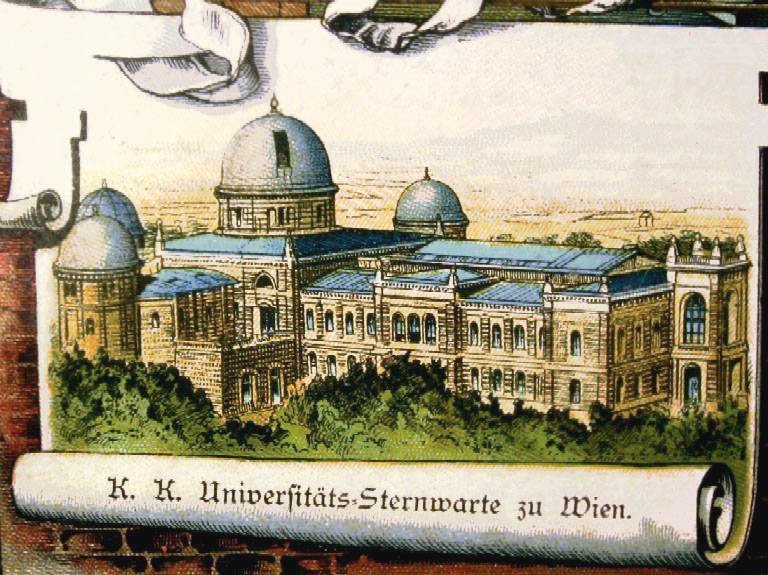
Fig. 1. University Observatory Vienna-Währing (*1879), (Weiß, Edmund: Bilder-Atlas der Sternenwelt. Eßlingen bei Stuttgart: Schreiber 1888)
The planning of the construction, which should also fulfill representative purposes, was transferred to the architects Fellner & Helmer, Hermann Helmer (1849--1919) und Ferdinand Fellner (der Jüngere, 1847--1916), who had become known through the construction of theaters and concert halls.The observatory was built according to the ideas of the observatory director Carl Ludwig Littrow (1811--1877) as a combination of residential and observation wing. The site at the old Türkenschanze covers 5.5 hectares.
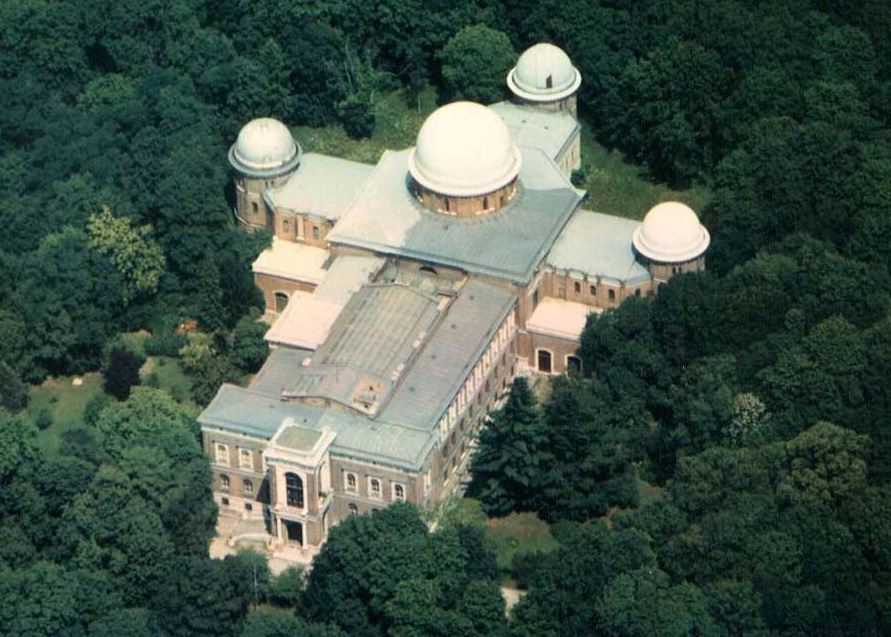
Fig. 2a. University Observatory Vienna-Währing from the bird’s eye view (Wikipedia, CC2, photo: Thomas Posch)
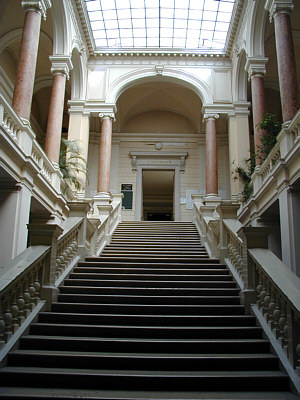
Fig. 2b. University Observatory Vienna - the impressive stairway leading to the first floor
From 1874 to 1879, the observatory was constructed in Latin cross shape (see under "Comparison"). The front view shows the classical 3-domes fassade like e.g. Pulkovo, St. Petersburg, or APO Potsdam Observatories, typical for the 19th century.
The center of the building is the main dome of 14m diameter, surrounded by three smaller domes at the end of the northern, western and eastern wings. The south wing housed the living and working spaces for the astronomers. With a length of 101-m and a width of 73-m, it is still the largest observatory building in the world.
The complete relocation of the Institute of Astronomy was completed in 1882. The opening ceremony took place on 5 June 1883 in the presence of Emperor Franz Joseph I. (1830--1916). The first director of the new observatory was Edmund Weiss (1837--1917).
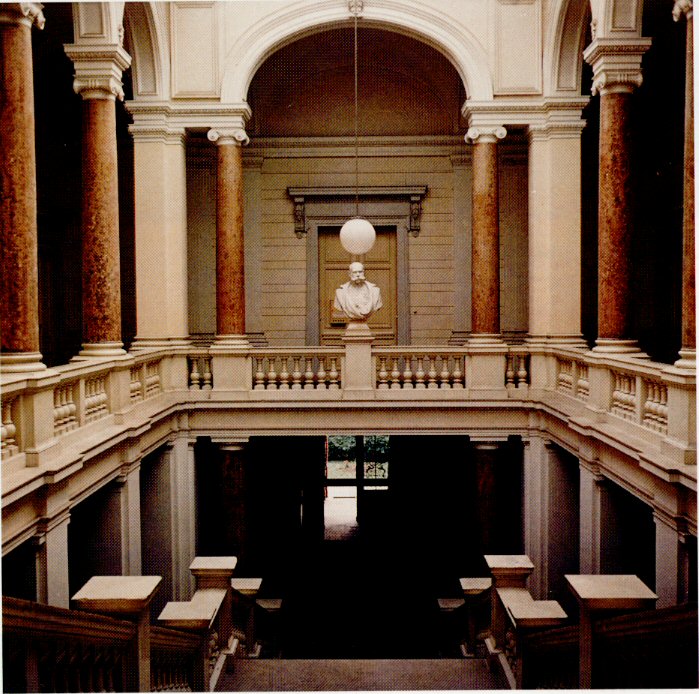
Fig. 3a. University Observatory Vienna, first floor
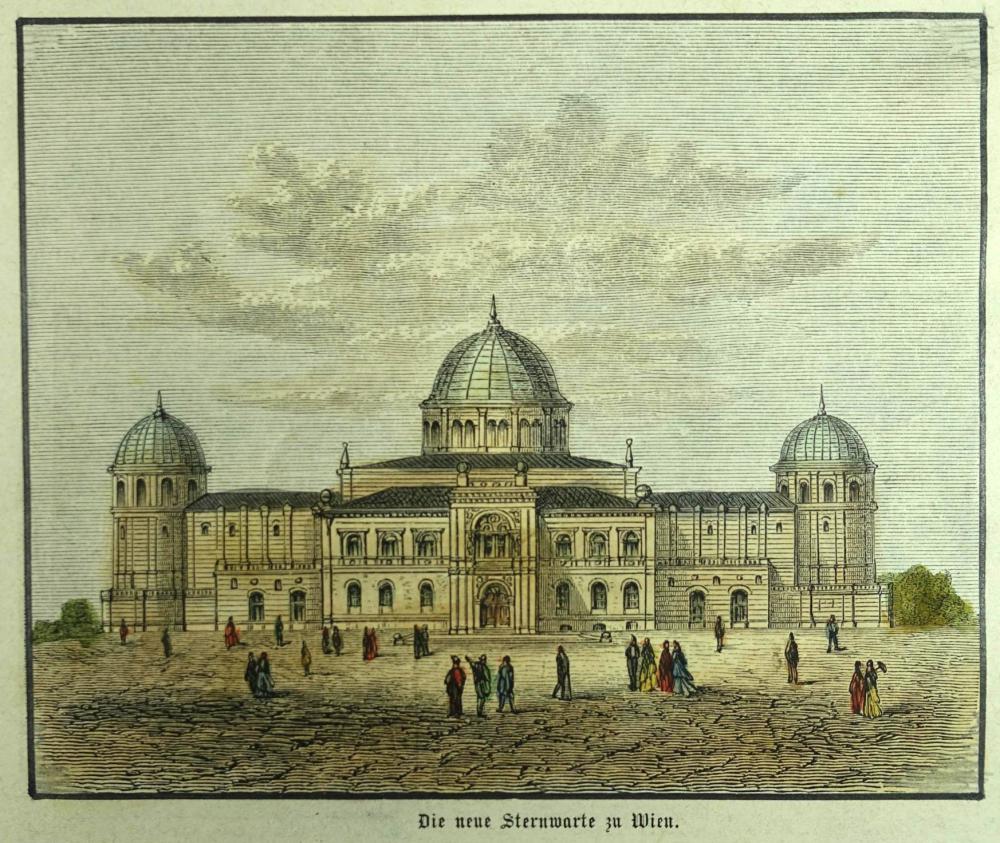
Fig. 3b. University Observatory Vienna - 3-domes fassade (1883)
History - InfoTheme: Astronomy from the Renaissance to the mid-twentieth century
Entity: 148
Subentity: 1
Version: 16
Status: PUB
Date: 2022-10-21 03:02:19
Author(s): Gudrun Wolfschmidt
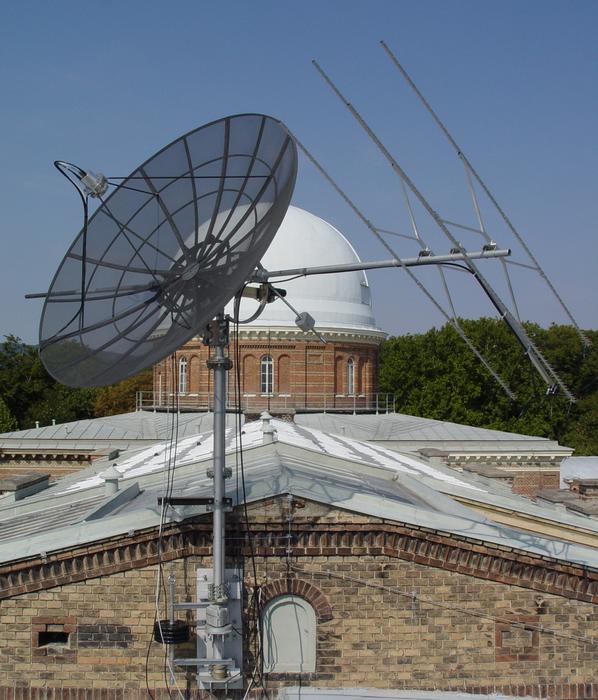
Fig. 4a. Dome of the Large Refractor and Most Satellite receiving station, University Observatory Vienna
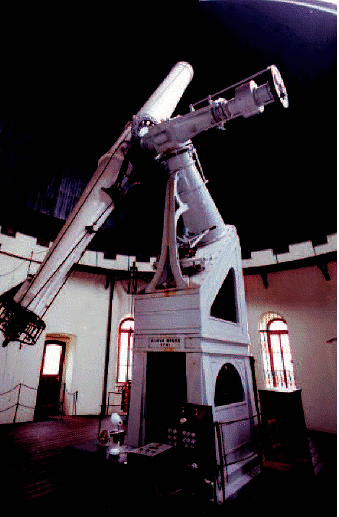
Fig. 4b. 68-cm-Refractor, made by Grubb of Dublin, University Observatory Vienna
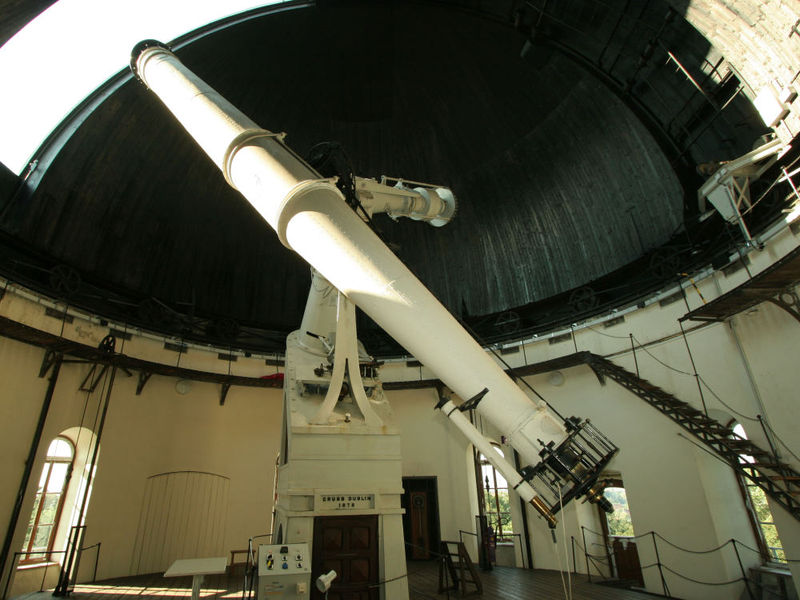
Fig. 4c. 68-cm-Refractor, made by Grubb of Dublin, University Observatory Vienna
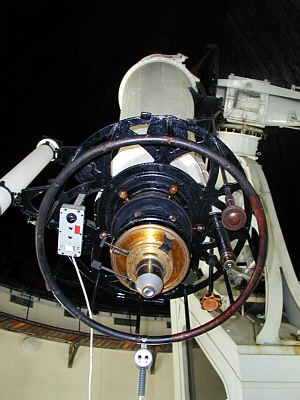
Fig. 4d. Ocular of the 68-cm-Refractor, made by Grubb of Dublin, University Observatory Vienna
Instruments
- Main dome:
Large 68-cm-Refractor (f=10,5m), made by Grubb of Dublin (1878).
It was the largest refractor in the world at the time, surpassed in size only by early reflecting telescopes such as Lord Rosse’s Leviathan in Ireland, the Great Melbourne Telescope, and the 83-cm reflecting telescope at the Observatoire de Toulouse.
But already in 1885, an even larger refractor with 76cm aperture was put into operation at the Pulkovo Observatory, St. Petersburg,.
- Western dome:
Refractor (30cm/520cm), made by Alvan Clark & Sons of Cambridgeport, Massachusetts - Western Meridian hall: Meridian circle by Starke-Reichenbach (now in the round hall) and a transit instrument
- East wing with East dome:
15-cm-Fraunhofer Refractor (formerly the main instrument in the old university observatory).
Now there is a 20-cm-Refractor, made by Starke & Kammerer of Vienna; it was donated by the Technical University in Vienna. - The Eastern Meridian hall is no longer in the original condition: a new meridian circle was planned there, but it was never implemented -- currently, the rooms are used by the library.
- Northern dome:
Comet seeker (16.2cm/150cm), made by Merz of Munich,
then: 40-cm-Reflector, made by Bernhard Schmidt,
now: 80-cm-Cassegrain Reflector (800/6640mm), optics, made by Leningrad Optical Mechanical Association (LOMO), St. Petersburg, Russia
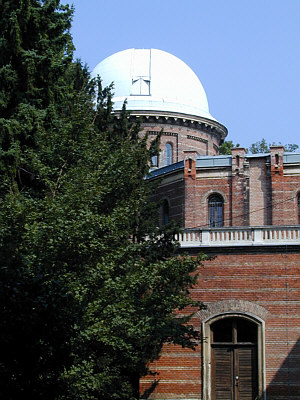
Fig. 5a. Western Dome, University Observatory Vienna
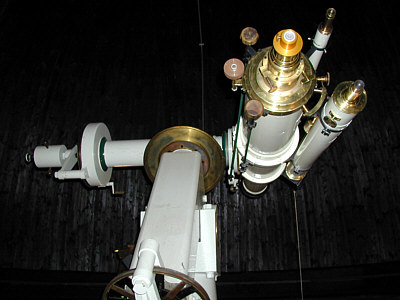
Fig. 5b. 200-mm-Refractor, made by Starke & Kammerer of Vienna, Eastern dome, University Observatory Vienna
Equatorial Coudé Telescope
"Between 1884 and 1892, no fewer than seven coudé equatorials were installed in France, Algeria and Austria. Invented by Maurice Loewy, these equatorials allowed the observer to sit comfortably in a closed room, with all the controls and readings at hand. However they were expensive, they required two flat mirrors, which were a source of concern because of their thermal distortion, and their mechanics was complex and delicate, so that they did not succeed in replacing the conventional equatorials in spite of their advantages. Only two are preserved, in Lyons and in Algiers. We describe in detail these instruments, their history and their use." (Lequeux, 2011)
- Equatorial Coudé Telescope (aperture 38cm, 25m focal length, f/24, diameter of the plane-parallel mirror 54cm), made by Paul Ferdinand Gautier (1842--1909) and the Henry brothers of Paris (1890). The instrument was donated by Albert Salomon Baron von Rothschild in 1885. It is in the western part of the observatory grounds and needs urgent restoration.
The instrument was used by Adolf Hnatek (1876--1960) for research in spectrophotometry.
The first famous instrument of this type was in Paris (1891), introduced by Maurice Loewy (1833--1907). Seven coudé equatorials were built between 1887 and 1893, by Gautier and the Henry brothers in Algiers, Besançon, Lyons, Paris (small and large), Nice and Vienna/Austria.
"The instrument is in a desolate condition, parts of the optics are functional, removed and currently housed in the museum (lens) or optics laboratory (one of the original two plane-parallel mirrors); the building is currently closed. The clockwork drive system was removed around 1930 and used for the Cassegrain reflecting telescope." (https://phaidra.univie.ac.at/o:57452, Handle: 11353/10.57452)
- Star Spectrograph, Toepfer & Son of Potsdam, Prism by Carl Zeiss of Jena (around 1910),
originally used with one 30cm and one 58cm camera
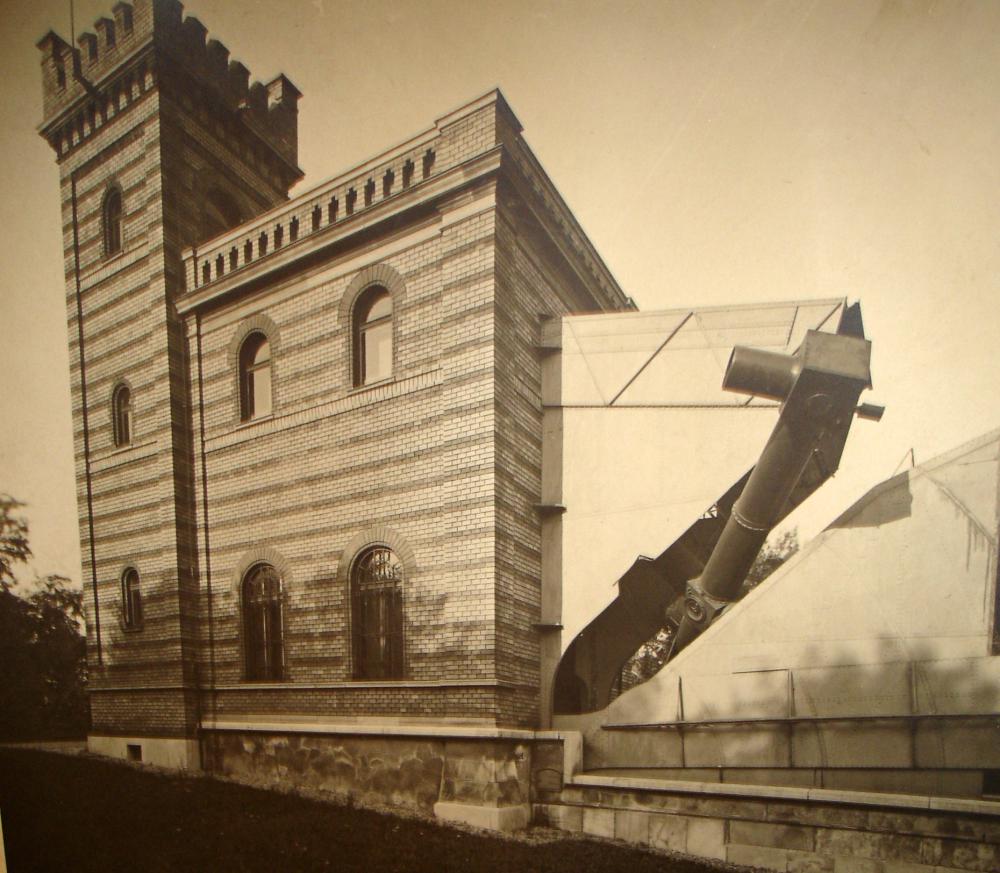
Fig. 6a. Maurice Loewy’s Equatorial Coudé, University Observatory Vienna (photo: Gudrun Wolfschmidt)
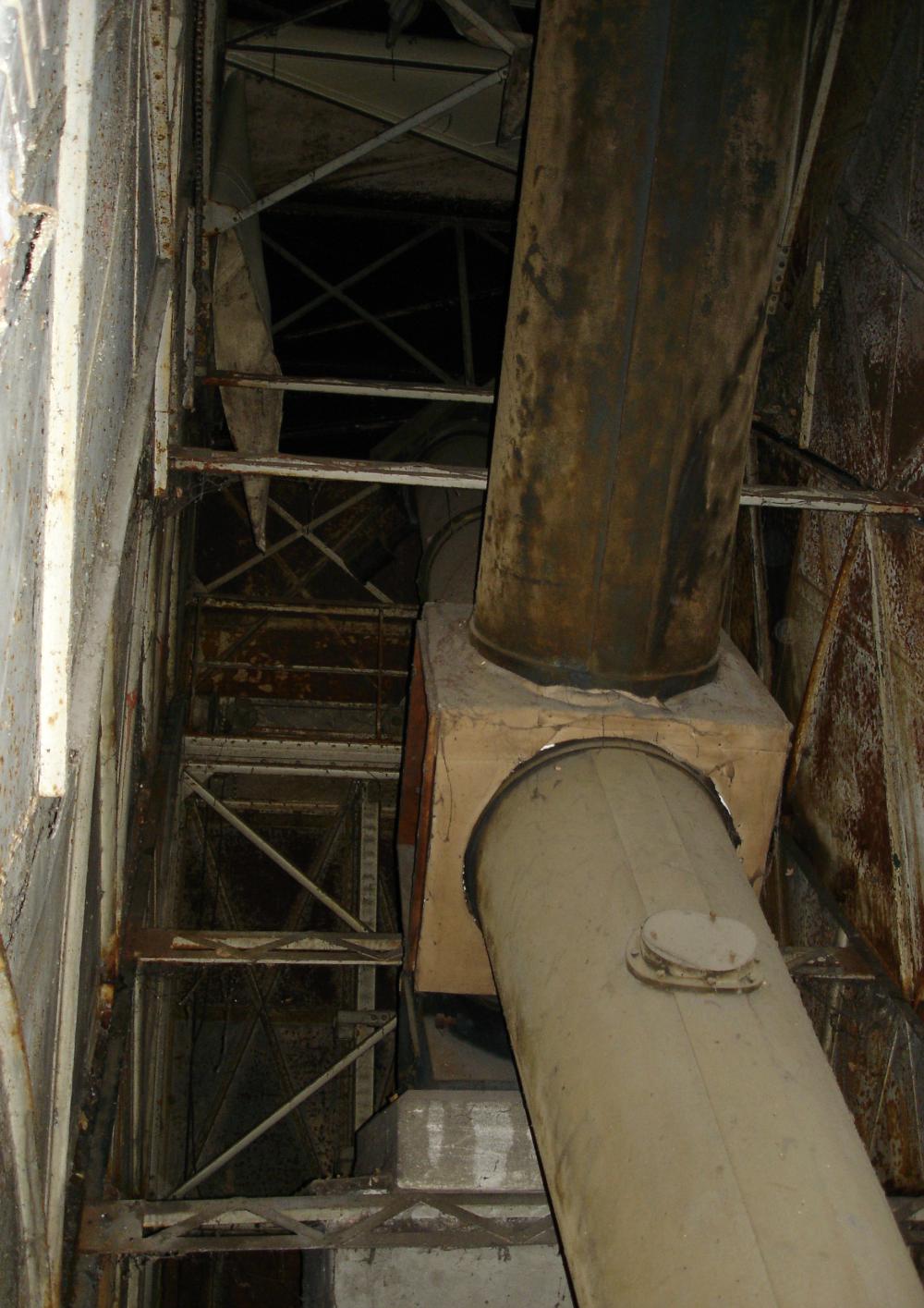
Fig. 6b. Maurice Loewy’s Equatorial Coudé, University Observatory Vienna (photo: Gudrun Wolfschmidt, 2004)
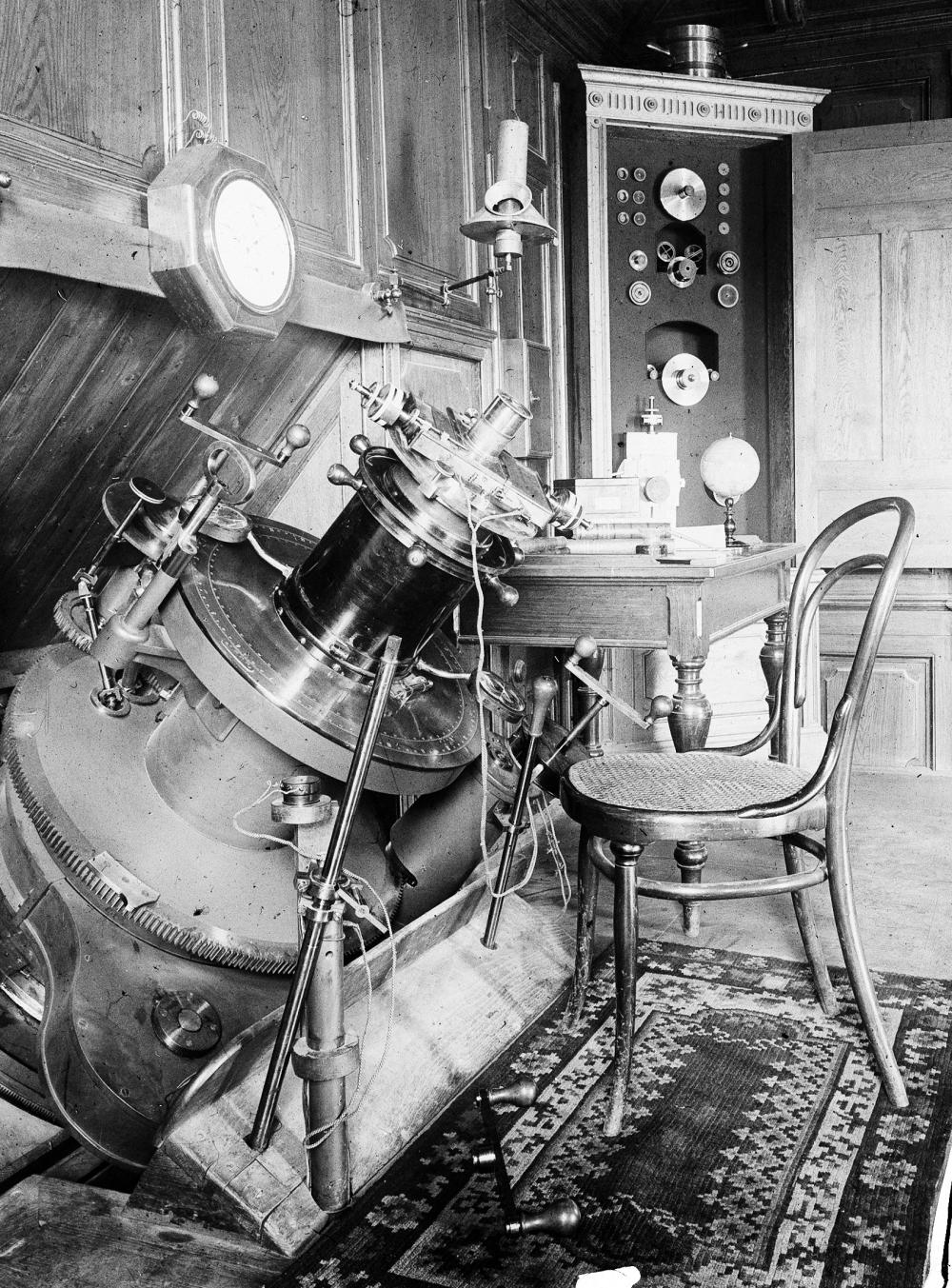
Fig. 6c. Ocular of Maurice Loewy’s Equatorial Coudé, University Observatory Vienna (phaedra x1_1)
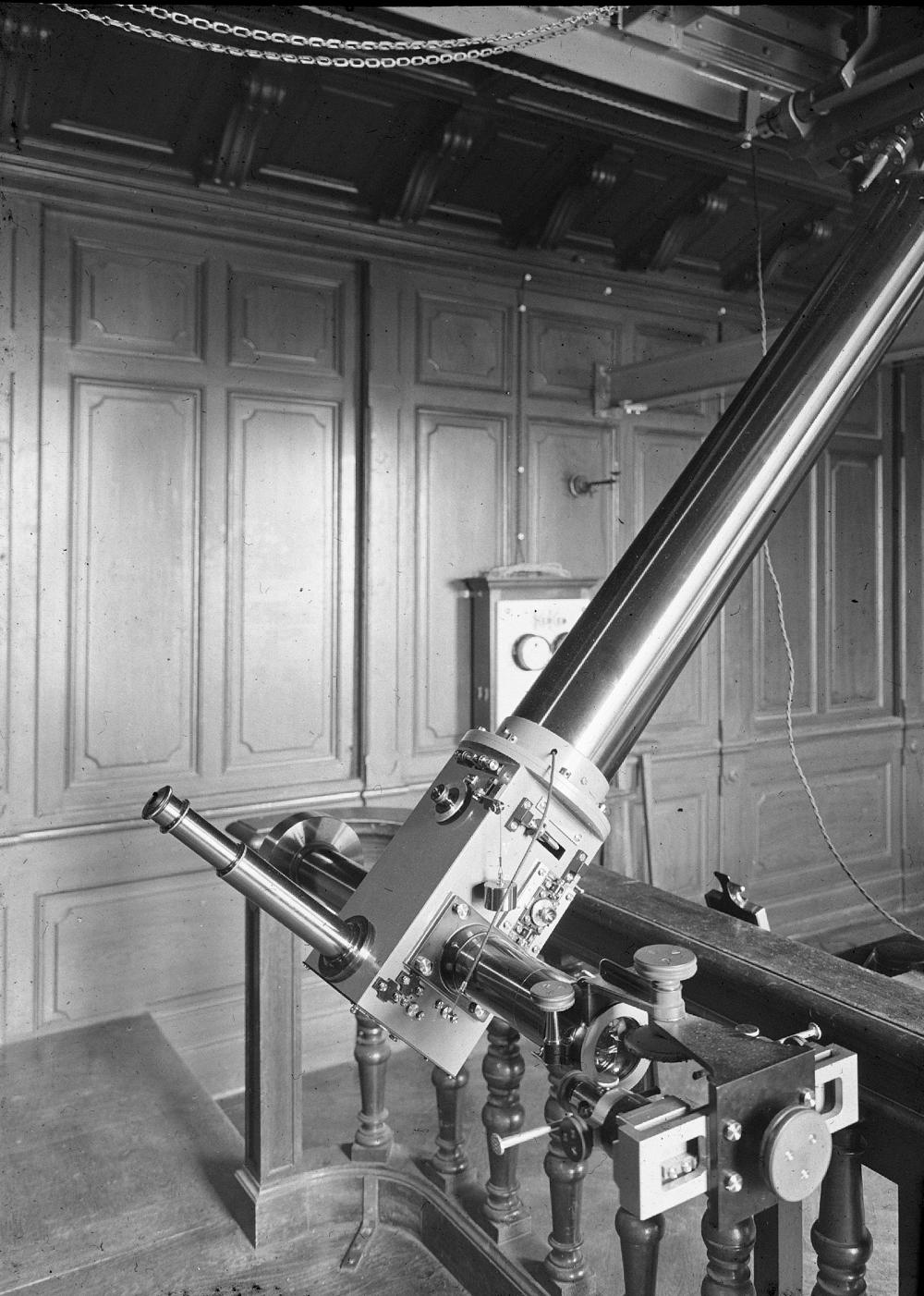
Fig. 6d. Large Spectrograph, used by Adolf Hnatek (1876--1960) with the Equatorial Coudé, University Observatory Vienna (phaedra F_X)
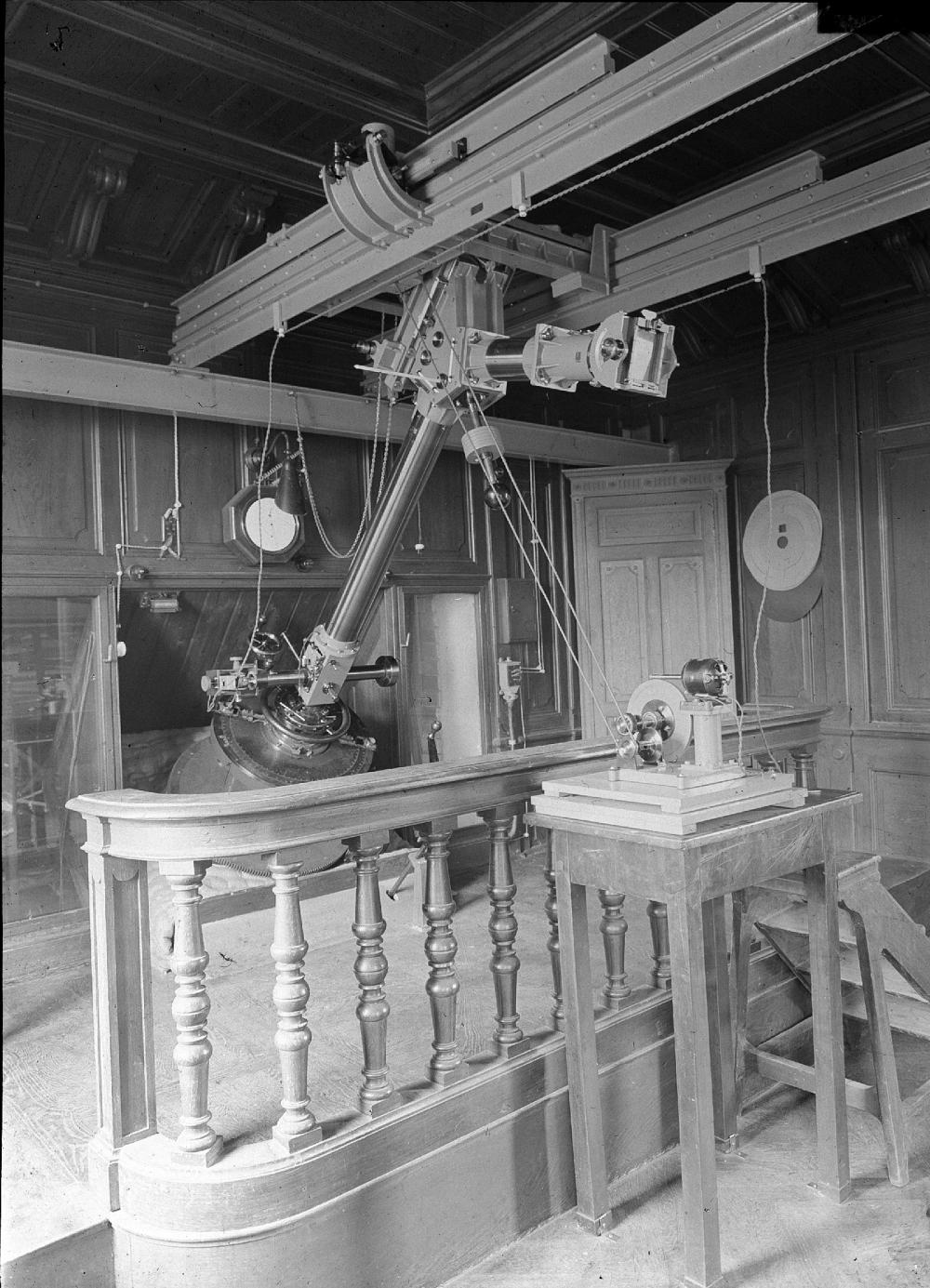
Fig. 6e. Large Spectrograph, used by Adolf Hnatek (1876--1960) with the Equatorial Coudé, University Observatory Vienna (phaedra F31)
Further Instruments outside the main building
- 30-cm-Double Refractor Astrograph (aperture 34cm photographic, 34m focal length),
with visual guiding tube (26cm aperture, 34m focal length),
made by Steinheil of Munich and A. Repsold & Sons of Hamburg (1910), used for photographic observation.
The instrument is almost identical in construction to the Paris "Carte du Ciel" telescope by Paul Gautier from 1885.
- A Zeiss Stereocomparator was donated by Albert Salomon Baron von Rothschild. It was important for the discovery of minor planets (and variable stars).
- Modern Zenith telescope for determining longitude, latitude and time
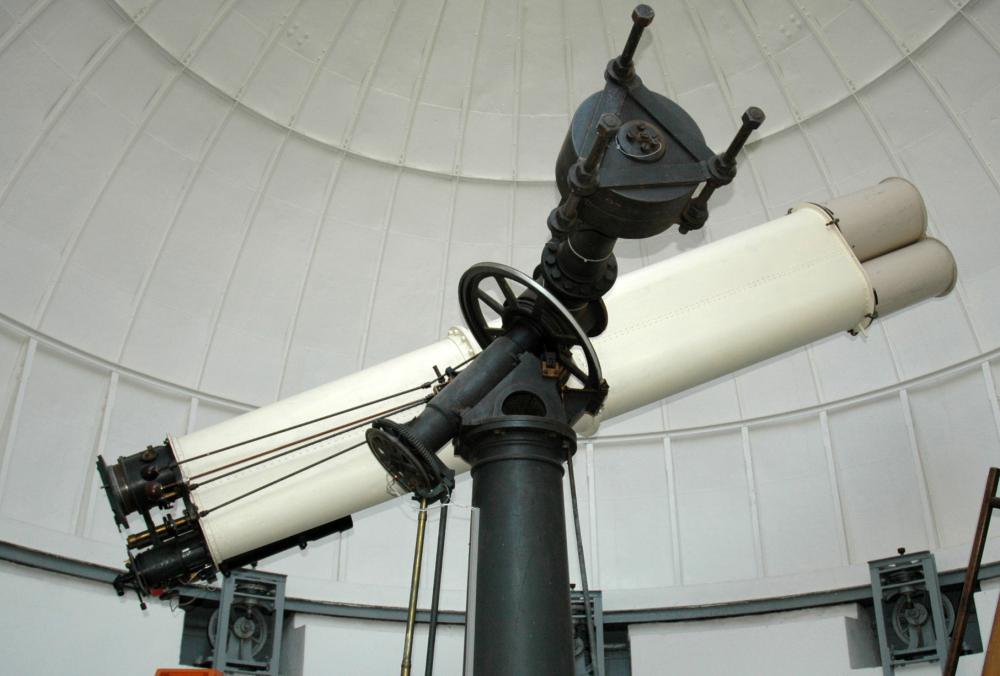
Fig. 7. 30-cm-Astrograph, made by Steinheil of Munich and A. Repsold & Sons of Hamburg (1910), University Observatory Vienna (CC2, Jürgen Hamel)
Directors of the old and new Vienna Observatory
- 1756 to 1792 · Maximilian Hell (1720--1792)
- 1792 to 1817 · Franz de Paula Triesnecker (1745--1817)
- 1819 to 1840 · Johann Josef von Littrow (1781--1840)
- 1842 to 1877 · Karl Ludwig von Littrow (1811--1877)
- 1877 to 1908 · Edmund Weiss (1837--1917)
- 1909 to 1928 · Josef von Hepperger (1855--1928)
- 1928 to 1938 · Kasimir Romuald Graff (1878--1950)
- 1940 to 1945 · Bruno Thüring (1905--1989)
- 1945 to 1949 · Kasimir Romuald Graff (1878--1950)
- 1951 to 1962 · Josef Hopmann (1890--1975)
- 1962 to 1979 · Joseph Meurers (1909--1987)
- 1979 to 1981 · Karl Dragutin Rakos (1925--2011)
- 1981 to 1984 · Werner Tscharnuter (1968 PhD)
- 1984 to 1986 · Michel Breger (*1941)
- 1986 to 1994 · Paul Jackson (1932--2019)
- 1994 to 2005 · Michel Breger (*1941)
- 2006 to 2009 · Gerhard Hensler
- 2009 to 2011 · Franz Kerschbaum
- 2011 to 2012 · Manuel Güdel
- 2012 to 2013 · João Alves
- 2013 to .... · Bodo Ziegler
- .... to pres. · Manuel Güdel
State of preservation - InfoTheme: Astronomy from the Renaissance to the mid-twentieth century
Entity: 148
Subentity: 1
Version: 4
Status: PUB
Date: 2022-10-02 13:19:58
Author(s): Gudrun Wolfschmidt
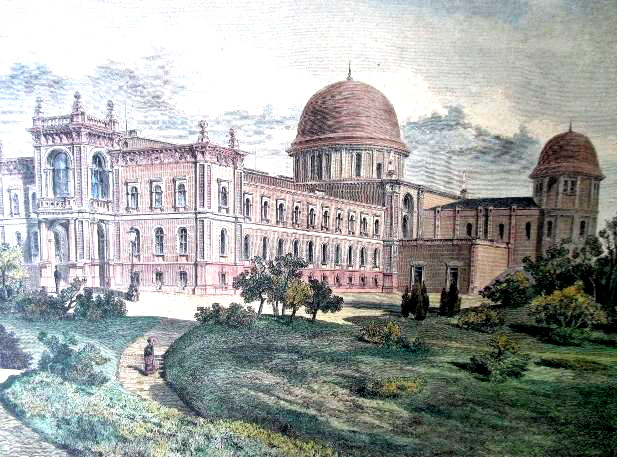
Fig. 8a. University Observatory Vienna-Währing (Kirchner, 1880)
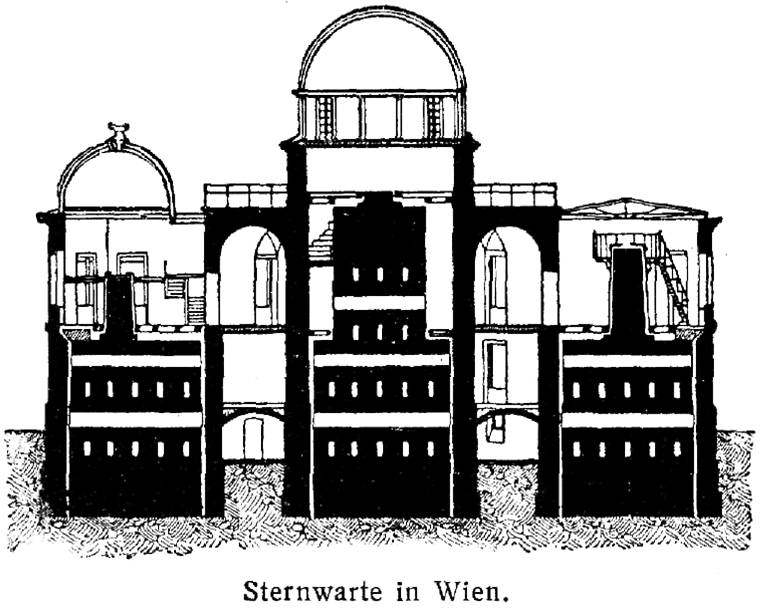
Fig. 8b. Front elevation, University Observatory Vienna-Währing (academic.ru, TL091234)
The Vienna University Observatory, built between 1874 and 1879, and was finally inaugurated by Emperor Franz Joseph I of Austria in 1883, is mainly in good condition.
The Vienna Observatory is a protected monument with the number 52311 in Austria.
Even today, the Vienna University Observatory, with a width of 73m and a length of 101m, is the largest observatory building in Europe (concerning the enclosed volume).
The 69-cm-Grubb Telescope was the world’s largest refracting telescope - shortly - at the time of erection.
The outbuildings, the Astrograph and the Coudé Telescope, are in poor condition, but renovation work is planned.
Since 1990, a small museum has been set up in the rooms of the former director’s flat, documenting the history of Viennese astronomy with old books (15th to the 18th century) and historical instruments (telescopes, globes, clocks and other astronomical instruments).
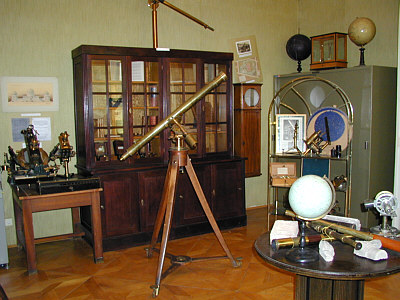
Fig. 9. Museum, University Observatory Vienna (014)
Comparison with related/similar sites - InfoTheme: Astronomy from the Renaissance to the mid-twentieth century
Entity: 148
Subentity: 1
Version: 4
Status: PUB
Date: 2022-09-28 03:49:18
Author(s): Gudrun Wolfschmidt
The architecture of observatories around 1800 is characterized by observatories in the shape of a greek cross with a central dome. Examples are among others the observatories in Madrid (1790 to 1846), Turku (1819), Berlin, New Observatory (1835) and in Bonn (1844), Athens (1846), -- and very late examples are Quito, Ecuador (1873), and Vienna University Observatory (1879) - a very late example, and in contrast to the others in the shape of a Latin cross.
In the dome was the main instrument, this was a refractor; in the east and west wing was the meridian circle or the transit instrument. Also the library, the living quarters and offices for the astronomers were integrated. Especially the Observatorio Astronomico, Quito, Ecuador, erected in 1873, was built exactly after the model of Bonn Observatory with six small cylindrical domes in addition to the central dome.
Threats or potential threats - InfoTheme: Astronomy from the Renaissance to the mid-twentieth century
Entity: 148
Subentity: 1
Version: 2
Status: PUB
Date: 2022-05-27 19:01:27
Author(s): Gudrun Wolfschmidt
no threats
Present use - InfoTheme: Astronomy from the Renaissance to the mid-twentieth century
Entity: 148
Subentity: 1
Version: 6
Status: PUB
Date: 2022-10-02 15:37:51
Author(s): Gudrun Wolfschmidt
The Vienna University Observatory is still used for outstanding astronomical research. Research interests include stellar astrophysics, magnetically active stars, exoplanets, stability and chaos in the solar system, extragalactic research (including galaxies in the early universe), infrared, radio and X-ray astronomy, and satellite projects (development of software and hardware components for space observatories such as Herschel, ARIEL, SMILE, PLATO, CHEOPS, GAIA, Athena, BRITE; ground station for the MOST satellite). Members of the institute are involved in the instrumentation of the large-scale project "Extremely Large Telescope" (ELT) of the European Southern Observatory: three instruments, two of which are First Light instruments.
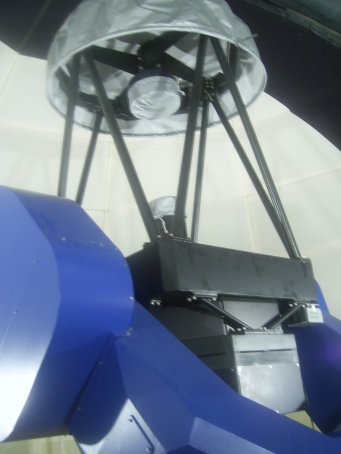
Fig. 10a. Northern Dome, 80-cm-Cassegrain Reflector with CCD, optics, made by Leningrad Optical Mechanical Association (LOMO), St. Petersburg, Russia, University Observatory Vienna
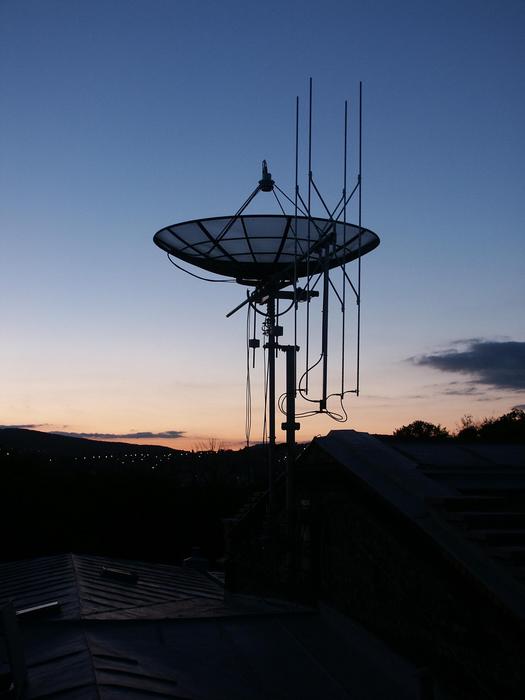
Fig. 10b. Most Satellite receiving station, University Observatory Vienna
Astronomical relevance today - InfoTheme: Astronomy from the Renaissance to the mid-twentieth century
Entity: 148
Subentity: 1
Version: 12
Status: PUB
Date: 2022-10-12 16:58:35
Author(s): Gudrun Wolfschmidt
The Vienna University Observatory is still used for astronomical research. In addition, possibilites for observing are:
- Leopold Figl Observatory Outstation (1968) of the Institute for Astrophysics in Mitterschöpfl, Wienerwald (IAU-Code 562):
48° 04’ 57.19’’ N, 15° 55’ 14.71’’ E, Elevation above sealevel: 883m
- 1.5-m-Ritchey-Chrétien telescope (focal length 12.5m), built by Carl Zeiss in Oberkochen, mounting by Rademakers in Rotterdam, The Netherlands. The telescope is also designed for observation in Cassegrain or Coudé focus (22.5m or 45m focal length, respectively), but the Coudé was never realised for financial reasons.
The 1.5-m-Ritchey-Chrétien is the largest optical reflector in Austria.
A CCD camera with Faint Object Spectrograph and Camera OEFOSC (1996) enables photometric measurements, spectroscopy or celestial images. - In addition, there is a 60-cm-Ritchey-Chrétien-Reflecting telescope (focal length 5m), built by Ing. Rudolf Pressberger, Laboratory of the Observatory (1979).
- Robotic Telescope 2 remote controlled telescopes in Tucson, Arizona, 90cm mirror, CCD
- Austro-Croatian Telescope Telescope is operated in cooperation with the University of Zagreb on the island of Hvar; 1m reflector with English mount, CCD camera.
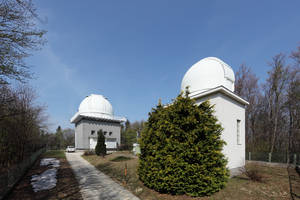
Fig. 11a. Leopold Figl Observatory Outstation (1968) of the Institute for Astrophysics in Mitterschöpfl, Wienerwald
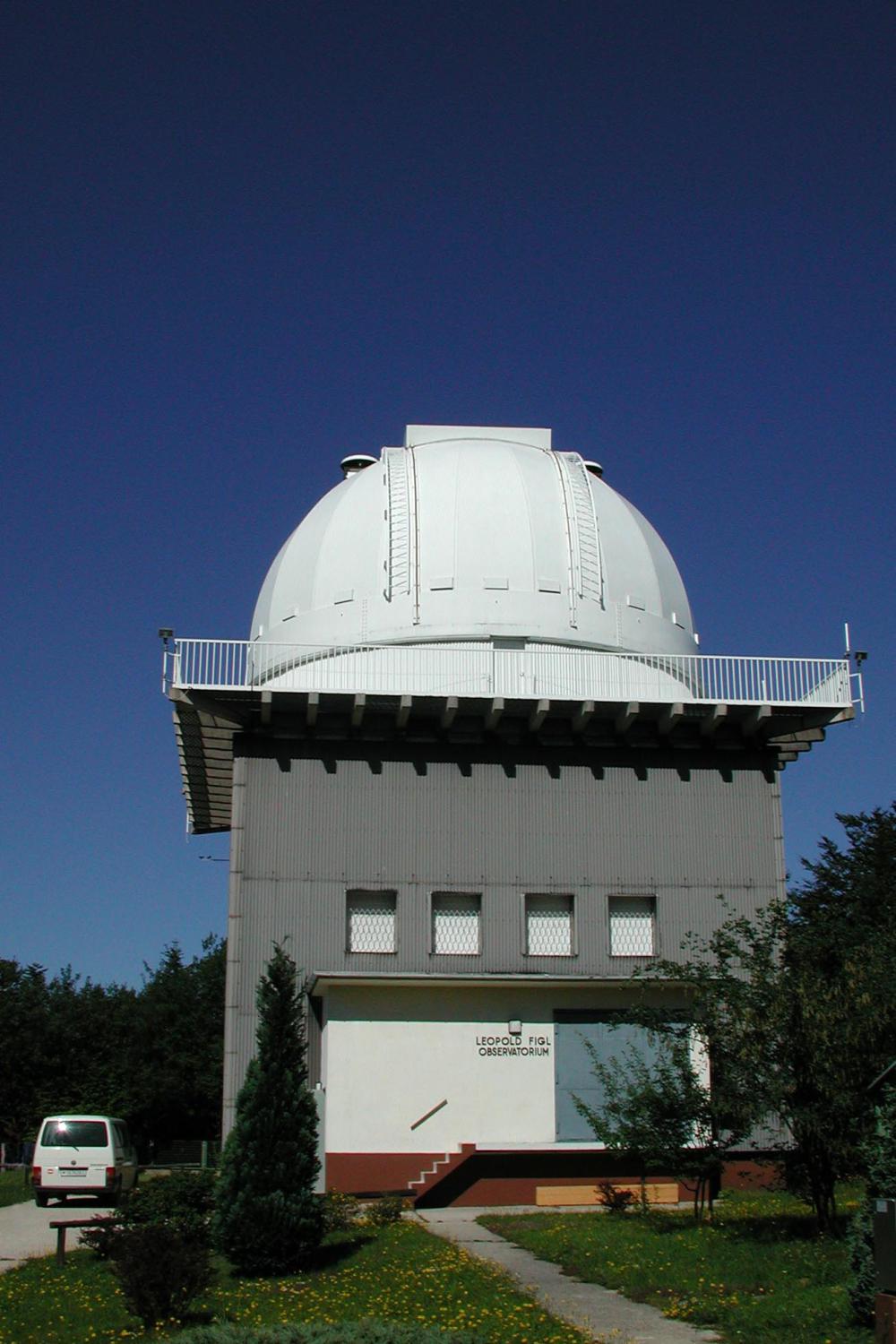
Fig. 11b. Leopold Figl Observatory (photo: Franz Kerschbaum)
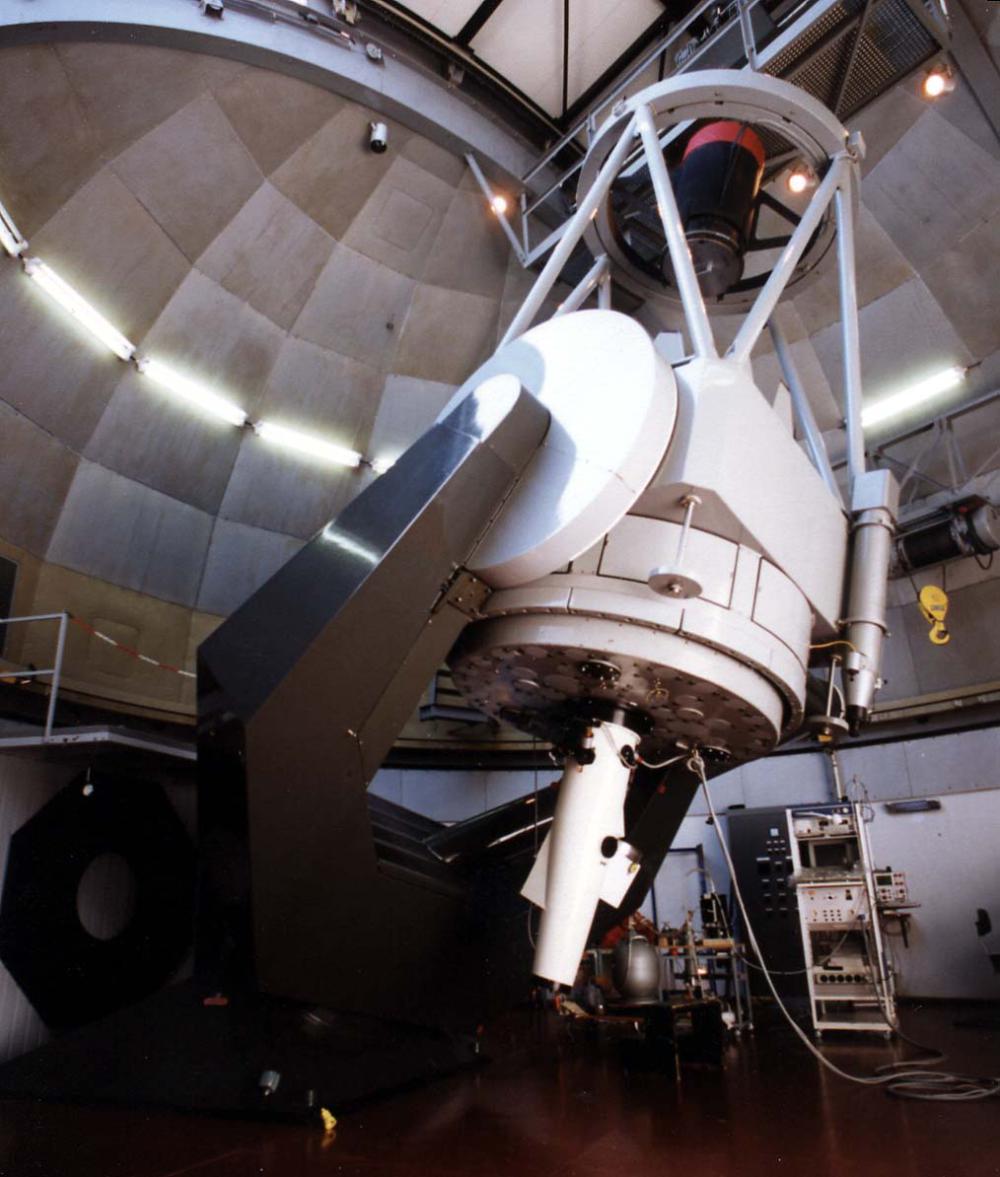
Fig. 11b. 1.5-m-Ritchey-Chrétien telescope, made by Carl Zeiss of Oberkochen, Leopold Figl Observatory (photo: Franz Kerschbaum)
References
Bibliography (books and published articles) - InfoTheme: Astronomy from the Renaissance to the mid-twentieth century
Entity: 148
Subentity: 1
Version: 10
Status: PUB
Date: 2022-10-02 16:07:51
Author(s): Gudrun Wolfschmidt
- Baum, Isolde; Bräuhofer, Günter & Thomas Posch: "An den Ehrw. P. Antonius Pilgram S.J. meinen substituirten Astronom in K. K. Observatorio in Wienn" -- Der Briefwechsel zwischen Anton Pilgram und Maximilian Hell während dessen Venustransitexpedition 1768/69 nach Vardø. In: Wolfschmidt 2020, p. 212--230.
- Firneis, Maria G.; Haupt, Hermann & Peter Holl: Sternwarten in Österreich. Österreichische Akademie der Wissenschaften 2005, Jesuitensternwarte.
- Hamel, Jürgen; Müller, Isolde & Thomas Posch (Hg.): Die Geschichte der Universitätssternwarte Wien. Dargestellt anhand ihrer historischen Instrumente und eines Manuskripts von Johann Steinmayr. Frankfurt am Main: Harri Deutsch Verlag 2010.
- Hnatek, Adolf: Untersuchungen über das 38-cm-Objektiv der Rothschild-Coudé der Universitätssternwarte Wien. In: Astronomische Nachrichten 189 (1911), Nr. 4524.
- Hnatek, Adolf: Untersuchungen über das Rothschild-Coudé und den Coudéspektrographen der k.k. Universitäts-Sternwarte in Wien. In: Annalen der k.k. Universitäts-Sternwarte in Wien 25 (1913), 1.
- Kerschbaum, Franz & Thomas Posch: Der historische Buchbestand der Universitätssternwarte Wien. Ein illustrierter Katalog. Teil 1: 15. bis 17. Jahrhundert. Frankfurt am Main, Wien: Peter Lang 2005.
- Lackner, Karin; Müller, Isolde; Kerschbaum, Franz; Ottensamer, Roland & Thomas Posch: Der historische Buchbestand der Universitätssternwarte Wien. Ein illustrierter Katalog. Teil 2: 18. Jahrhundert. Frankfurt am Main, Wien: Peter Lang 2006.
- Lequeux, James: The Coudé Equatorials. In: Journal of Astronomical History and Heritage 14 (2011), 3, p. 191-202.
- Meurers, Josef: Planung und Bau des Leopold-Figl-Observatoriums für Astrophysik der Universitäts-Sternwarte Wien. In: Sterne und Weltraum (1966), Heft 7.
- Müller, Isolde & Thomas Posch: Universitätssternwarte und Museum des Instituts für Astronomie. In: Feigl, Claudia (Hg.): Schaukästen der Wissenschaft. Die Sammlungen an der Universität Wien. Wien: Böhlau Verlag 2012, p. 179--183.
- Pärr, Nora: Wiener Astronomen -- Ihre Tätigkeit an Privatobservatorien und Universitätssternwarten. Universität Wien, Diplomarbeit, Januar 2001.
- Pärr, Nora: Maximilian Hell und sein wissenschafliches Umfeld im Wien des 18. Jahrhunderts. Dissertation (320 S.), Universität Wien 2011, Historisch-Kulturwissenschaftliche Fakultät, Betreuer*in: Helmut Grössing, Waltraud Heindl (DOI 10.25365/thesis.15782).
- Pressberger, R.; Purgathofer, A. & M. Stoll: Das neue 60 cm RC-Teleskop auf dem Mitterschöpfl des Instituts für Astronomie der Universität Wien. Wien, Sternenbote (1979), H. 10, S. 162-165.
- Rode-Paunzen, Monika: Leopold Figl Observatorium für Astrophysik. In: Comm. in Asteroseismology 149 (2008), p. 162-167.
- Schnell, Anneliese: Maurice Loewy and the Equatorial Coudé in Vienna. In: Astronomische Nachrichten 330 (July 2009), 6, p. 552-554 (DOI 10.1002/asna.200911215).
- Schnell, Anneliese: The University Observatory Vienna. In: Wolfschmidt, Gudrun (ed.): Cultural Heritage of Astronomical Observatories -- From Classical Astronomy to Modern Astrophysics. Berlin: hendrik Bäßler-Verlag (International Council on Monuments and Sites, Monuments and Sites XVIII) 2009, p. 142--149.
- Schobesberger, Thomas: Die französische Venus-Transit-Beobachtung 1761 an der Wiener Jesuitensternwarte. In: Wolfschmidt 2020, p. 196--210.
- Umland, Regina: "Überholt vom Fortschritt - die Geschichte einer Koproduktion Heidelberg-Wien" -- DieWolf-Palisa-Karten (ein früher photographischer Himmelsatlas). In: Wolfschmidt, Gudrun (ed.): Internationalität in der astronomischen Forschung (18. bis 21. Jahrhundert). Hamburg: tredition (Nuncius Hamburgensis; Band 49) 2020, p. 302--324.
- Weiß, Edmund: Bilder-Atlas der Sternenwelt. Eßlingen bei Stuttgart: Schreiber 1888.
- Wolfschmidt, Gudrun (ed.): Cultural Heritage of Astronomical Observatories -- From Classical Astronomy to Modern Astrophysics. Proceedings of International ICOMOS Symposium in Hamburg, October 14--17, 2008. Berlin: hendrik Bäßler-Verlag (International Council on Monuments and Sites, Monuments and Sites XVIII) 2009.
- Wolfschmidt, Gudrun (ed.): Internationalität in der astronomischen Forschung (18. bis 21. Jahrhundert). Internationality in the Astronomical Research (18th to 21st Century). Proceedings der Tagung des Arbeitskreises Astronomiegeschichte in der Astronomischen Gesellschaft in Wien 2018. Hamburg: tredition (Nuncius Hamburgensis -- Beiträge zur Geschichte der Naturwissenschaften; Band 49) 2020.
Links to external sites - InfoTheme: Astronomy from the Renaissance to the mid-twentieth century
Entity: 148
Subentity: 1
Version: 9
Status: PUB
Date: 2022-10-02 13:10:03
Author(s): Gudrun Wolfschmidt
- Institut für Astrophysik, Universität Wien, Fakultät für Geowissenschaften, Geographie und Astronomie (Department of Astrophysics
- Universitätssternwarte und Sternwarte-Museum (Collection ’Maximilian Hell’)
- Stefan Wallner, Thomas Posch & Günter Bräuhofer: Virtuelles Museum der Universitätssternwarte Wien [Version 2]: Glanzlichter aus 543 Jahren Astronomiegeschichte (Mai 2016)
- About the Astronomy Library of the Vienna University
- Adolf Hnatek (1876--1960) (Deutsche Biographie)
- Außenstation des Institutes für Astrophysik, Mitterschöpfl, A-2571 Altenmarkt an der Triesting
- Leopold-Figl-Observatorium (Wikipedia)
- Sternwarten in Österreich. Österreichische Akademie der Wissenschaften 2005.
- Sternwarten (Wien-Wiki)
- Astronomie | Die Wiener Universitätssternwarte im Wandel der Zeit, 1755--1900, 650 plus - Geschichte der Universität Wien
Links to external on-line pictures - InfoTheme: Astronomy from the Renaissance to the mid-twentieth century
Entity: 148
Subentity: 1
Version: 1
Status: PUB
Date: 2018-08-17 12:12:03
Author(s): Gudrun Wolfschmidt
no information available
PrintPrint contents of 'Description' tab
(opens in a new window) Theme
Astronomy from the Renaissance to the mid-twentieth century
Case Study Navigation
- InfoTheme: Astronomy from the Renaissance to the mid-twentieth century
Entity: 148
Subentity: 1
Version: 7
Status: PUB
Date: 2022-09-28 04:58:23
Author(s): Gudrun Wolfschmidt
Vienna University Observatory (Universitätssternwarte Wien), Institute for Astronomy,
Türkenschanzstraße 17, A-1180 Wien-Währing, Österreich/Austria
See also: Observatories in Vienna in the 18th and 19th Century:
- Marinoni Observatory, Mölkerbastei, Vienna (1720s)
- Vienna Jesuit Observatory (1733)
- Old Vienna University Observatory (1754--1879), today Austrian Academy of Sciences
- Kuffner Observatory, Vienna-Ottakring (1886)
Location - InfoTheme: Astronomy from the Renaissance to the mid-twentieth century
Entity: 148
Subentity: 1
Version: 3
Status: PUB
Date: 2022-05-28 02:49:09
Author(s): Gudrun Wolfschmidt
Latitude 48°13’55’’N, Longitude 16°20’03’’E, Elevation 236m above sea level.
IAU observatory code - InfoTheme: Astronomy from the Renaissance to the mid-twentieth century
Entity: 148
Subentity: 1
Version: 1
Status: PUB
Date: 2018-08-17 12:12:02
Author(s): Gudrun Wolfschmidt
045
Description of (scientific/cultural/natural) heritage - InfoTheme: Astronomy from the Renaissance to the mid-twentieth century
Entity: 148
Subentity: 1
Version: 11
Status: PUB
Date: 2022-10-02 14:20:30
Author(s): Gudrun Wolfschmidt

Fig. 1. University Observatory Vienna-Währing (*1879), (Weiß, Edmund: Bilder-Atlas der Sternenwelt. Eßlingen bei Stuttgart: Schreiber 1888)
The planning of the construction, which should also fulfill representative purposes, was transferred to the architects Fellner & Helmer, Hermann Helmer (1849--1919) und Ferdinand Fellner (der Jüngere, 1847--1916), who had become known through the construction of theaters and concert halls.The observatory was built according to the ideas of the observatory director Carl Ludwig Littrow (1811--1877) as a combination of residential and observation wing. The site at the old Türkenschanze covers 5.5 hectares.

Fig. 2a. University Observatory Vienna-Währing from the bird’s eye view (Wikipedia, CC2, photo: Thomas Posch)

Fig. 2b. University Observatory Vienna - the impressive stairway leading to the first floor
From 1874 to 1879, the observatory was constructed in Latin cross shape (see under "Comparison"). The front view shows the classical 3-domes fassade like e.g. Pulkovo, St. Petersburg, or APO Potsdam Observatories, typical for the 19th century.
The center of the building is the main dome of 14m diameter, surrounded by three smaller domes at the end of the northern, western and eastern wings. The south wing housed the living and working spaces for the astronomers. With a length of 101-m and a width of 73-m, it is still the largest observatory building in the world.
The complete relocation of the Institute of Astronomy was completed in 1882. The opening ceremony took place on 5 June 1883 in the presence of Emperor Franz Joseph I. (1830--1916). The first director of the new observatory was Edmund Weiss (1837--1917).

Fig. 3a. University Observatory Vienna, first floor

Fig. 3b. University Observatory Vienna - 3-domes fassade (1883)
History - InfoTheme: Astronomy from the Renaissance to the mid-twentieth century
Entity: 148
Subentity: 1
Version: 16
Status: PUB
Date: 2022-10-21 03:02:19
Author(s): Gudrun Wolfschmidt

Fig. 4a. Dome of the Large Refractor and Most Satellite receiving station, University Observatory Vienna

Fig. 4b. 68-cm-Refractor, made by Grubb of Dublin, University Observatory Vienna

Fig. 4c. 68-cm-Refractor, made by Grubb of Dublin, University Observatory Vienna

Fig. 4d. Ocular of the 68-cm-Refractor, made by Grubb of Dublin, University Observatory Vienna
Instruments
- Main dome:
Large 68-cm-Refractor (f=10,5m), made by Grubb of Dublin (1878).
It was the largest refractor in the world at the time, surpassed in size only by early reflecting telescopes such as Lord Rosse’s Leviathan in Ireland, the Great Melbourne Telescope, and the 83-cm reflecting telescope at the Observatoire de Toulouse.
But already in 1885, an even larger refractor with 76cm aperture was put into operation at the Pulkovo Observatory, St. Petersburg,.
- Western dome:
Refractor (30cm/520cm), made by Alvan Clark & Sons of Cambridgeport, Massachusetts - Western Meridian hall: Meridian circle by Starke-Reichenbach (now in the round hall) and a transit instrument
- East wing with East dome:
15-cm-Fraunhofer Refractor (formerly the main instrument in the old university observatory).
Now there is a 20-cm-Refractor, made by Starke & Kammerer of Vienna; it was donated by the Technical University in Vienna. - The Eastern Meridian hall is no longer in the original condition: a new meridian circle was planned there, but it was never implemented -- currently, the rooms are used by the library.
- Northern dome:
Comet seeker (16.2cm/150cm), made by Merz of Munich,
then: 40-cm-Reflector, made by Bernhard Schmidt,
now: 80-cm-Cassegrain Reflector (800/6640mm), optics, made by Leningrad Optical Mechanical Association (LOMO), St. Petersburg, Russia

Fig. 5a. Western Dome, University Observatory Vienna

Fig. 5b. 200-mm-Refractor, made by Starke & Kammerer of Vienna, Eastern dome, University Observatory Vienna
Equatorial Coudé Telescope
"Between 1884 and 1892, no fewer than seven coudé equatorials were installed in France, Algeria and Austria. Invented by Maurice Loewy, these equatorials allowed the observer to sit comfortably in a closed room, with all the controls and readings at hand. However they were expensive, they required two flat mirrors, which were a source of concern because of their thermal distortion, and their mechanics was complex and delicate, so that they did not succeed in replacing the conventional equatorials in spite of their advantages. Only two are preserved, in Lyons and in Algiers. We describe in detail these instruments, their history and their use." (Lequeux, 2011)
- Equatorial Coudé Telescope (aperture 38cm, 25m focal length, f/24, diameter of the plane-parallel mirror 54cm), made by Paul Ferdinand Gautier (1842--1909) and the Henry brothers of Paris (1890). The instrument was donated by Albert Salomon Baron von Rothschild in 1885. It is in the western part of the observatory grounds and needs urgent restoration.
The instrument was used by Adolf Hnatek (1876--1960) for research in spectrophotometry.
The first famous instrument of this type was in Paris (1891), introduced by Maurice Loewy (1833--1907). Seven coudé equatorials were built between 1887 and 1893, by Gautier and the Henry brothers in Algiers, Besançon, Lyons, Paris (small and large), Nice and Vienna/Austria.
"The instrument is in a desolate condition, parts of the optics are functional, removed and currently housed in the museum (lens) or optics laboratory (one of the original two plane-parallel mirrors); the building is currently closed. The clockwork drive system was removed around 1930 and used for the Cassegrain reflecting telescope." (https://phaidra.univie.ac.at/o:57452, Handle: 11353/10.57452)
- Star Spectrograph, Toepfer & Son of Potsdam, Prism by Carl Zeiss of Jena (around 1910),
originally used with one 30cm and one 58cm camera

Fig. 6a. Maurice Loewy’s Equatorial Coudé, University Observatory Vienna (photo: Gudrun Wolfschmidt)

Fig. 6b. Maurice Loewy’s Equatorial Coudé, University Observatory Vienna (photo: Gudrun Wolfschmidt, 2004)

Fig. 6c. Ocular of Maurice Loewy’s Equatorial Coudé, University Observatory Vienna (phaedra x1_1)

Fig. 6d. Large Spectrograph, used by Adolf Hnatek (1876--1960) with the Equatorial Coudé, University Observatory Vienna (phaedra F_X)

Fig. 6e. Large Spectrograph, used by Adolf Hnatek (1876--1960) with the Equatorial Coudé, University Observatory Vienna (phaedra F31)
Further Instruments outside the main building
- 30-cm-Double Refractor Astrograph (aperture 34cm photographic, 34m focal length),
with visual guiding tube (26cm aperture, 34m focal length),
made by Steinheil of Munich and A. Repsold & Sons of Hamburg (1910), used for photographic observation.
The instrument is almost identical in construction to the Paris "Carte du Ciel" telescope by Paul Gautier from 1885.
- A Zeiss Stereocomparator was donated by Albert Salomon Baron von Rothschild. It was important for the discovery of minor planets (and variable stars).
- Modern Zenith telescope for determining longitude, latitude and time

Fig. 7. 30-cm-Astrograph, made by Steinheil of Munich and A. Repsold & Sons of Hamburg (1910), University Observatory Vienna (CC2, Jürgen Hamel)
Directors of the old and new Vienna Observatory
- 1756 to 1792 · Maximilian Hell (1720--1792)
- 1792 to 1817 · Franz de Paula Triesnecker (1745--1817)
- 1819 to 1840 · Johann Josef von Littrow (1781--1840)
- 1842 to 1877 · Karl Ludwig von Littrow (1811--1877)
- 1877 to 1908 · Edmund Weiss (1837--1917)
- 1909 to 1928 · Josef von Hepperger (1855--1928)
- 1928 to 1938 · Kasimir Romuald Graff (1878--1950)
- 1940 to 1945 · Bruno Thüring (1905--1989)
- 1945 to 1949 · Kasimir Romuald Graff (1878--1950)
- 1951 to 1962 · Josef Hopmann (1890--1975)
- 1962 to 1979 · Joseph Meurers (1909--1987)
- 1979 to 1981 · Karl Dragutin Rakos (1925--2011)
- 1981 to 1984 · Werner Tscharnuter (1968 PhD)
- 1984 to 1986 · Michel Breger (*1941)
- 1986 to 1994 · Paul Jackson (1932--2019)
- 1994 to 2005 · Michel Breger (*1941)
- 2006 to 2009 · Gerhard Hensler
- 2009 to 2011 · Franz Kerschbaum
- 2011 to 2012 · Manuel Güdel
- 2012 to 2013 · João Alves
- 2013 to .... · Bodo Ziegler
- .... to pres. · Manuel Güdel
State of preservation - InfoTheme: Astronomy from the Renaissance to the mid-twentieth century
Entity: 148
Subentity: 1
Version: 4
Status: PUB
Date: 2022-10-02 13:19:58
Author(s): Gudrun Wolfschmidt

Fig. 8a. University Observatory Vienna-Währing (Kirchner, 1880)

Fig. 8b. Front elevation, University Observatory Vienna-Währing (academic.ru, TL091234)
The Vienna University Observatory, built between 1874 and 1879, and was finally inaugurated by Emperor Franz Joseph I of Austria in 1883, is mainly in good condition.
The Vienna Observatory is a protected monument with the number 52311 in Austria.
Even today, the Vienna University Observatory, with a width of 73m and a length of 101m, is the largest observatory building in Europe (concerning the enclosed volume).
The 69-cm-Grubb Telescope was the world’s largest refracting telescope - shortly - at the time of erection.
The outbuildings, the Astrograph and the Coudé Telescope, are in poor condition, but renovation work is planned.
Since 1990, a small museum has been set up in the rooms of the former director’s flat, documenting the history of Viennese astronomy with old books (15th to the 18th century) and historical instruments (telescopes, globes, clocks and other astronomical instruments).

Fig. 9. Museum, University Observatory Vienna (014)
Comparison with related/similar sites - InfoTheme: Astronomy from the Renaissance to the mid-twentieth century
Entity: 148
Subentity: 1
Version: 4
Status: PUB
Date: 2022-09-28 03:49:18
Author(s): Gudrun Wolfschmidt
The architecture of observatories around 1800 is characterized by observatories in the shape of a greek cross with a central dome. Examples are among others the observatories in Madrid (1790 to 1846), Turku (1819), Berlin, New Observatory (1835) and in Bonn (1844), Athens (1846), -- and very late examples are Quito, Ecuador (1873), and Vienna University Observatory (1879) - a very late example, and in contrast to the others in the shape of a Latin cross.
In the dome was the main instrument, this was a refractor; in the east and west wing was the meridian circle or the transit instrument. Also the library, the living quarters and offices for the astronomers were integrated. Especially the Observatorio Astronomico, Quito, Ecuador, erected in 1873, was built exactly after the model of Bonn Observatory with six small cylindrical domes in addition to the central dome.
Threats or potential threats - InfoTheme: Astronomy from the Renaissance to the mid-twentieth century
Entity: 148
Subentity: 1
Version: 2
Status: PUB
Date: 2022-05-27 19:01:27
Author(s): Gudrun Wolfschmidt
no threats
Present use - InfoTheme: Astronomy from the Renaissance to the mid-twentieth century
Entity: 148
Subentity: 1
Version: 6
Status: PUB
Date: 2022-10-02 15:37:51
Author(s): Gudrun Wolfschmidt
The Vienna University Observatory is still used for outstanding astronomical research. Research interests include stellar astrophysics, magnetically active stars, exoplanets, stability and chaos in the solar system, extragalactic research (including galaxies in the early universe), infrared, radio and X-ray astronomy, and satellite projects (development of software and hardware components for space observatories such as Herschel, ARIEL, SMILE, PLATO, CHEOPS, GAIA, Athena, BRITE; ground station for the MOST satellite). Members of the institute are involved in the instrumentation of the large-scale project "Extremely Large Telescope" (ELT) of the European Southern Observatory: three instruments, two of which are First Light instruments.

Fig. 10a. Northern Dome, 80-cm-Cassegrain Reflector with CCD, optics, made by Leningrad Optical Mechanical Association (LOMO), St. Petersburg, Russia, University Observatory Vienna

Fig. 10b. Most Satellite receiving station, University Observatory Vienna
Astronomical relevance today - InfoTheme: Astronomy from the Renaissance to the mid-twentieth century
Entity: 148
Subentity: 1
Version: 12
Status: PUB
Date: 2022-10-12 16:58:35
Author(s): Gudrun Wolfschmidt
The Vienna University Observatory is still used for astronomical research. In addition, possibilites for observing are:
- Leopold Figl Observatory Outstation (1968) of the Institute for Astrophysics in Mitterschöpfl, Wienerwald (IAU-Code 562):
48° 04’ 57.19’’ N, 15° 55’ 14.71’’ E, Elevation above sealevel: 883m
- 1.5-m-Ritchey-Chrétien telescope (focal length 12.5m), built by Carl Zeiss in Oberkochen, mounting by Rademakers in Rotterdam, The Netherlands. The telescope is also designed for observation in Cassegrain or Coudé focus (22.5m or 45m focal length, respectively), but the Coudé was never realised for financial reasons.
The 1.5-m-Ritchey-Chrétien is the largest optical reflector in Austria.
A CCD camera with Faint Object Spectrograph and Camera OEFOSC (1996) enables photometric measurements, spectroscopy or celestial images. - In addition, there is a 60-cm-Ritchey-Chrétien-Reflecting telescope (focal length 5m), built by Ing. Rudolf Pressberger, Laboratory of the Observatory (1979).
- Robotic Telescope 2 remote controlled telescopes in Tucson, Arizona, 90cm mirror, CCD
- Austro-Croatian Telescope Telescope is operated in cooperation with the University of Zagreb on the island of Hvar; 1m reflector with English mount, CCD camera.

Fig. 11a. Leopold Figl Observatory Outstation (1968) of the Institute for Astrophysics in Mitterschöpfl, Wienerwald

Fig. 11b. Leopold Figl Observatory (photo: Franz Kerschbaum)

Fig. 11b. 1.5-m-Ritchey-Chrétien telescope, made by Carl Zeiss of Oberkochen, Leopold Figl Observatory (photo: Franz Kerschbaum)
References
Bibliography (books and published articles) - InfoTheme: Astronomy from the Renaissance to the mid-twentieth century
Entity: 148
Subentity: 1
Version: 10
Status: PUB
Date: 2022-10-02 16:07:51
Author(s): Gudrun Wolfschmidt
- Baum, Isolde; Bräuhofer, Günter & Thomas Posch: "An den Ehrw. P. Antonius Pilgram S.J. meinen substituirten Astronom in K. K. Observatorio in Wienn" -- Der Briefwechsel zwischen Anton Pilgram und Maximilian Hell während dessen Venustransitexpedition 1768/69 nach Vardø. In: Wolfschmidt 2020, p. 212--230.
- Firneis, Maria G.; Haupt, Hermann & Peter Holl: Sternwarten in Österreich. Österreichische Akademie der Wissenschaften 2005, Jesuitensternwarte.
- Hamel, Jürgen; Müller, Isolde & Thomas Posch (Hg.): Die Geschichte der Universitätssternwarte Wien. Dargestellt anhand ihrer historischen Instrumente und eines Manuskripts von Johann Steinmayr. Frankfurt am Main: Harri Deutsch Verlag 2010.
- Hnatek, Adolf: Untersuchungen über das 38-cm-Objektiv der Rothschild-Coudé der Universitätssternwarte Wien. In: Astronomische Nachrichten 189 (1911), Nr. 4524.
- Hnatek, Adolf: Untersuchungen über das Rothschild-Coudé und den Coudéspektrographen der k.k. Universitäts-Sternwarte in Wien. In: Annalen der k.k. Universitäts-Sternwarte in Wien 25 (1913), 1.
- Kerschbaum, Franz & Thomas Posch: Der historische Buchbestand der Universitätssternwarte Wien. Ein illustrierter Katalog. Teil 1: 15. bis 17. Jahrhundert. Frankfurt am Main, Wien: Peter Lang 2005.
- Lackner, Karin; Müller, Isolde; Kerschbaum, Franz; Ottensamer, Roland & Thomas Posch: Der historische Buchbestand der Universitätssternwarte Wien. Ein illustrierter Katalog. Teil 2: 18. Jahrhundert. Frankfurt am Main, Wien: Peter Lang 2006.
- Lequeux, James: The Coudé Equatorials. In: Journal of Astronomical History and Heritage 14 (2011), 3, p. 191-202.
- Meurers, Josef: Planung und Bau des Leopold-Figl-Observatoriums für Astrophysik der Universitäts-Sternwarte Wien. In: Sterne und Weltraum (1966), Heft 7.
- Müller, Isolde & Thomas Posch: Universitätssternwarte und Museum des Instituts für Astronomie. In: Feigl, Claudia (Hg.): Schaukästen der Wissenschaft. Die Sammlungen an der Universität Wien. Wien: Böhlau Verlag 2012, p. 179--183.
- Pärr, Nora: Wiener Astronomen -- Ihre Tätigkeit an Privatobservatorien und Universitätssternwarten. Universität Wien, Diplomarbeit, Januar 2001.
- Pärr, Nora: Maximilian Hell und sein wissenschafliches Umfeld im Wien des 18. Jahrhunderts. Dissertation (320 S.), Universität Wien 2011, Historisch-Kulturwissenschaftliche Fakultät, Betreuer*in: Helmut Grössing, Waltraud Heindl (DOI 10.25365/thesis.15782).
- Pressberger, R.; Purgathofer, A. & M. Stoll: Das neue 60 cm RC-Teleskop auf dem Mitterschöpfl des Instituts für Astronomie der Universität Wien. Wien, Sternenbote (1979), H. 10, S. 162-165.
- Rode-Paunzen, Monika: Leopold Figl Observatorium für Astrophysik. In: Comm. in Asteroseismology 149 (2008), p. 162-167.
- Schnell, Anneliese: Maurice Loewy and the Equatorial Coudé in Vienna. In: Astronomische Nachrichten 330 (July 2009), 6, p. 552-554 (DOI 10.1002/asna.200911215).
- Schnell, Anneliese: The University Observatory Vienna. In: Wolfschmidt, Gudrun (ed.): Cultural Heritage of Astronomical Observatories -- From Classical Astronomy to Modern Astrophysics. Berlin: hendrik Bäßler-Verlag (International Council on Monuments and Sites, Monuments and Sites XVIII) 2009, p. 142--149.
- Schobesberger, Thomas: Die französische Venus-Transit-Beobachtung 1761 an der Wiener Jesuitensternwarte. In: Wolfschmidt 2020, p. 196--210.
- Umland, Regina: "Überholt vom Fortschritt - die Geschichte einer Koproduktion Heidelberg-Wien" -- DieWolf-Palisa-Karten (ein früher photographischer Himmelsatlas). In: Wolfschmidt, Gudrun (ed.): Internationalität in der astronomischen Forschung (18. bis 21. Jahrhundert). Hamburg: tredition (Nuncius Hamburgensis; Band 49) 2020, p. 302--324.
- Weiß, Edmund: Bilder-Atlas der Sternenwelt. Eßlingen bei Stuttgart: Schreiber 1888.
- Wolfschmidt, Gudrun (ed.): Cultural Heritage of Astronomical Observatories -- From Classical Astronomy to Modern Astrophysics. Proceedings of International ICOMOS Symposium in Hamburg, October 14--17, 2008. Berlin: hendrik Bäßler-Verlag (International Council on Monuments and Sites, Monuments and Sites XVIII) 2009.
- Wolfschmidt, Gudrun (ed.): Internationalität in der astronomischen Forschung (18. bis 21. Jahrhundert). Internationality in the Astronomical Research (18th to 21st Century). Proceedings der Tagung des Arbeitskreises Astronomiegeschichte in der Astronomischen Gesellschaft in Wien 2018. Hamburg: tredition (Nuncius Hamburgensis -- Beiträge zur Geschichte der Naturwissenschaften; Band 49) 2020.
Links to external sites - InfoTheme: Astronomy from the Renaissance to the mid-twentieth century
Entity: 148
Subentity: 1
Version: 9
Status: PUB
Date: 2022-10-02 13:10:03
Author(s): Gudrun Wolfschmidt
- Institut für Astrophysik, Universität Wien, Fakultät für Geowissenschaften, Geographie und Astronomie (Department of Astrophysics
- Universitätssternwarte und Sternwarte-Museum (Collection ’Maximilian Hell’)
- Stefan Wallner, Thomas Posch & Günter Bräuhofer: Virtuelles Museum der Universitätssternwarte Wien [Version 2]: Glanzlichter aus 543 Jahren Astronomiegeschichte (Mai 2016)
- About the Astronomy Library of the Vienna University
- Adolf Hnatek (1876--1960) (Deutsche Biographie)
- Außenstation des Institutes für Astrophysik, Mitterschöpfl, A-2571 Altenmarkt an der Triesting
- Leopold-Figl-Observatorium (Wikipedia)
- Sternwarten in Österreich. Österreichische Akademie der Wissenschaften 2005.
- Sternwarten (Wien-Wiki)
- Astronomie | Die Wiener Universitätssternwarte im Wandel der Zeit, 1755--1900, 650 plus - Geschichte der Universität Wien
Links to external on-line pictures - InfoTheme: Astronomy from the Renaissance to the mid-twentieth century
Entity: 148
Subentity: 1
Version: 1
Status: PUB
Date: 2018-08-17 12:12:03
Author(s): Gudrun Wolfschmidt
no information available
PrintPrint contents of 'Description' tab
(opens in a new window) Theme
Astronomy from the Renaissance to the mid-twentieth century
Case Study Navigation
- InfoTheme: Astronomy from the Renaissance to the mid-twentieth century
Entity: 148
Subentity: 1
Version: 3
Status: PUB
Date: 2022-05-28 02:49:09
Author(s): Gudrun Wolfschmidt
Latitude 48°13’55’’N, Longitude 16°20’03’’E, Elevation 236m above sea level.
IAU observatory code - InfoTheme: Astronomy from the Renaissance to the mid-twentieth century
Entity: 148
Subentity: 1
Version: 1
Status: PUB
Date: 2018-08-17 12:12:02
Author(s): Gudrun Wolfschmidt
045
Description of (scientific/cultural/natural) heritage - InfoTheme: Astronomy from the Renaissance to the mid-twentieth century
Entity: 148
Subentity: 1
Version: 11
Status: PUB
Date: 2022-10-02 14:20:30
Author(s): Gudrun Wolfschmidt

Fig. 1. University Observatory Vienna-Währing (*1879), (Weiß, Edmund: Bilder-Atlas der Sternenwelt. Eßlingen bei Stuttgart: Schreiber 1888)
The planning of the construction, which should also fulfill representative purposes, was transferred to the architects Fellner & Helmer, Hermann Helmer (1849--1919) und Ferdinand Fellner (der Jüngere, 1847--1916), who had become known through the construction of theaters and concert halls.The observatory was built according to the ideas of the observatory director Carl Ludwig Littrow (1811--1877) as a combination of residential and observation wing. The site at the old Türkenschanze covers 5.5 hectares.

Fig. 2a. University Observatory Vienna-Währing from the bird’s eye view (Wikipedia, CC2, photo: Thomas Posch)

Fig. 2b. University Observatory Vienna - the impressive stairway leading to the first floor
From 1874 to 1879, the observatory was constructed in Latin cross shape (see under "Comparison"). The front view shows the classical 3-domes fassade like e.g. Pulkovo, St. Petersburg, or APO Potsdam Observatories, typical for the 19th century.
The center of the building is the main dome of 14m diameter, surrounded by three smaller domes at the end of the northern, western and eastern wings. The south wing housed the living and working spaces for the astronomers. With a length of 101-m and a width of 73-m, it is still the largest observatory building in the world.
The complete relocation of the Institute of Astronomy was completed in 1882. The opening ceremony took place on 5 June 1883 in the presence of Emperor Franz Joseph I. (1830--1916). The first director of the new observatory was Edmund Weiss (1837--1917).

Fig. 3a. University Observatory Vienna, first floor

Fig. 3b. University Observatory Vienna - 3-domes fassade (1883)
History - InfoTheme: Astronomy from the Renaissance to the mid-twentieth century
Entity: 148
Subentity: 1
Version: 16
Status: PUB
Date: 2022-10-21 03:02:19
Author(s): Gudrun Wolfschmidt

Fig. 4a. Dome of the Large Refractor and Most Satellite receiving station, University Observatory Vienna

Fig. 4b. 68-cm-Refractor, made by Grubb of Dublin, University Observatory Vienna

Fig. 4c. 68-cm-Refractor, made by Grubb of Dublin, University Observatory Vienna

Fig. 4d. Ocular of the 68-cm-Refractor, made by Grubb of Dublin, University Observatory Vienna
Instruments
- Main dome:
Large 68-cm-Refractor (f=10,5m), made by Grubb of Dublin (1878).
It was the largest refractor in the world at the time, surpassed in size only by early reflecting telescopes such as Lord Rosse’s Leviathan in Ireland, the Great Melbourne Telescope, and the 83-cm reflecting telescope at the Observatoire de Toulouse.
But already in 1885, an even larger refractor with 76cm aperture was put into operation at the Pulkovo Observatory, St. Petersburg,.
- Western dome:
Refractor (30cm/520cm), made by Alvan Clark & Sons of Cambridgeport, Massachusetts - Western Meridian hall: Meridian circle by Starke-Reichenbach (now in the round hall) and a transit instrument
- East wing with East dome:
15-cm-Fraunhofer Refractor (formerly the main instrument in the old university observatory).
Now there is a 20-cm-Refractor, made by Starke & Kammerer of Vienna; it was donated by the Technical University in Vienna. - The Eastern Meridian hall is no longer in the original condition: a new meridian circle was planned there, but it was never implemented -- currently, the rooms are used by the library.
- Northern dome:
Comet seeker (16.2cm/150cm), made by Merz of Munich,
then: 40-cm-Reflector, made by Bernhard Schmidt,
now: 80-cm-Cassegrain Reflector (800/6640mm), optics, made by Leningrad Optical Mechanical Association (LOMO), St. Petersburg, Russia

Fig. 5a. Western Dome, University Observatory Vienna

Fig. 5b. 200-mm-Refractor, made by Starke & Kammerer of Vienna, Eastern dome, University Observatory Vienna
Equatorial Coudé Telescope
"Between 1884 and 1892, no fewer than seven coudé equatorials were installed in France, Algeria and Austria. Invented by Maurice Loewy, these equatorials allowed the observer to sit comfortably in a closed room, with all the controls and readings at hand. However they were expensive, they required two flat mirrors, which were a source of concern because of their thermal distortion, and their mechanics was complex and delicate, so that they did not succeed in replacing the conventional equatorials in spite of their advantages. Only two are preserved, in Lyons and in Algiers. We describe in detail these instruments, their history and their use." (Lequeux, 2011)
- Equatorial Coudé Telescope (aperture 38cm, 25m focal length, f/24, diameter of the plane-parallel mirror 54cm), made by Paul Ferdinand Gautier (1842--1909) and the Henry brothers of Paris (1890). The instrument was donated by Albert Salomon Baron von Rothschild in 1885. It is in the western part of the observatory grounds and needs urgent restoration.
The instrument was used by Adolf Hnatek (1876--1960) for research in spectrophotometry.
The first famous instrument of this type was in Paris (1891), introduced by Maurice Loewy (1833--1907). Seven coudé equatorials were built between 1887 and 1893, by Gautier and the Henry brothers in Algiers, Besançon, Lyons, Paris (small and large), Nice and Vienna/Austria.
"The instrument is in a desolate condition, parts of the optics are functional, removed and currently housed in the museum (lens) or optics laboratory (one of the original two plane-parallel mirrors); the building is currently closed. The clockwork drive system was removed around 1930 and used for the Cassegrain reflecting telescope." (https://phaidra.univie.ac.at/o:57452, Handle: 11353/10.57452)
- Star Spectrograph, Toepfer & Son of Potsdam, Prism by Carl Zeiss of Jena (around 1910),
originally used with one 30cm and one 58cm camera

Fig. 6a. Maurice Loewy’s Equatorial Coudé, University Observatory Vienna (photo: Gudrun Wolfschmidt)

Fig. 6b. Maurice Loewy’s Equatorial Coudé, University Observatory Vienna (photo: Gudrun Wolfschmidt, 2004)

Fig. 6c. Ocular of Maurice Loewy’s Equatorial Coudé, University Observatory Vienna (phaedra x1_1)

Fig. 6d. Large Spectrograph, used by Adolf Hnatek (1876--1960) with the Equatorial Coudé, University Observatory Vienna (phaedra F_X)

Fig. 6e. Large Spectrograph, used by Adolf Hnatek (1876--1960) with the Equatorial Coudé, University Observatory Vienna (phaedra F31)
Further Instruments outside the main building
- 30-cm-Double Refractor Astrograph (aperture 34cm photographic, 34m focal length),
with visual guiding tube (26cm aperture, 34m focal length),
made by Steinheil of Munich and A. Repsold & Sons of Hamburg (1910), used for photographic observation.
The instrument is almost identical in construction to the Paris "Carte du Ciel" telescope by Paul Gautier from 1885.
- A Zeiss Stereocomparator was donated by Albert Salomon Baron von Rothschild. It was important for the discovery of minor planets (and variable stars).
- Modern Zenith telescope for determining longitude, latitude and time

Fig. 7. 30-cm-Astrograph, made by Steinheil of Munich and A. Repsold & Sons of Hamburg (1910), University Observatory Vienna (CC2, Jürgen Hamel)
Directors of the old and new Vienna Observatory
- 1756 to 1792 · Maximilian Hell (1720--1792)
- 1792 to 1817 · Franz de Paula Triesnecker (1745--1817)
- 1819 to 1840 · Johann Josef von Littrow (1781--1840)
- 1842 to 1877 · Karl Ludwig von Littrow (1811--1877)
- 1877 to 1908 · Edmund Weiss (1837--1917)
- 1909 to 1928 · Josef von Hepperger (1855--1928)
- 1928 to 1938 · Kasimir Romuald Graff (1878--1950)
- 1940 to 1945 · Bruno Thüring (1905--1989)
- 1945 to 1949 · Kasimir Romuald Graff (1878--1950)
- 1951 to 1962 · Josef Hopmann (1890--1975)
- 1962 to 1979 · Joseph Meurers (1909--1987)
- 1979 to 1981 · Karl Dragutin Rakos (1925--2011)
- 1981 to 1984 · Werner Tscharnuter (1968 PhD)
- 1984 to 1986 · Michel Breger (*1941)
- 1986 to 1994 · Paul Jackson (1932--2019)
- 1994 to 2005 · Michel Breger (*1941)
- 2006 to 2009 · Gerhard Hensler
- 2009 to 2011 · Franz Kerschbaum
- 2011 to 2012 · Manuel Güdel
- 2012 to 2013 · João Alves
- 2013 to .... · Bodo Ziegler
- .... to pres. · Manuel Güdel
State of preservation - InfoTheme: Astronomy from the Renaissance to the mid-twentieth century
Entity: 148
Subentity: 1
Version: 4
Status: PUB
Date: 2022-10-02 13:19:58
Author(s): Gudrun Wolfschmidt

Fig. 8a. University Observatory Vienna-Währing (Kirchner, 1880)

Fig. 8b. Front elevation, University Observatory Vienna-Währing (academic.ru, TL091234)
The Vienna University Observatory, built between 1874 and 1879, and was finally inaugurated by Emperor Franz Joseph I of Austria in 1883, is mainly in good condition.
The Vienna Observatory is a protected monument with the number 52311 in Austria.
Even today, the Vienna University Observatory, with a width of 73m and a length of 101m, is the largest observatory building in Europe (concerning the enclosed volume).
The 69-cm-Grubb Telescope was the world’s largest refracting telescope - shortly - at the time of erection.
The outbuildings, the Astrograph and the Coudé Telescope, are in poor condition, but renovation work is planned.
Since 1990, a small museum has been set up in the rooms of the former director’s flat, documenting the history of Viennese astronomy with old books (15th to the 18th century) and historical instruments (telescopes, globes, clocks and other astronomical instruments).

Fig. 9. Museum, University Observatory Vienna (014)
Comparison with related/similar sites - InfoTheme: Astronomy from the Renaissance to the mid-twentieth century
Entity: 148
Subentity: 1
Version: 4
Status: PUB
Date: 2022-09-28 03:49:18
Author(s): Gudrun Wolfschmidt
The architecture of observatories around 1800 is characterized by observatories in the shape of a greek cross with a central dome. Examples are among others the observatories in Madrid (1790 to 1846), Turku (1819), Berlin, New Observatory (1835) and in Bonn (1844), Athens (1846), -- and very late examples are Quito, Ecuador (1873), and Vienna University Observatory (1879) - a very late example, and in contrast to the others in the shape of a Latin cross.
In the dome was the main instrument, this was a refractor; in the east and west wing was the meridian circle or the transit instrument. Also the library, the living quarters and offices for the astronomers were integrated. Especially the Observatorio Astronomico, Quito, Ecuador, erected in 1873, was built exactly after the model of Bonn Observatory with six small cylindrical domes in addition to the central dome.
Threats or potential threats - InfoTheme: Astronomy from the Renaissance to the mid-twentieth century
Entity: 148
Subentity: 1
Version: 2
Status: PUB
Date: 2022-05-27 19:01:27
Author(s): Gudrun Wolfschmidt
no threats
Present use - InfoTheme: Astronomy from the Renaissance to the mid-twentieth century
Entity: 148
Subentity: 1
Version: 6
Status: PUB
Date: 2022-10-02 15:37:51
Author(s): Gudrun Wolfschmidt
The Vienna University Observatory is still used for outstanding astronomical research. Research interests include stellar astrophysics, magnetically active stars, exoplanets, stability and chaos in the solar system, extragalactic research (including galaxies in the early universe), infrared, radio and X-ray astronomy, and satellite projects (development of software and hardware components for space observatories such as Herschel, ARIEL, SMILE, PLATO, CHEOPS, GAIA, Athena, BRITE; ground station for the MOST satellite). Members of the institute are involved in the instrumentation of the large-scale project "Extremely Large Telescope" (ELT) of the European Southern Observatory: three instruments, two of which are First Light instruments.

Fig. 10a. Northern Dome, 80-cm-Cassegrain Reflector with CCD, optics, made by Leningrad Optical Mechanical Association (LOMO), St. Petersburg, Russia, University Observatory Vienna

Fig. 10b. Most Satellite receiving station, University Observatory Vienna
Astronomical relevance today - InfoTheme: Astronomy from the Renaissance to the mid-twentieth century
Entity: 148
Subentity: 1
Version: 12
Status: PUB
Date: 2022-10-12 16:58:35
Author(s): Gudrun Wolfschmidt
The Vienna University Observatory is still used for astronomical research. In addition, possibilites for observing are:
- Leopold Figl Observatory Outstation (1968) of the Institute for Astrophysics in Mitterschöpfl, Wienerwald (IAU-Code 562):
48° 04’ 57.19’’ N, 15° 55’ 14.71’’ E, Elevation above sealevel: 883m
- 1.5-m-Ritchey-Chrétien telescope (focal length 12.5m), built by Carl Zeiss in Oberkochen, mounting by Rademakers in Rotterdam, The Netherlands. The telescope is also designed for observation in Cassegrain or Coudé focus (22.5m or 45m focal length, respectively), but the Coudé was never realised for financial reasons.
The 1.5-m-Ritchey-Chrétien is the largest optical reflector in Austria.
A CCD camera with Faint Object Spectrograph and Camera OEFOSC (1996) enables photometric measurements, spectroscopy or celestial images. - In addition, there is a 60-cm-Ritchey-Chrétien-Reflecting telescope (focal length 5m), built by Ing. Rudolf Pressberger, Laboratory of the Observatory (1979).
- Robotic Telescope 2 remote controlled telescopes in Tucson, Arizona, 90cm mirror, CCD
- Austro-Croatian Telescope Telescope is operated in cooperation with the University of Zagreb on the island of Hvar; 1m reflector with English mount, CCD camera.

Fig. 11a. Leopold Figl Observatory Outstation (1968) of the Institute for Astrophysics in Mitterschöpfl, Wienerwald

Fig. 11b. Leopold Figl Observatory (photo: Franz Kerschbaum)

Fig. 11b. 1.5-m-Ritchey-Chrétien telescope, made by Carl Zeiss of Oberkochen, Leopold Figl Observatory (photo: Franz Kerschbaum)
References
Bibliography (books and published articles) - InfoTheme: Astronomy from the Renaissance to the mid-twentieth century
Entity: 148
Subentity: 1
Version: 10
Status: PUB
Date: 2022-10-02 16:07:51
Author(s): Gudrun Wolfschmidt
- Baum, Isolde; Bräuhofer, Günter & Thomas Posch: "An den Ehrw. P. Antonius Pilgram S.J. meinen substituirten Astronom in K. K. Observatorio in Wienn" -- Der Briefwechsel zwischen Anton Pilgram und Maximilian Hell während dessen Venustransitexpedition 1768/69 nach Vardø. In: Wolfschmidt 2020, p. 212--230.
- Firneis, Maria G.; Haupt, Hermann & Peter Holl: Sternwarten in Österreich. Österreichische Akademie der Wissenschaften 2005, Jesuitensternwarte.
- Hamel, Jürgen; Müller, Isolde & Thomas Posch (Hg.): Die Geschichte der Universitätssternwarte Wien. Dargestellt anhand ihrer historischen Instrumente und eines Manuskripts von Johann Steinmayr. Frankfurt am Main: Harri Deutsch Verlag 2010.
- Hnatek, Adolf: Untersuchungen über das 38-cm-Objektiv der Rothschild-Coudé der Universitätssternwarte Wien. In: Astronomische Nachrichten 189 (1911), Nr. 4524.
- Hnatek, Adolf: Untersuchungen über das Rothschild-Coudé und den Coudéspektrographen der k.k. Universitäts-Sternwarte in Wien. In: Annalen der k.k. Universitäts-Sternwarte in Wien 25 (1913), 1.
- Kerschbaum, Franz & Thomas Posch: Der historische Buchbestand der Universitätssternwarte Wien. Ein illustrierter Katalog. Teil 1: 15. bis 17. Jahrhundert. Frankfurt am Main, Wien: Peter Lang 2005.
- Lackner, Karin; Müller, Isolde; Kerschbaum, Franz; Ottensamer, Roland & Thomas Posch: Der historische Buchbestand der Universitätssternwarte Wien. Ein illustrierter Katalog. Teil 2: 18. Jahrhundert. Frankfurt am Main, Wien: Peter Lang 2006.
- Lequeux, James: The Coudé Equatorials. In: Journal of Astronomical History and Heritage 14 (2011), 3, p. 191-202.
- Meurers, Josef: Planung und Bau des Leopold-Figl-Observatoriums für Astrophysik der Universitäts-Sternwarte Wien. In: Sterne und Weltraum (1966), Heft 7.
- Müller, Isolde & Thomas Posch: Universitätssternwarte und Museum des Instituts für Astronomie. In: Feigl, Claudia (Hg.): Schaukästen der Wissenschaft. Die Sammlungen an der Universität Wien. Wien: Böhlau Verlag 2012, p. 179--183.
- Pärr, Nora: Wiener Astronomen -- Ihre Tätigkeit an Privatobservatorien und Universitätssternwarten. Universität Wien, Diplomarbeit, Januar 2001.
- Pärr, Nora: Maximilian Hell und sein wissenschafliches Umfeld im Wien des 18. Jahrhunderts. Dissertation (320 S.), Universität Wien 2011, Historisch-Kulturwissenschaftliche Fakultät, Betreuer*in: Helmut Grössing, Waltraud Heindl (DOI 10.25365/thesis.15782).
- Pressberger, R.; Purgathofer, A. & M. Stoll: Das neue 60 cm RC-Teleskop auf dem Mitterschöpfl des Instituts für Astronomie der Universität Wien. Wien, Sternenbote (1979), H. 10, S. 162-165.
- Rode-Paunzen, Monika: Leopold Figl Observatorium für Astrophysik. In: Comm. in Asteroseismology 149 (2008), p. 162-167.
- Schnell, Anneliese: Maurice Loewy and the Equatorial Coudé in Vienna. In: Astronomische Nachrichten 330 (July 2009), 6, p. 552-554 (DOI 10.1002/asna.200911215).
- Schnell, Anneliese: The University Observatory Vienna. In: Wolfschmidt, Gudrun (ed.): Cultural Heritage of Astronomical Observatories -- From Classical Astronomy to Modern Astrophysics. Berlin: hendrik Bäßler-Verlag (International Council on Monuments and Sites, Monuments and Sites XVIII) 2009, p. 142--149.
- Schobesberger, Thomas: Die französische Venus-Transit-Beobachtung 1761 an der Wiener Jesuitensternwarte. In: Wolfschmidt 2020, p. 196--210.
- Umland, Regina: "Überholt vom Fortschritt - die Geschichte einer Koproduktion Heidelberg-Wien" -- DieWolf-Palisa-Karten (ein früher photographischer Himmelsatlas). In: Wolfschmidt, Gudrun (ed.): Internationalität in der astronomischen Forschung (18. bis 21. Jahrhundert). Hamburg: tredition (Nuncius Hamburgensis; Band 49) 2020, p. 302--324.
- Weiß, Edmund: Bilder-Atlas der Sternenwelt. Eßlingen bei Stuttgart: Schreiber 1888.
- Wolfschmidt, Gudrun (ed.): Cultural Heritage of Astronomical Observatories -- From Classical Astronomy to Modern Astrophysics. Proceedings of International ICOMOS Symposium in Hamburg, October 14--17, 2008. Berlin: hendrik Bäßler-Verlag (International Council on Monuments and Sites, Monuments and Sites XVIII) 2009.
- Wolfschmidt, Gudrun (ed.): Internationalität in der astronomischen Forschung (18. bis 21. Jahrhundert). Internationality in the Astronomical Research (18th to 21st Century). Proceedings der Tagung des Arbeitskreises Astronomiegeschichte in der Astronomischen Gesellschaft in Wien 2018. Hamburg: tredition (Nuncius Hamburgensis -- Beiträge zur Geschichte der Naturwissenschaften; Band 49) 2020.
Links to external sites - InfoTheme: Astronomy from the Renaissance to the mid-twentieth century
Entity: 148
Subentity: 1
Version: 9
Status: PUB
Date: 2022-10-02 13:10:03
Author(s): Gudrun Wolfschmidt
- Institut für Astrophysik, Universität Wien, Fakultät für Geowissenschaften, Geographie und Astronomie (Department of Astrophysics
- Universitätssternwarte und Sternwarte-Museum (Collection ’Maximilian Hell’)
- Stefan Wallner, Thomas Posch & Günter Bräuhofer: Virtuelles Museum der Universitätssternwarte Wien [Version 2]: Glanzlichter aus 543 Jahren Astronomiegeschichte (Mai 2016)
- About the Astronomy Library of the Vienna University
- Adolf Hnatek (1876--1960) (Deutsche Biographie)
- Außenstation des Institutes für Astrophysik, Mitterschöpfl, A-2571 Altenmarkt an der Triesting
- Leopold-Figl-Observatorium (Wikipedia)
- Sternwarten in Österreich. Österreichische Akademie der Wissenschaften 2005.
- Sternwarten (Wien-Wiki)
- Astronomie | Die Wiener Universitätssternwarte im Wandel der Zeit, 1755--1900, 650 plus - Geschichte der Universität Wien
Links to external on-line pictures - InfoTheme: Astronomy from the Renaissance to the mid-twentieth century
Entity: 148
Subentity: 1
Version: 1
Status: PUB
Date: 2018-08-17 12:12:03
Author(s): Gudrun Wolfschmidt
no information available
PrintPrint contents of 'Description' tab
(opens in a new window) Theme
Astronomy from the Renaissance to the mid-twentieth century
Case Study Navigation
- InfoTheme: Astronomy from the Renaissance to the mid-twentieth century
Entity: 148
Subentity: 1
Version: 1
Status: PUB
Date: 2018-08-17 12:12:02
Author(s): Gudrun Wolfschmidt
045
Description of (scientific/cultural/natural) heritage - InfoTheme: Astronomy from the Renaissance to the mid-twentieth century
Entity: 148
Subentity: 1
Version: 11
Status: PUB
Date: 2022-10-02 14:20:30
Author(s): Gudrun Wolfschmidt

Fig. 1. University Observatory Vienna-Währing (*1879), (Weiß, Edmund: Bilder-Atlas der Sternenwelt. Eßlingen bei Stuttgart: Schreiber 1888)
The planning of the construction, which should also fulfill representative purposes, was transferred to the architects Fellner & Helmer, Hermann Helmer (1849--1919) und Ferdinand Fellner (der Jüngere, 1847--1916), who had become known through the construction of theaters and concert halls.The observatory was built according to the ideas of the observatory director Carl Ludwig Littrow (1811--1877) as a combination of residential and observation wing. The site at the old Türkenschanze covers 5.5 hectares.

Fig. 2a. University Observatory Vienna-Währing from the bird’s eye view (Wikipedia, CC2, photo: Thomas Posch)

Fig. 2b. University Observatory Vienna - the impressive stairway leading to the first floor
From 1874 to 1879, the observatory was constructed in Latin cross shape (see under "Comparison"). The front view shows the classical 3-domes fassade like e.g. Pulkovo, St. Petersburg, or APO Potsdam Observatories, typical for the 19th century.
The center of the building is the main dome of 14m diameter, surrounded by three smaller domes at the end of the northern, western and eastern wings. The south wing housed the living and working spaces for the astronomers. With a length of 101-m and a width of 73-m, it is still the largest observatory building in the world.
The complete relocation of the Institute of Astronomy was completed in 1882. The opening ceremony took place on 5 June 1883 in the presence of Emperor Franz Joseph I. (1830--1916). The first director of the new observatory was Edmund Weiss (1837--1917).

Fig. 3a. University Observatory Vienna, first floor

Fig. 3b. University Observatory Vienna - 3-domes fassade (1883)
History - InfoTheme: Astronomy from the Renaissance to the mid-twentieth century
Entity: 148
Subentity: 1
Version: 16
Status: PUB
Date: 2022-10-21 03:02:19
Author(s): Gudrun Wolfschmidt

Fig. 4a. Dome of the Large Refractor and Most Satellite receiving station, University Observatory Vienna

Fig. 4b. 68-cm-Refractor, made by Grubb of Dublin, University Observatory Vienna

Fig. 4c. 68-cm-Refractor, made by Grubb of Dublin, University Observatory Vienna

Fig. 4d. Ocular of the 68-cm-Refractor, made by Grubb of Dublin, University Observatory Vienna
Instruments
- Main dome:
Large 68-cm-Refractor (f=10,5m), made by Grubb of Dublin (1878).
It was the largest refractor in the world at the time, surpassed in size only by early reflecting telescopes such as Lord Rosse’s Leviathan in Ireland, the Great Melbourne Telescope, and the 83-cm reflecting telescope at the Observatoire de Toulouse.
But already in 1885, an even larger refractor with 76cm aperture was put into operation at the Pulkovo Observatory, St. Petersburg,.
- Western dome:
Refractor (30cm/520cm), made by Alvan Clark & Sons of Cambridgeport, Massachusetts - Western Meridian hall: Meridian circle by Starke-Reichenbach (now in the round hall) and a transit instrument
- East wing with East dome:
15-cm-Fraunhofer Refractor (formerly the main instrument in the old university observatory).
Now there is a 20-cm-Refractor, made by Starke & Kammerer of Vienna; it was donated by the Technical University in Vienna. - The Eastern Meridian hall is no longer in the original condition: a new meridian circle was planned there, but it was never implemented -- currently, the rooms are used by the library.
- Northern dome:
Comet seeker (16.2cm/150cm), made by Merz of Munich,
then: 40-cm-Reflector, made by Bernhard Schmidt,
now: 80-cm-Cassegrain Reflector (800/6640mm), optics, made by Leningrad Optical Mechanical Association (LOMO), St. Petersburg, Russia

Fig. 5a. Western Dome, University Observatory Vienna

Fig. 5b. 200-mm-Refractor, made by Starke & Kammerer of Vienna, Eastern dome, University Observatory Vienna
Equatorial Coudé Telescope
"Between 1884 and 1892, no fewer than seven coudé equatorials were installed in France, Algeria and Austria. Invented by Maurice Loewy, these equatorials allowed the observer to sit comfortably in a closed room, with all the controls and readings at hand. However they were expensive, they required two flat mirrors, which were a source of concern because of their thermal distortion, and their mechanics was complex and delicate, so that they did not succeed in replacing the conventional equatorials in spite of their advantages. Only two are preserved, in Lyons and in Algiers. We describe in detail these instruments, their history and their use." (Lequeux, 2011)
- Equatorial Coudé Telescope (aperture 38cm, 25m focal length, f/24, diameter of the plane-parallel mirror 54cm), made by Paul Ferdinand Gautier (1842--1909) and the Henry brothers of Paris (1890). The instrument was donated by Albert Salomon Baron von Rothschild in 1885. It is in the western part of the observatory grounds and needs urgent restoration.
The instrument was used by Adolf Hnatek (1876--1960) for research in spectrophotometry.
The first famous instrument of this type was in Paris (1891), introduced by Maurice Loewy (1833--1907). Seven coudé equatorials were built between 1887 and 1893, by Gautier and the Henry brothers in Algiers, Besançon, Lyons, Paris (small and large), Nice and Vienna/Austria.
"The instrument is in a desolate condition, parts of the optics are functional, removed and currently housed in the museum (lens) or optics laboratory (one of the original two plane-parallel mirrors); the building is currently closed. The clockwork drive system was removed around 1930 and used for the Cassegrain reflecting telescope." (https://phaidra.univie.ac.at/o:57452, Handle: 11353/10.57452)
- Star Spectrograph, Toepfer & Son of Potsdam, Prism by Carl Zeiss of Jena (around 1910),
originally used with one 30cm and one 58cm camera

Fig. 6a. Maurice Loewy’s Equatorial Coudé, University Observatory Vienna (photo: Gudrun Wolfschmidt)

Fig. 6b. Maurice Loewy’s Equatorial Coudé, University Observatory Vienna (photo: Gudrun Wolfschmidt, 2004)

Fig. 6c. Ocular of Maurice Loewy’s Equatorial Coudé, University Observatory Vienna (phaedra x1_1)

Fig. 6d. Large Spectrograph, used by Adolf Hnatek (1876--1960) with the Equatorial Coudé, University Observatory Vienna (phaedra F_X)

Fig. 6e. Large Spectrograph, used by Adolf Hnatek (1876--1960) with the Equatorial Coudé, University Observatory Vienna (phaedra F31)
Further Instruments outside the main building
- 30-cm-Double Refractor Astrograph (aperture 34cm photographic, 34m focal length),
with visual guiding tube (26cm aperture, 34m focal length),
made by Steinheil of Munich and A. Repsold & Sons of Hamburg (1910), used for photographic observation.
The instrument is almost identical in construction to the Paris "Carte du Ciel" telescope by Paul Gautier from 1885.
- A Zeiss Stereocomparator was donated by Albert Salomon Baron von Rothschild. It was important for the discovery of minor planets (and variable stars).
- Modern Zenith telescope for determining longitude, latitude and time

Fig. 7. 30-cm-Astrograph, made by Steinheil of Munich and A. Repsold & Sons of Hamburg (1910), University Observatory Vienna (CC2, Jürgen Hamel)
Directors of the old and new Vienna Observatory
- 1756 to 1792 · Maximilian Hell (1720--1792)
- 1792 to 1817 · Franz de Paula Triesnecker (1745--1817)
- 1819 to 1840 · Johann Josef von Littrow (1781--1840)
- 1842 to 1877 · Karl Ludwig von Littrow (1811--1877)
- 1877 to 1908 · Edmund Weiss (1837--1917)
- 1909 to 1928 · Josef von Hepperger (1855--1928)
- 1928 to 1938 · Kasimir Romuald Graff (1878--1950)
- 1940 to 1945 · Bruno Thüring (1905--1989)
- 1945 to 1949 · Kasimir Romuald Graff (1878--1950)
- 1951 to 1962 · Josef Hopmann (1890--1975)
- 1962 to 1979 · Joseph Meurers (1909--1987)
- 1979 to 1981 · Karl Dragutin Rakos (1925--2011)
- 1981 to 1984 · Werner Tscharnuter (1968 PhD)
- 1984 to 1986 · Michel Breger (*1941)
- 1986 to 1994 · Paul Jackson (1932--2019)
- 1994 to 2005 · Michel Breger (*1941)
- 2006 to 2009 · Gerhard Hensler
- 2009 to 2011 · Franz Kerschbaum
- 2011 to 2012 · Manuel Güdel
- 2012 to 2013 · João Alves
- 2013 to .... · Bodo Ziegler
- .... to pres. · Manuel Güdel
State of preservation - InfoTheme: Astronomy from the Renaissance to the mid-twentieth century
Entity: 148
Subentity: 1
Version: 4
Status: PUB
Date: 2022-10-02 13:19:58
Author(s): Gudrun Wolfschmidt

Fig. 8a. University Observatory Vienna-Währing (Kirchner, 1880)

Fig. 8b. Front elevation, University Observatory Vienna-Währing (academic.ru, TL091234)
The Vienna University Observatory, built between 1874 and 1879, and was finally inaugurated by Emperor Franz Joseph I of Austria in 1883, is mainly in good condition.
The Vienna Observatory is a protected monument with the number 52311 in Austria.
Even today, the Vienna University Observatory, with a width of 73m and a length of 101m, is the largest observatory building in Europe (concerning the enclosed volume).
The 69-cm-Grubb Telescope was the world’s largest refracting telescope - shortly - at the time of erection.
The outbuildings, the Astrograph and the Coudé Telescope, are in poor condition, but renovation work is planned.
Since 1990, a small museum has been set up in the rooms of the former director’s flat, documenting the history of Viennese astronomy with old books (15th to the 18th century) and historical instruments (telescopes, globes, clocks and other astronomical instruments).

Fig. 9. Museum, University Observatory Vienna (014)
Comparison with related/similar sites - InfoTheme: Astronomy from the Renaissance to the mid-twentieth century
Entity: 148
Subentity: 1
Version: 4
Status: PUB
Date: 2022-09-28 03:49:18
Author(s): Gudrun Wolfschmidt
The architecture of observatories around 1800 is characterized by observatories in the shape of a greek cross with a central dome. Examples are among others the observatories in Madrid (1790 to 1846), Turku (1819), Berlin, New Observatory (1835) and in Bonn (1844), Athens (1846), -- and very late examples are Quito, Ecuador (1873), and Vienna University Observatory (1879) - a very late example, and in contrast to the others in the shape of a Latin cross.
In the dome was the main instrument, this was a refractor; in the east and west wing was the meridian circle or the transit instrument. Also the library, the living quarters and offices for the astronomers were integrated. Especially the Observatorio Astronomico, Quito, Ecuador, erected in 1873, was built exactly after the model of Bonn Observatory with six small cylindrical domes in addition to the central dome.
Threats or potential threats - InfoTheme: Astronomy from the Renaissance to the mid-twentieth century
Entity: 148
Subentity: 1
Version: 2
Status: PUB
Date: 2022-05-27 19:01:27
Author(s): Gudrun Wolfschmidt
no threats
Present use - InfoTheme: Astronomy from the Renaissance to the mid-twentieth century
Entity: 148
Subentity: 1
Version: 6
Status: PUB
Date: 2022-10-02 15:37:51
Author(s): Gudrun Wolfschmidt
The Vienna University Observatory is still used for outstanding astronomical research. Research interests include stellar astrophysics, magnetically active stars, exoplanets, stability and chaos in the solar system, extragalactic research (including galaxies in the early universe), infrared, radio and X-ray astronomy, and satellite projects (development of software and hardware components for space observatories such as Herschel, ARIEL, SMILE, PLATO, CHEOPS, GAIA, Athena, BRITE; ground station for the MOST satellite). Members of the institute are involved in the instrumentation of the large-scale project "Extremely Large Telescope" (ELT) of the European Southern Observatory: three instruments, two of which are First Light instruments.

Fig. 10a. Northern Dome, 80-cm-Cassegrain Reflector with CCD, optics, made by Leningrad Optical Mechanical Association (LOMO), St. Petersburg, Russia, University Observatory Vienna

Fig. 10b. Most Satellite receiving station, University Observatory Vienna
Astronomical relevance today - InfoTheme: Astronomy from the Renaissance to the mid-twentieth century
Entity: 148
Subentity: 1
Version: 12
Status: PUB
Date: 2022-10-12 16:58:35
Author(s): Gudrun Wolfschmidt
The Vienna University Observatory is still used for astronomical research. In addition, possibilites for observing are:
- Leopold Figl Observatory Outstation (1968) of the Institute for Astrophysics in Mitterschöpfl, Wienerwald (IAU-Code 562):
48° 04’ 57.19’’ N, 15° 55’ 14.71’’ E, Elevation above sealevel: 883m
- 1.5-m-Ritchey-Chrétien telescope (focal length 12.5m), built by Carl Zeiss in Oberkochen, mounting by Rademakers in Rotterdam, The Netherlands. The telescope is also designed for observation in Cassegrain or Coudé focus (22.5m or 45m focal length, respectively), but the Coudé was never realised for financial reasons.
The 1.5-m-Ritchey-Chrétien is the largest optical reflector in Austria.
A CCD camera with Faint Object Spectrograph and Camera OEFOSC (1996) enables photometric measurements, spectroscopy or celestial images. - In addition, there is a 60-cm-Ritchey-Chrétien-Reflecting telescope (focal length 5m), built by Ing. Rudolf Pressberger, Laboratory of the Observatory (1979).
- Robotic Telescope 2 remote controlled telescopes in Tucson, Arizona, 90cm mirror, CCD
- Austro-Croatian Telescope Telescope is operated in cooperation with the University of Zagreb on the island of Hvar; 1m reflector with English mount, CCD camera.

Fig. 11a. Leopold Figl Observatory Outstation (1968) of the Institute for Astrophysics in Mitterschöpfl, Wienerwald

Fig. 11b. Leopold Figl Observatory (photo: Franz Kerschbaum)

Fig. 11b. 1.5-m-Ritchey-Chrétien telescope, made by Carl Zeiss of Oberkochen, Leopold Figl Observatory (photo: Franz Kerschbaum)
References
Bibliography (books and published articles) - InfoTheme: Astronomy from the Renaissance to the mid-twentieth century
Entity: 148
Subentity: 1
Version: 10
Status: PUB
Date: 2022-10-02 16:07:51
Author(s): Gudrun Wolfschmidt
- Baum, Isolde; Bräuhofer, Günter & Thomas Posch: "An den Ehrw. P. Antonius Pilgram S.J. meinen substituirten Astronom in K. K. Observatorio in Wienn" -- Der Briefwechsel zwischen Anton Pilgram und Maximilian Hell während dessen Venustransitexpedition 1768/69 nach Vardø. In: Wolfschmidt 2020, p. 212--230.
- Firneis, Maria G.; Haupt, Hermann & Peter Holl: Sternwarten in Österreich. Österreichische Akademie der Wissenschaften 2005, Jesuitensternwarte.
- Hamel, Jürgen; Müller, Isolde & Thomas Posch (Hg.): Die Geschichte der Universitätssternwarte Wien. Dargestellt anhand ihrer historischen Instrumente und eines Manuskripts von Johann Steinmayr. Frankfurt am Main: Harri Deutsch Verlag 2010.
- Hnatek, Adolf: Untersuchungen über das 38-cm-Objektiv der Rothschild-Coudé der Universitätssternwarte Wien. In: Astronomische Nachrichten 189 (1911), Nr. 4524.
- Hnatek, Adolf: Untersuchungen über das Rothschild-Coudé und den Coudéspektrographen der k.k. Universitäts-Sternwarte in Wien. In: Annalen der k.k. Universitäts-Sternwarte in Wien 25 (1913), 1.
- Kerschbaum, Franz & Thomas Posch: Der historische Buchbestand der Universitätssternwarte Wien. Ein illustrierter Katalog. Teil 1: 15. bis 17. Jahrhundert. Frankfurt am Main, Wien: Peter Lang 2005.
- Lackner, Karin; Müller, Isolde; Kerschbaum, Franz; Ottensamer, Roland & Thomas Posch: Der historische Buchbestand der Universitätssternwarte Wien. Ein illustrierter Katalog. Teil 2: 18. Jahrhundert. Frankfurt am Main, Wien: Peter Lang 2006.
- Lequeux, James: The Coudé Equatorials. In: Journal of Astronomical History and Heritage 14 (2011), 3, p. 191-202.
- Meurers, Josef: Planung und Bau des Leopold-Figl-Observatoriums für Astrophysik der Universitäts-Sternwarte Wien. In: Sterne und Weltraum (1966), Heft 7.
- Müller, Isolde & Thomas Posch: Universitätssternwarte und Museum des Instituts für Astronomie. In: Feigl, Claudia (Hg.): Schaukästen der Wissenschaft. Die Sammlungen an der Universität Wien. Wien: Böhlau Verlag 2012, p. 179--183.
- Pärr, Nora: Wiener Astronomen -- Ihre Tätigkeit an Privatobservatorien und Universitätssternwarten. Universität Wien, Diplomarbeit, Januar 2001.
- Pärr, Nora: Maximilian Hell und sein wissenschafliches Umfeld im Wien des 18. Jahrhunderts. Dissertation (320 S.), Universität Wien 2011, Historisch-Kulturwissenschaftliche Fakultät, Betreuer*in: Helmut Grössing, Waltraud Heindl (DOI 10.25365/thesis.15782).
- Pressberger, R.; Purgathofer, A. & M. Stoll: Das neue 60 cm RC-Teleskop auf dem Mitterschöpfl des Instituts für Astronomie der Universität Wien. Wien, Sternenbote (1979), H. 10, S. 162-165.
- Rode-Paunzen, Monika: Leopold Figl Observatorium für Astrophysik. In: Comm. in Asteroseismology 149 (2008), p. 162-167.
- Schnell, Anneliese: Maurice Loewy and the Equatorial Coudé in Vienna. In: Astronomische Nachrichten 330 (July 2009), 6, p. 552-554 (DOI 10.1002/asna.200911215).
- Schnell, Anneliese: The University Observatory Vienna. In: Wolfschmidt, Gudrun (ed.): Cultural Heritage of Astronomical Observatories -- From Classical Astronomy to Modern Astrophysics. Berlin: hendrik Bäßler-Verlag (International Council on Monuments and Sites, Monuments and Sites XVIII) 2009, p. 142--149.
- Schobesberger, Thomas: Die französische Venus-Transit-Beobachtung 1761 an der Wiener Jesuitensternwarte. In: Wolfschmidt 2020, p. 196--210.
- Umland, Regina: "Überholt vom Fortschritt - die Geschichte einer Koproduktion Heidelberg-Wien" -- DieWolf-Palisa-Karten (ein früher photographischer Himmelsatlas). In: Wolfschmidt, Gudrun (ed.): Internationalität in der astronomischen Forschung (18. bis 21. Jahrhundert). Hamburg: tredition (Nuncius Hamburgensis; Band 49) 2020, p. 302--324.
- Weiß, Edmund: Bilder-Atlas der Sternenwelt. Eßlingen bei Stuttgart: Schreiber 1888.
- Wolfschmidt, Gudrun (ed.): Cultural Heritage of Astronomical Observatories -- From Classical Astronomy to Modern Astrophysics. Proceedings of International ICOMOS Symposium in Hamburg, October 14--17, 2008. Berlin: hendrik Bäßler-Verlag (International Council on Monuments and Sites, Monuments and Sites XVIII) 2009.
- Wolfschmidt, Gudrun (ed.): Internationalität in der astronomischen Forschung (18. bis 21. Jahrhundert). Internationality in the Astronomical Research (18th to 21st Century). Proceedings der Tagung des Arbeitskreises Astronomiegeschichte in der Astronomischen Gesellschaft in Wien 2018. Hamburg: tredition (Nuncius Hamburgensis -- Beiträge zur Geschichte der Naturwissenschaften; Band 49) 2020.
Links to external sites - InfoTheme: Astronomy from the Renaissance to the mid-twentieth century
Entity: 148
Subentity: 1
Version: 9
Status: PUB
Date: 2022-10-02 13:10:03
Author(s): Gudrun Wolfschmidt
- Institut für Astrophysik, Universität Wien, Fakultät für Geowissenschaften, Geographie und Astronomie (Department of Astrophysics
- Universitätssternwarte und Sternwarte-Museum (Collection ’Maximilian Hell’)
- Stefan Wallner, Thomas Posch & Günter Bräuhofer: Virtuelles Museum der Universitätssternwarte Wien [Version 2]: Glanzlichter aus 543 Jahren Astronomiegeschichte (Mai 2016)
- About the Astronomy Library of the Vienna University
- Adolf Hnatek (1876--1960) (Deutsche Biographie)
- Außenstation des Institutes für Astrophysik, Mitterschöpfl, A-2571 Altenmarkt an der Triesting
- Leopold-Figl-Observatorium (Wikipedia)
- Sternwarten in Österreich. Österreichische Akademie der Wissenschaften 2005.
- Sternwarten (Wien-Wiki)
- Astronomie | Die Wiener Universitätssternwarte im Wandel der Zeit, 1755--1900, 650 plus - Geschichte der Universität Wien
Links to external on-line pictures - InfoTheme: Astronomy from the Renaissance to the mid-twentieth century
Entity: 148
Subentity: 1
Version: 1
Status: PUB
Date: 2018-08-17 12:12:03
Author(s): Gudrun Wolfschmidt
no information available
PrintPrint contents of 'Description' tab
(opens in a new window) Theme
Astronomy from the Renaissance to the mid-twentieth century
Case Study Navigation
- InfoTheme: Astronomy from the Renaissance to the mid-twentieth century
Entity: 148
Subentity: 1
Version: 11
Status: PUB
Date: 2022-10-02 14:20:30
Author(s): Gudrun Wolfschmidt

Fig. 1. University Observatory Vienna-Währing (*1879), (Weiß, Edmund: Bilder-Atlas der Sternenwelt. Eßlingen bei Stuttgart: Schreiber 1888)
The planning of the construction, which should also fulfill representative purposes, was transferred to the architects Fellner & Helmer, Hermann Helmer (1849--1919) und Ferdinand Fellner (der Jüngere, 1847--1916), who had become known through the construction of theaters and concert halls.
The observatory was built according to the ideas of the observatory director Carl Ludwig Littrow (1811--1877) as a combination of residential and observation wing. The site at the old Türkenschanze covers 5.5 hectares.

Fig. 2a. University Observatory Vienna-Währing from the bird’s eye view (Wikipedia, CC2, photo: Thomas Posch)

Fig. 2b. University Observatory Vienna - the impressive stairway leading to the first floor
From 1874 to 1879, the observatory was constructed in Latin cross shape (see under "Comparison"). The front view shows the classical 3-domes fassade like e.g. Pulkovo, St. Petersburg, or APO Potsdam Observatories, typical for the 19th century.
The center of the building is the main dome of 14m diameter, surrounded by three smaller domes at the end of the northern, western and eastern wings. The south wing housed the living and working spaces for the astronomers. With a length of 101-m and a width of 73-m, it is still the largest observatory building in the world.
The complete relocation of the Institute of Astronomy was completed in 1882. The opening ceremony took place on 5 June 1883 in the presence of Emperor Franz Joseph I. (1830--1916). The first director of the new observatory was Edmund Weiss (1837--1917).

Fig. 3a. University Observatory Vienna, first floor

Fig. 3b. University Observatory Vienna - 3-domes fassade (1883)
History - InfoTheme: Astronomy from the Renaissance to the mid-twentieth century
Entity: 148
Subentity: 1
Version: 16
Status: PUB
Date: 2022-10-21 03:02:19
Author(s): Gudrun Wolfschmidt

Fig. 4a. Dome of the Large Refractor and Most Satellite receiving station, University Observatory Vienna

Fig. 4b. 68-cm-Refractor, made by Grubb of Dublin, University Observatory Vienna

Fig. 4c. 68-cm-Refractor, made by Grubb of Dublin, University Observatory Vienna

Fig. 4d. Ocular of the 68-cm-Refractor, made by Grubb of Dublin, University Observatory Vienna
Instruments
- Main dome:
Large 68-cm-Refractor (f=10,5m), made by Grubb of Dublin (1878).
It was the largest refractor in the world at the time, surpassed in size only by early reflecting telescopes such as Lord Rosse’s Leviathan in Ireland, the Great Melbourne Telescope, and the 83-cm reflecting telescope at the Observatoire de Toulouse.
But already in 1885, an even larger refractor with 76cm aperture was put into operation at the Pulkovo Observatory, St. Petersburg,.
- Western dome:
Refractor (30cm/520cm), made by Alvan Clark & Sons of Cambridgeport, Massachusetts - Western Meridian hall: Meridian circle by Starke-Reichenbach (now in the round hall) and a transit instrument
- East wing with East dome:
15-cm-Fraunhofer Refractor (formerly the main instrument in the old university observatory).
Now there is a 20-cm-Refractor, made by Starke & Kammerer of Vienna; it was donated by the Technical University in Vienna. - The Eastern Meridian hall is no longer in the original condition: a new meridian circle was planned there, but it was never implemented -- currently, the rooms are used by the library.
- Northern dome:
Comet seeker (16.2cm/150cm), made by Merz of Munich,
then: 40-cm-Reflector, made by Bernhard Schmidt,
now: 80-cm-Cassegrain Reflector (800/6640mm), optics, made by Leningrad Optical Mechanical Association (LOMO), St. Petersburg, Russia

Fig. 5a. Western Dome, University Observatory Vienna

Fig. 5b. 200-mm-Refractor, made by Starke & Kammerer of Vienna, Eastern dome, University Observatory Vienna
Equatorial Coudé Telescope
"Between 1884 and 1892, no fewer than seven coudé equatorials were installed in France, Algeria and Austria. Invented by Maurice Loewy, these equatorials allowed the observer to sit comfortably in a closed room, with all the controls and readings at hand. However they were expensive, they required two flat mirrors, which were a source of concern because of their thermal distortion, and their mechanics was complex and delicate, so that they did not succeed in replacing the conventional equatorials in spite of their advantages. Only two are preserved, in Lyons and in Algiers. We describe in detail these instruments, their history and their use." (Lequeux, 2011)
- Equatorial Coudé Telescope (aperture 38cm, 25m focal length, f/24, diameter of the plane-parallel mirror 54cm), made by Paul Ferdinand Gautier (1842--1909) and the Henry brothers of Paris (1890). The instrument was donated by Albert Salomon Baron von Rothschild in 1885. It is in the western part of the observatory grounds and needs urgent restoration.
The instrument was used by Adolf Hnatek (1876--1960) for research in spectrophotometry.
The first famous instrument of this type was in Paris (1891), introduced by Maurice Loewy (1833--1907). Seven coudé equatorials were built between 1887 and 1893, by Gautier and the Henry brothers in Algiers, Besançon, Lyons, Paris (small and large), Nice and Vienna/Austria.
"The instrument is in a desolate condition, parts of the optics are functional, removed and currently housed in the museum (lens) or optics laboratory (one of the original two plane-parallel mirrors); the building is currently closed. The clockwork drive system was removed around 1930 and used for the Cassegrain reflecting telescope." (https://phaidra.univie.ac.at/o:57452, Handle: 11353/10.57452)
- Star Spectrograph, Toepfer & Son of Potsdam, Prism by Carl Zeiss of Jena (around 1910),
originally used with one 30cm and one 58cm camera

Fig. 6a. Maurice Loewy’s Equatorial Coudé, University Observatory Vienna (photo: Gudrun Wolfschmidt)

Fig. 6b. Maurice Loewy’s Equatorial Coudé, University Observatory Vienna (photo: Gudrun Wolfschmidt, 2004)

Fig. 6c. Ocular of Maurice Loewy’s Equatorial Coudé, University Observatory Vienna (phaedra x1_1)

Fig. 6d. Large Spectrograph, used by Adolf Hnatek (1876--1960) with the Equatorial Coudé, University Observatory Vienna (phaedra F_X)

Fig. 6e. Large Spectrograph, used by Adolf Hnatek (1876--1960) with the Equatorial Coudé, University Observatory Vienna (phaedra F31)
Further Instruments outside the main building
- 30-cm-Double Refractor Astrograph (aperture 34cm photographic, 34m focal length),
with visual guiding tube (26cm aperture, 34m focal length),
made by Steinheil of Munich and A. Repsold & Sons of Hamburg (1910), used for photographic observation.
The instrument is almost identical in construction to the Paris "Carte du Ciel" telescope by Paul Gautier from 1885.
- A Zeiss Stereocomparator was donated by Albert Salomon Baron von Rothschild. It was important for the discovery of minor planets (and variable stars).
- Modern Zenith telescope for determining longitude, latitude and time

Fig. 7. 30-cm-Astrograph, made by Steinheil of Munich and A. Repsold & Sons of Hamburg (1910), University Observatory Vienna (CC2, Jürgen Hamel)
Directors of the old and new Vienna Observatory
- 1756 to 1792 · Maximilian Hell (1720--1792)
- 1792 to 1817 · Franz de Paula Triesnecker (1745--1817)
- 1819 to 1840 · Johann Josef von Littrow (1781--1840)
- 1842 to 1877 · Karl Ludwig von Littrow (1811--1877)
- 1877 to 1908 · Edmund Weiss (1837--1917)
- 1909 to 1928 · Josef von Hepperger (1855--1928)
- 1928 to 1938 · Kasimir Romuald Graff (1878--1950)
- 1940 to 1945 · Bruno Thüring (1905--1989)
- 1945 to 1949 · Kasimir Romuald Graff (1878--1950)
- 1951 to 1962 · Josef Hopmann (1890--1975)
- 1962 to 1979 · Joseph Meurers (1909--1987)
- 1979 to 1981 · Karl Dragutin Rakos (1925--2011)
- 1981 to 1984 · Werner Tscharnuter (1968 PhD)
- 1984 to 1986 · Michel Breger (*1941)
- 1986 to 1994 · Paul Jackson (1932--2019)
- 1994 to 2005 · Michel Breger (*1941)
- 2006 to 2009 · Gerhard Hensler
- 2009 to 2011 · Franz Kerschbaum
- 2011 to 2012 · Manuel Güdel
- 2012 to 2013 · João Alves
- 2013 to .... · Bodo Ziegler
- .... to pres. · Manuel Güdel
State of preservation - InfoTheme: Astronomy from the Renaissance to the mid-twentieth century
Entity: 148
Subentity: 1
Version: 4
Status: PUB
Date: 2022-10-02 13:19:58
Author(s): Gudrun Wolfschmidt

Fig. 8a. University Observatory Vienna-Währing (Kirchner, 1880)

Fig. 8b. Front elevation, University Observatory Vienna-Währing (academic.ru, TL091234)
The Vienna University Observatory, built between 1874 and 1879, and was finally inaugurated by Emperor Franz Joseph I of Austria in 1883, is mainly in good condition.
The Vienna Observatory is a protected monument with the number 52311 in Austria.
Even today, the Vienna University Observatory, with a width of 73m and a length of 101m, is the largest observatory building in Europe (concerning the enclosed volume).
The 69-cm-Grubb Telescope was the world’s largest refracting telescope - shortly - at the time of erection.
The outbuildings, the Astrograph and the Coudé Telescope, are in poor condition, but renovation work is planned.
Since 1990, a small museum has been set up in the rooms of the former director’s flat, documenting the history of Viennese astronomy with old books (15th to the 18th century) and historical instruments (telescopes, globes, clocks and other astronomical instruments).

Fig. 9. Museum, University Observatory Vienna (014)
Comparison with related/similar sites - InfoTheme: Astronomy from the Renaissance to the mid-twentieth century
Entity: 148
Subentity: 1
Version: 4
Status: PUB
Date: 2022-09-28 03:49:18
Author(s): Gudrun Wolfschmidt
The architecture of observatories around 1800 is characterized by observatories in the shape of a greek cross with a central dome. Examples are among others the observatories in Madrid (1790 to 1846), Turku (1819), Berlin, New Observatory (1835) and in Bonn (1844), Athens (1846), -- and very late examples are Quito, Ecuador (1873), and Vienna University Observatory (1879) - a very late example, and in contrast to the others in the shape of a Latin cross.
In the dome was the main instrument, this was a refractor; in the east and west wing was the meridian circle or the transit instrument. Also the library, the living quarters and offices for the astronomers were integrated. Especially the Observatorio Astronomico, Quito, Ecuador, erected in 1873, was built exactly after the model of Bonn Observatory with six small cylindrical domes in addition to the central dome.
Threats or potential threats - InfoTheme: Astronomy from the Renaissance to the mid-twentieth century
Entity: 148
Subentity: 1
Version: 2
Status: PUB
Date: 2022-05-27 19:01:27
Author(s): Gudrun Wolfschmidt
no threats
Present use - InfoTheme: Astronomy from the Renaissance to the mid-twentieth century
Entity: 148
Subentity: 1
Version: 6
Status: PUB
Date: 2022-10-02 15:37:51
Author(s): Gudrun Wolfschmidt
The Vienna University Observatory is still used for outstanding astronomical research. Research interests include stellar astrophysics, magnetically active stars, exoplanets, stability and chaos in the solar system, extragalactic research (including galaxies in the early universe), infrared, radio and X-ray astronomy, and satellite projects (development of software and hardware components for space observatories such as Herschel, ARIEL, SMILE, PLATO, CHEOPS, GAIA, Athena, BRITE; ground station for the MOST satellite). Members of the institute are involved in the instrumentation of the large-scale project "Extremely Large Telescope" (ELT) of the European Southern Observatory: three instruments, two of which are First Light instruments.

Fig. 10a. Northern Dome, 80-cm-Cassegrain Reflector with CCD, optics, made by Leningrad Optical Mechanical Association (LOMO), St. Petersburg, Russia, University Observatory Vienna

Fig. 10b. Most Satellite receiving station, University Observatory Vienna
Astronomical relevance today - InfoTheme: Astronomy from the Renaissance to the mid-twentieth century
Entity: 148
Subentity: 1
Version: 12
Status: PUB
Date: 2022-10-12 16:58:35
Author(s): Gudrun Wolfschmidt
The Vienna University Observatory is still used for astronomical research. In addition, possibilites for observing are:
- Leopold Figl Observatory Outstation (1968) of the Institute for Astrophysics in Mitterschöpfl, Wienerwald (IAU-Code 562):
48° 04’ 57.19’’ N, 15° 55’ 14.71’’ E, Elevation above sealevel: 883m
- 1.5-m-Ritchey-Chrétien telescope (focal length 12.5m), built by Carl Zeiss in Oberkochen, mounting by Rademakers in Rotterdam, The Netherlands. The telescope is also designed for observation in Cassegrain or Coudé focus (22.5m or 45m focal length, respectively), but the Coudé was never realised for financial reasons.
The 1.5-m-Ritchey-Chrétien is the largest optical reflector in Austria.
A CCD camera with Faint Object Spectrograph and Camera OEFOSC (1996) enables photometric measurements, spectroscopy or celestial images. - In addition, there is a 60-cm-Ritchey-Chrétien-Reflecting telescope (focal length 5m), built by Ing. Rudolf Pressberger, Laboratory of the Observatory (1979).
- Robotic Telescope 2 remote controlled telescopes in Tucson, Arizona, 90cm mirror, CCD
- Austro-Croatian Telescope Telescope is operated in cooperation with the University of Zagreb on the island of Hvar; 1m reflector with English mount, CCD camera.

Fig. 11a. Leopold Figl Observatory Outstation (1968) of the Institute for Astrophysics in Mitterschöpfl, Wienerwald

Fig. 11b. Leopold Figl Observatory (photo: Franz Kerschbaum)

Fig. 11b. 1.5-m-Ritchey-Chrétien telescope, made by Carl Zeiss of Oberkochen, Leopold Figl Observatory (photo: Franz Kerschbaum)
References
Bibliography (books and published articles) - InfoTheme: Astronomy from the Renaissance to the mid-twentieth century
Entity: 148
Subentity: 1
Version: 10
Status: PUB
Date: 2022-10-02 16:07:51
Author(s): Gudrun Wolfschmidt
- Baum, Isolde; Bräuhofer, Günter & Thomas Posch: "An den Ehrw. P. Antonius Pilgram S.J. meinen substituirten Astronom in K. K. Observatorio in Wienn" -- Der Briefwechsel zwischen Anton Pilgram und Maximilian Hell während dessen Venustransitexpedition 1768/69 nach Vardø. In: Wolfschmidt 2020, p. 212--230.
- Firneis, Maria G.; Haupt, Hermann & Peter Holl: Sternwarten in Österreich. Österreichische Akademie der Wissenschaften 2005, Jesuitensternwarte.
- Hamel, Jürgen; Müller, Isolde & Thomas Posch (Hg.): Die Geschichte der Universitätssternwarte Wien. Dargestellt anhand ihrer historischen Instrumente und eines Manuskripts von Johann Steinmayr. Frankfurt am Main: Harri Deutsch Verlag 2010.
- Hnatek, Adolf: Untersuchungen über das 38-cm-Objektiv der Rothschild-Coudé der Universitätssternwarte Wien. In: Astronomische Nachrichten 189 (1911), Nr. 4524.
- Hnatek, Adolf: Untersuchungen über das Rothschild-Coudé und den Coudéspektrographen der k.k. Universitäts-Sternwarte in Wien. In: Annalen der k.k. Universitäts-Sternwarte in Wien 25 (1913), 1.
- Kerschbaum, Franz & Thomas Posch: Der historische Buchbestand der Universitätssternwarte Wien. Ein illustrierter Katalog. Teil 1: 15. bis 17. Jahrhundert. Frankfurt am Main, Wien: Peter Lang 2005.
- Lackner, Karin; Müller, Isolde; Kerschbaum, Franz; Ottensamer, Roland & Thomas Posch: Der historische Buchbestand der Universitätssternwarte Wien. Ein illustrierter Katalog. Teil 2: 18. Jahrhundert. Frankfurt am Main, Wien: Peter Lang 2006.
- Lequeux, James: The Coudé Equatorials. In: Journal of Astronomical History and Heritage 14 (2011), 3, p. 191-202.
- Meurers, Josef: Planung und Bau des Leopold-Figl-Observatoriums für Astrophysik der Universitäts-Sternwarte Wien. In: Sterne und Weltraum (1966), Heft 7.
- Müller, Isolde & Thomas Posch: Universitätssternwarte und Museum des Instituts für Astronomie. In: Feigl, Claudia (Hg.): Schaukästen der Wissenschaft. Die Sammlungen an der Universität Wien. Wien: Böhlau Verlag 2012, p. 179--183.
- Pärr, Nora: Wiener Astronomen -- Ihre Tätigkeit an Privatobservatorien und Universitätssternwarten. Universität Wien, Diplomarbeit, Januar 2001.
- Pärr, Nora: Maximilian Hell und sein wissenschafliches Umfeld im Wien des 18. Jahrhunderts. Dissertation (320 S.), Universität Wien 2011, Historisch-Kulturwissenschaftliche Fakultät, Betreuer*in: Helmut Grössing, Waltraud Heindl (DOI 10.25365/thesis.15782).
- Pressberger, R.; Purgathofer, A. & M. Stoll: Das neue 60 cm RC-Teleskop auf dem Mitterschöpfl des Instituts für Astronomie der Universität Wien. Wien, Sternenbote (1979), H. 10, S. 162-165.
- Rode-Paunzen, Monika: Leopold Figl Observatorium für Astrophysik. In: Comm. in Asteroseismology 149 (2008), p. 162-167.
- Schnell, Anneliese: Maurice Loewy and the Equatorial Coudé in Vienna. In: Astronomische Nachrichten 330 (July 2009), 6, p. 552-554 (DOI 10.1002/asna.200911215).
- Schnell, Anneliese: The University Observatory Vienna. In: Wolfschmidt, Gudrun (ed.): Cultural Heritage of Astronomical Observatories -- From Classical Astronomy to Modern Astrophysics. Berlin: hendrik Bäßler-Verlag (International Council on Monuments and Sites, Monuments and Sites XVIII) 2009, p. 142--149.
- Schobesberger, Thomas: Die französische Venus-Transit-Beobachtung 1761 an der Wiener Jesuitensternwarte. In: Wolfschmidt 2020, p. 196--210.
- Umland, Regina: "Überholt vom Fortschritt - die Geschichte einer Koproduktion Heidelberg-Wien" -- DieWolf-Palisa-Karten (ein früher photographischer Himmelsatlas). In: Wolfschmidt, Gudrun (ed.): Internationalität in der astronomischen Forschung (18. bis 21. Jahrhundert). Hamburg: tredition (Nuncius Hamburgensis; Band 49) 2020, p. 302--324.
- Weiß, Edmund: Bilder-Atlas der Sternenwelt. Eßlingen bei Stuttgart: Schreiber 1888.
- Wolfschmidt, Gudrun (ed.): Cultural Heritage of Astronomical Observatories -- From Classical Astronomy to Modern Astrophysics. Proceedings of International ICOMOS Symposium in Hamburg, October 14--17, 2008. Berlin: hendrik Bäßler-Verlag (International Council on Monuments and Sites, Monuments and Sites XVIII) 2009.
- Wolfschmidt, Gudrun (ed.): Internationalität in der astronomischen Forschung (18. bis 21. Jahrhundert). Internationality in the Astronomical Research (18th to 21st Century). Proceedings der Tagung des Arbeitskreises Astronomiegeschichte in der Astronomischen Gesellschaft in Wien 2018. Hamburg: tredition (Nuncius Hamburgensis -- Beiträge zur Geschichte der Naturwissenschaften; Band 49) 2020.
Links to external sites - InfoTheme: Astronomy from the Renaissance to the mid-twentieth century
Entity: 148
Subentity: 1
Version: 9
Status: PUB
Date: 2022-10-02 13:10:03
Author(s): Gudrun Wolfschmidt
- Institut für Astrophysik, Universität Wien, Fakultät für Geowissenschaften, Geographie und Astronomie (Department of Astrophysics
- Universitätssternwarte und Sternwarte-Museum (Collection ’Maximilian Hell’)
- Stefan Wallner, Thomas Posch & Günter Bräuhofer: Virtuelles Museum der Universitätssternwarte Wien [Version 2]: Glanzlichter aus 543 Jahren Astronomiegeschichte (Mai 2016)
- About the Astronomy Library of the Vienna University
- Adolf Hnatek (1876--1960) (Deutsche Biographie)
- Außenstation des Institutes für Astrophysik, Mitterschöpfl, A-2571 Altenmarkt an der Triesting
- Leopold-Figl-Observatorium (Wikipedia)
- Sternwarten in Österreich. Österreichische Akademie der Wissenschaften 2005.
- Sternwarten (Wien-Wiki)
- Astronomie | Die Wiener Universitätssternwarte im Wandel der Zeit, 1755--1900, 650 plus - Geschichte der Universität Wien
Links to external on-line pictures - InfoTheme: Astronomy from the Renaissance to the mid-twentieth century
Entity: 148
Subentity: 1
Version: 1
Status: PUB
Date: 2018-08-17 12:12:03
Author(s): Gudrun Wolfschmidt
no information available
PrintPrint contents of 'Description' tab
(opens in a new window) Theme
Astronomy from the Renaissance to the mid-twentieth century
Case Study Navigation
- InfoTheme: Astronomy from the Renaissance to the mid-twentieth century
Entity: 148
Subentity: 1
Version: 16
Status: PUB
Date: 2022-10-21 03:02:19
Author(s): Gudrun Wolfschmidt

Fig. 4a. Dome of the Large Refractor and Most Satellite receiving station, University Observatory Vienna

Fig. 4b. 68-cm-Refractor, made by Grubb of Dublin, University Observatory Vienna

Fig. 4c. 68-cm-Refractor, made by Grubb of Dublin, University Observatory Vienna

Fig. 4d. Ocular of the 68-cm-Refractor, made by Grubb of Dublin, University Observatory Vienna
Instruments
- Main dome:
Large 68-cm-Refractor (f=10,5m), made by Grubb of Dublin (1878).
It was the largest refractor in the world at the time, surpassed in size only by early reflecting telescopes such as Lord Rosse’s Leviathan in Ireland, the Great Melbourne Telescope, and the 83-cm reflecting telescope at the Observatoire de Toulouse.
But already in 1885, an even larger refractor with 76cm aperture was put into operation at the Pulkovo Observatory, St. Petersburg,. - Western dome:
Refractor (30cm/520cm), made by Alvan Clark & Sons of Cambridgeport, Massachusetts - Western Meridian hall: Meridian circle by Starke-Reichenbach (now in the round hall) and a transit instrument
- East wing with East dome:
15-cm-Fraunhofer Refractor (formerly the main instrument in the old university observatory).
Now there is a 20-cm-Refractor, made by Starke & Kammerer of Vienna; it was donated by the Technical University in Vienna. - The Eastern Meridian hall is no longer in the original condition: a new meridian circle was planned there, but it was never implemented -- currently, the rooms are used by the library.
- Northern dome:
Comet seeker (16.2cm/150cm), made by Merz of Munich,
then: 40-cm-Reflector, made by Bernhard Schmidt,
now: 80-cm-Cassegrain Reflector (800/6640mm), optics, made by Leningrad Optical Mechanical Association (LOMO), St. Petersburg, Russia

Fig. 5a. Western Dome, University Observatory Vienna

Fig. 5b. 200-mm-Refractor, made by Starke & Kammerer of Vienna, Eastern dome, University Observatory Vienna
Equatorial Coudé Telescope
"Between 1884 and 1892, no fewer than seven coudé equatorials were installed in France, Algeria and Austria. Invented by Maurice Loewy, these equatorials allowed the observer to sit comfortably in a closed room, with all the controls and readings at hand. However they were expensive, they required two flat mirrors, which were a source of concern because of their thermal distortion, and their mechanics was complex and delicate, so that they did not succeed in replacing the conventional equatorials in spite of their advantages. Only two are preserved, in Lyons and in Algiers. We describe in detail these instruments, their history and their use." (Lequeux, 2011)
- Equatorial Coudé Telescope (aperture 38cm, 25m focal length, f/24, diameter of the plane-parallel mirror 54cm), made by Paul Ferdinand Gautier (1842--1909) and the Henry brothers of Paris (1890). The instrument was donated by Albert Salomon Baron von Rothschild in 1885. It is in the western part of the observatory grounds and needs urgent restoration.
The instrument was used by Adolf Hnatek (1876--1960) for research in spectrophotometry.
The first famous instrument of this type was in Paris (1891), introduced by Maurice Loewy (1833--1907). Seven coudé equatorials were built between 1887 and 1893, by Gautier and the Henry brothers in Algiers, Besançon, Lyons, Paris (small and large), Nice and Vienna/Austria.
"The instrument is in a desolate condition, parts of the optics are functional, removed and currently housed in the museum (lens) or optics laboratory (one of the original two plane-parallel mirrors); the building is currently closed. The clockwork drive system was removed around 1930 and used for the Cassegrain reflecting telescope." (https://phaidra.univie.ac.at/o:57452, Handle: 11353/10.57452) - Star Spectrograph, Toepfer & Son of Potsdam, Prism by Carl Zeiss of Jena (around 1910),
originally used with one 30cm and one 58cm camera
Fig. 6a. Maurice Loewy’s Equatorial Coudé, University Observatory Vienna (photo: Gudrun Wolfschmidt)
Fig. 6b. Maurice Loewy’s Equatorial Coudé, University Observatory Vienna (photo: Gudrun Wolfschmidt, 2004)

Fig. 6c. Ocular of Maurice Loewy’s Equatorial Coudé, University Observatory Vienna (phaedra x1_1)

Fig. 6d. Large Spectrograph, used by Adolf Hnatek (1876--1960) with the Equatorial Coudé, University Observatory Vienna (phaedra F_X)

Fig. 6e. Large Spectrograph, used by Adolf Hnatek (1876--1960) with the Equatorial Coudé, University Observatory Vienna (phaedra F31)
Further Instruments outside the main building
- 30-cm-Double Refractor Astrograph (aperture 34cm photographic, 34m focal length),
with visual guiding tube (26cm aperture, 34m focal length),
made by Steinheil of Munich and A. Repsold & Sons of Hamburg (1910), used for photographic observation.
The instrument is almost identical in construction to the Paris "Carte du Ciel" telescope by Paul Gautier from 1885. - A Zeiss Stereocomparator was donated by Albert Salomon Baron von Rothschild. It was important for the discovery of minor planets (and variable stars).
- Modern Zenith telescope for determining longitude, latitude and time

Fig. 7. 30-cm-Astrograph, made by Steinheil of Munich and A. Repsold & Sons of Hamburg (1910), University Observatory Vienna (CC2, Jürgen Hamel)
Directors of the old and new Vienna Observatory
- 1756 to 1792 · Maximilian Hell (1720--1792)
- 1792 to 1817 · Franz de Paula Triesnecker (1745--1817)
- 1819 to 1840 · Johann Josef von Littrow (1781--1840)
- 1842 to 1877 · Karl Ludwig von Littrow (1811--1877)
- 1877 to 1908 · Edmund Weiss (1837--1917)
- 1909 to 1928 · Josef von Hepperger (1855--1928)
- 1928 to 1938 · Kasimir Romuald Graff (1878--1950)
- 1940 to 1945 · Bruno Thüring (1905--1989)
- 1945 to 1949 · Kasimir Romuald Graff (1878--1950)
- 1951 to 1962 · Josef Hopmann (1890--1975)
- 1962 to 1979 · Joseph Meurers (1909--1987)
- 1979 to 1981 · Karl Dragutin Rakos (1925--2011)
- 1981 to 1984 · Werner Tscharnuter (1968 PhD)
- 1984 to 1986 · Michel Breger (*1941)
- 1986 to 1994 · Paul Jackson (1932--2019)
- 1994 to 2005 · Michel Breger (*1941)
- 2006 to 2009 · Gerhard Hensler
- 2009 to 2011 · Franz Kerschbaum
- 2011 to 2012 · Manuel Güdel
- 2012 to 2013 · João Alves
- 2013 to .... · Bodo Ziegler
- .... to pres. · Manuel Güdel
State of preservation - InfoTheme: Astronomy from the Renaissance to the mid-twentieth century
Entity: 148
Subentity: 1
Version: 4
Status: PUB
Date: 2022-10-02 13:19:58
Author(s): Gudrun Wolfschmidt

Fig. 8a. University Observatory Vienna-Währing (Kirchner, 1880)

Fig. 8b. Front elevation, University Observatory Vienna-Währing (academic.ru, TL091234)
The Vienna University Observatory, built between 1874 and 1879, and was finally inaugurated by Emperor Franz Joseph I of Austria in 1883, is mainly in good condition.
The Vienna Observatory is a protected monument with the number 52311 in Austria.
Even today, the Vienna University Observatory, with a width of 73m and a length of 101m, is the largest observatory building in Europe (concerning the enclosed volume).
The 69-cm-Grubb Telescope was the world’s largest refracting telescope - shortly - at the time of erection.
The outbuildings, the Astrograph and the Coudé Telescope, are in poor condition, but renovation work is planned.
Since 1990, a small museum has been set up in the rooms of the former director’s flat, documenting the history of Viennese astronomy with old books (15th to the 18th century) and historical instruments (telescopes, globes, clocks and other astronomical instruments).

Fig. 9. Museum, University Observatory Vienna (014)
Comparison with related/similar sites - InfoTheme: Astronomy from the Renaissance to the mid-twentieth century
Entity: 148
Subentity: 1
Version: 4
Status: PUB
Date: 2022-09-28 03:49:18
Author(s): Gudrun Wolfschmidt
The architecture of observatories around 1800 is characterized by observatories in the shape of a greek cross with a central dome. Examples are among others the observatories in Madrid (1790 to 1846), Turku (1819), Berlin, New Observatory (1835) and in Bonn (1844), Athens (1846), -- and very late examples are Quito, Ecuador (1873), and Vienna University Observatory (1879) - a very late example, and in contrast to the others in the shape of a Latin cross.
In the dome was the main instrument, this was a refractor; in the east and west wing was the meridian circle or the transit instrument. Also the library, the living quarters and offices for the astronomers were integrated. Especially the Observatorio Astronomico, Quito, Ecuador, erected in 1873, was built exactly after the model of Bonn Observatory with six small cylindrical domes in addition to the central dome.
Threats or potential threats - InfoTheme: Astronomy from the Renaissance to the mid-twentieth century
Entity: 148
Subentity: 1
Version: 2
Status: PUB
Date: 2022-05-27 19:01:27
Author(s): Gudrun Wolfschmidt
no threats
Present use - InfoTheme: Astronomy from the Renaissance to the mid-twentieth century
Entity: 148
Subentity: 1
Version: 6
Status: PUB
Date: 2022-10-02 15:37:51
Author(s): Gudrun Wolfschmidt
The Vienna University Observatory is still used for outstanding astronomical research. Research interests include stellar astrophysics, magnetically active stars, exoplanets, stability and chaos in the solar system, extragalactic research (including galaxies in the early universe), infrared, radio and X-ray astronomy, and satellite projects (development of software and hardware components for space observatories such as Herschel, ARIEL, SMILE, PLATO, CHEOPS, GAIA, Athena, BRITE; ground station for the MOST satellite). Members of the institute are involved in the instrumentation of the large-scale project "Extremely Large Telescope" (ELT) of the European Southern Observatory: three instruments, two of which are First Light instruments.

Fig. 10a. Northern Dome, 80-cm-Cassegrain Reflector with CCD, optics, made by Leningrad Optical Mechanical Association (LOMO), St. Petersburg, Russia, University Observatory Vienna

Fig. 10b. Most Satellite receiving station, University Observatory Vienna
Astronomical relevance today - InfoTheme: Astronomy from the Renaissance to the mid-twentieth century
Entity: 148
Subentity: 1
Version: 12
Status: PUB
Date: 2022-10-12 16:58:35
Author(s): Gudrun Wolfschmidt
The Vienna University Observatory is still used for astronomical research. In addition, possibilites for observing are:
- Leopold Figl Observatory Outstation (1968) of the Institute for Astrophysics in Mitterschöpfl, Wienerwald (IAU-Code 562):
48° 04’ 57.19’’ N, 15° 55’ 14.71’’ E, Elevation above sealevel: 883m
- 1.5-m-Ritchey-Chrétien telescope (focal length 12.5m), built by Carl Zeiss in Oberkochen, mounting by Rademakers in Rotterdam, The Netherlands. The telescope is also designed for observation in Cassegrain or Coudé focus (22.5m or 45m focal length, respectively), but the Coudé was never realised for financial reasons.
The 1.5-m-Ritchey-Chrétien is the largest optical reflector in Austria.
A CCD camera with Faint Object Spectrograph and Camera OEFOSC (1996) enables photometric measurements, spectroscopy or celestial images. - In addition, there is a 60-cm-Ritchey-Chrétien-Reflecting telescope (focal length 5m), built by Ing. Rudolf Pressberger, Laboratory of the Observatory (1979).
- Robotic Telescope 2 remote controlled telescopes in Tucson, Arizona, 90cm mirror, CCD
- Austro-Croatian Telescope Telescope is operated in cooperation with the University of Zagreb on the island of Hvar; 1m reflector with English mount, CCD camera.

Fig. 11a. Leopold Figl Observatory Outstation (1968) of the Institute for Astrophysics in Mitterschöpfl, Wienerwald

Fig. 11b. Leopold Figl Observatory (photo: Franz Kerschbaum)

Fig. 11b. 1.5-m-Ritchey-Chrétien telescope, made by Carl Zeiss of Oberkochen, Leopold Figl Observatory (photo: Franz Kerschbaum)
References
Bibliography (books and published articles) - InfoTheme: Astronomy from the Renaissance to the mid-twentieth century
Entity: 148
Subentity: 1
Version: 10
Status: PUB
Date: 2022-10-02 16:07:51
Author(s): Gudrun Wolfschmidt
- Baum, Isolde; Bräuhofer, Günter & Thomas Posch: "An den Ehrw. P. Antonius Pilgram S.J. meinen substituirten Astronom in K. K. Observatorio in Wienn" -- Der Briefwechsel zwischen Anton Pilgram und Maximilian Hell während dessen Venustransitexpedition 1768/69 nach Vardø. In: Wolfschmidt 2020, p. 212--230.
- Firneis, Maria G.; Haupt, Hermann & Peter Holl: Sternwarten in Österreich. Österreichische Akademie der Wissenschaften 2005, Jesuitensternwarte.
- Hamel, Jürgen; Müller, Isolde & Thomas Posch (Hg.): Die Geschichte der Universitätssternwarte Wien. Dargestellt anhand ihrer historischen Instrumente und eines Manuskripts von Johann Steinmayr. Frankfurt am Main: Harri Deutsch Verlag 2010.
- Hnatek, Adolf: Untersuchungen über das 38-cm-Objektiv der Rothschild-Coudé der Universitätssternwarte Wien. In: Astronomische Nachrichten 189 (1911), Nr. 4524.
- Hnatek, Adolf: Untersuchungen über das Rothschild-Coudé und den Coudéspektrographen der k.k. Universitäts-Sternwarte in Wien. In: Annalen der k.k. Universitäts-Sternwarte in Wien 25 (1913), 1.
- Kerschbaum, Franz & Thomas Posch: Der historische Buchbestand der Universitätssternwarte Wien. Ein illustrierter Katalog. Teil 1: 15. bis 17. Jahrhundert. Frankfurt am Main, Wien: Peter Lang 2005.
- Lackner, Karin; Müller, Isolde; Kerschbaum, Franz; Ottensamer, Roland & Thomas Posch: Der historische Buchbestand der Universitätssternwarte Wien. Ein illustrierter Katalog. Teil 2: 18. Jahrhundert. Frankfurt am Main, Wien: Peter Lang 2006.
- Lequeux, James: The Coudé Equatorials. In: Journal of Astronomical History and Heritage 14 (2011), 3, p. 191-202.
- Meurers, Josef: Planung und Bau des Leopold-Figl-Observatoriums für Astrophysik der Universitäts-Sternwarte Wien. In: Sterne und Weltraum (1966), Heft 7.
- Müller, Isolde & Thomas Posch: Universitätssternwarte und Museum des Instituts für Astronomie. In: Feigl, Claudia (Hg.): Schaukästen der Wissenschaft. Die Sammlungen an der Universität Wien. Wien: Böhlau Verlag 2012, p. 179--183.
- Pärr, Nora: Wiener Astronomen -- Ihre Tätigkeit an Privatobservatorien und Universitätssternwarten. Universität Wien, Diplomarbeit, Januar 2001.
- Pärr, Nora: Maximilian Hell und sein wissenschafliches Umfeld im Wien des 18. Jahrhunderts. Dissertation (320 S.), Universität Wien 2011, Historisch-Kulturwissenschaftliche Fakultät, Betreuer*in: Helmut Grössing, Waltraud Heindl (DOI 10.25365/thesis.15782).
- Pressberger, R.; Purgathofer, A. & M. Stoll: Das neue 60 cm RC-Teleskop auf dem Mitterschöpfl des Instituts für Astronomie der Universität Wien. Wien, Sternenbote (1979), H. 10, S. 162-165.
- Rode-Paunzen, Monika: Leopold Figl Observatorium für Astrophysik. In: Comm. in Asteroseismology 149 (2008), p. 162-167.
- Schnell, Anneliese: Maurice Loewy and the Equatorial Coudé in Vienna. In: Astronomische Nachrichten 330 (July 2009), 6, p. 552-554 (DOI 10.1002/asna.200911215).
- Schnell, Anneliese: The University Observatory Vienna. In: Wolfschmidt, Gudrun (ed.): Cultural Heritage of Astronomical Observatories -- From Classical Astronomy to Modern Astrophysics. Berlin: hendrik Bäßler-Verlag (International Council on Monuments and Sites, Monuments and Sites XVIII) 2009, p. 142--149.
- Schobesberger, Thomas: Die französische Venus-Transit-Beobachtung 1761 an der Wiener Jesuitensternwarte. In: Wolfschmidt 2020, p. 196--210.
- Umland, Regina: "Überholt vom Fortschritt - die Geschichte einer Koproduktion Heidelberg-Wien" -- DieWolf-Palisa-Karten (ein früher photographischer Himmelsatlas). In: Wolfschmidt, Gudrun (ed.): Internationalität in der astronomischen Forschung (18. bis 21. Jahrhundert). Hamburg: tredition (Nuncius Hamburgensis; Band 49) 2020, p. 302--324.
- Weiß, Edmund: Bilder-Atlas der Sternenwelt. Eßlingen bei Stuttgart: Schreiber 1888.
- Wolfschmidt, Gudrun (ed.): Cultural Heritage of Astronomical Observatories -- From Classical Astronomy to Modern Astrophysics. Proceedings of International ICOMOS Symposium in Hamburg, October 14--17, 2008. Berlin: hendrik Bäßler-Verlag (International Council on Monuments and Sites, Monuments and Sites XVIII) 2009.
- Wolfschmidt, Gudrun (ed.): Internationalität in der astronomischen Forschung (18. bis 21. Jahrhundert). Internationality in the Astronomical Research (18th to 21st Century). Proceedings der Tagung des Arbeitskreises Astronomiegeschichte in der Astronomischen Gesellschaft in Wien 2018. Hamburg: tredition (Nuncius Hamburgensis -- Beiträge zur Geschichte der Naturwissenschaften; Band 49) 2020.
Links to external sites - InfoTheme: Astronomy from the Renaissance to the mid-twentieth century
Entity: 148
Subentity: 1
Version: 9
Status: PUB
Date: 2022-10-02 13:10:03
Author(s): Gudrun Wolfschmidt
- Institut für Astrophysik, Universität Wien, Fakultät für Geowissenschaften, Geographie und Astronomie (Department of Astrophysics
- Universitätssternwarte und Sternwarte-Museum (Collection ’Maximilian Hell’)
- Stefan Wallner, Thomas Posch & Günter Bräuhofer: Virtuelles Museum der Universitätssternwarte Wien [Version 2]: Glanzlichter aus 543 Jahren Astronomiegeschichte (Mai 2016)
- About the Astronomy Library of the Vienna University
- Adolf Hnatek (1876--1960) (Deutsche Biographie)
- Außenstation des Institutes für Astrophysik, Mitterschöpfl, A-2571 Altenmarkt an der Triesting
- Leopold-Figl-Observatorium (Wikipedia)
- Sternwarten in Österreich. Österreichische Akademie der Wissenschaften 2005.
- Sternwarten (Wien-Wiki)
- Astronomie | Die Wiener Universitätssternwarte im Wandel der Zeit, 1755--1900, 650 plus - Geschichte der Universität Wien
Links to external on-line pictures - InfoTheme: Astronomy from the Renaissance to the mid-twentieth century
Entity: 148
Subentity: 1
Version: 1
Status: PUB
Date: 2018-08-17 12:12:03
Author(s): Gudrun Wolfschmidt
no information available
PrintPrint contents of 'Description' tab
(opens in a new window) Theme
Astronomy from the Renaissance to the mid-twentieth century
Case Study Navigation
- InfoTheme: Astronomy from the Renaissance to the mid-twentieth century
Entity: 148
Subentity: 1
Version: 4
Status: PUB
Date: 2022-10-02 13:19:58
Author(s): Gudrun Wolfschmidt

Fig. 8a. University Observatory Vienna-Währing (Kirchner, 1880)

Fig. 8b. Front elevation, University Observatory Vienna-Währing (academic.ru, TL091234)
The Vienna University Observatory, built between 1874 and 1879, and was finally inaugurated by Emperor Franz Joseph I of Austria in 1883, is mainly in good condition.
The Vienna Observatory is a protected monument with the number 52311 in Austria.
Even today, the Vienna University Observatory, with a width of 73m and a length of 101m, is the largest observatory building in Europe (concerning the enclosed volume).
The 69-cm-Grubb Telescope was the world’s largest refracting telescope - shortly - at the time of erection.
The outbuildings, the Astrograph and the Coudé Telescope, are in poor condition, but renovation work is planned.
Since 1990, a small museum has been set up in the rooms of the former director’s flat, documenting the history of Viennese astronomy with old books (15th to the 18th century) and historical instruments (telescopes, globes, clocks and other astronomical instruments).

Fig. 9. Museum, University Observatory Vienna (014)
Comparison with related/similar sites - InfoTheme: Astronomy from the Renaissance to the mid-twentieth century
Entity: 148
Subentity: 1
Version: 4
Status: PUB
Date: 2022-09-28 03:49:18
Author(s): Gudrun Wolfschmidt
The architecture of observatories around 1800 is characterized by observatories in the shape of a greek cross with a central dome. Examples are among others the observatories in Madrid (1790 to 1846), Turku (1819), Berlin, New Observatory (1835) and in Bonn (1844), Athens (1846), -- and very late examples are Quito, Ecuador (1873), and Vienna University Observatory (1879) - a very late example, and in contrast to the others in the shape of a Latin cross.
In the dome was the main instrument, this was a refractor; in the east and west wing was the meridian circle or the transit instrument. Also the library, the living quarters and offices for the astronomers were integrated. Especially the Observatorio Astronomico, Quito, Ecuador, erected in 1873, was built exactly after the model of Bonn Observatory with six small cylindrical domes in addition to the central dome.
Threats or potential threats - InfoTheme: Astronomy from the Renaissance to the mid-twentieth century
Entity: 148
Subentity: 1
Version: 2
Status: PUB
Date: 2022-05-27 19:01:27
Author(s): Gudrun Wolfschmidt
no threats
Present use - InfoTheme: Astronomy from the Renaissance to the mid-twentieth century
Entity: 148
Subentity: 1
Version: 6
Status: PUB
Date: 2022-10-02 15:37:51
Author(s): Gudrun Wolfschmidt
The Vienna University Observatory is still used for outstanding astronomical research. Research interests include stellar astrophysics, magnetically active stars, exoplanets, stability and chaos in the solar system, extragalactic research (including galaxies in the early universe), infrared, radio and X-ray astronomy, and satellite projects (development of software and hardware components for space observatories such as Herschel, ARIEL, SMILE, PLATO, CHEOPS, GAIA, Athena, BRITE; ground station for the MOST satellite). Members of the institute are involved in the instrumentation of the large-scale project "Extremely Large Telescope" (ELT) of the European Southern Observatory: three instruments, two of which are First Light instruments.

Fig. 10a. Northern Dome, 80-cm-Cassegrain Reflector with CCD, optics, made by Leningrad Optical Mechanical Association (LOMO), St. Petersburg, Russia, University Observatory Vienna

Fig. 10b. Most Satellite receiving station, University Observatory Vienna
Astronomical relevance today - InfoTheme: Astronomy from the Renaissance to the mid-twentieth century
Entity: 148
Subentity: 1
Version: 12
Status: PUB
Date: 2022-10-12 16:58:35
Author(s): Gudrun Wolfschmidt
The Vienna University Observatory is still used for astronomical research. In addition, possibilites for observing are:
- Leopold Figl Observatory Outstation (1968) of the Institute for Astrophysics in Mitterschöpfl, Wienerwald (IAU-Code 562):
48° 04’ 57.19’’ N, 15° 55’ 14.71’’ E, Elevation above sealevel: 883m
- 1.5-m-Ritchey-Chrétien telescope (focal length 12.5m), built by Carl Zeiss in Oberkochen, mounting by Rademakers in Rotterdam, The Netherlands. The telescope is also designed for observation in Cassegrain or Coudé focus (22.5m or 45m focal length, respectively), but the Coudé was never realised for financial reasons.
The 1.5-m-Ritchey-Chrétien is the largest optical reflector in Austria.
A CCD camera with Faint Object Spectrograph and Camera OEFOSC (1996) enables photometric measurements, spectroscopy or celestial images. - In addition, there is a 60-cm-Ritchey-Chrétien-Reflecting telescope (focal length 5m), built by Ing. Rudolf Pressberger, Laboratory of the Observatory (1979).
- Robotic Telescope 2 remote controlled telescopes in Tucson, Arizona, 90cm mirror, CCD
- Austro-Croatian Telescope Telescope is operated in cooperation with the University of Zagreb on the island of Hvar; 1m reflector with English mount, CCD camera.

Fig. 11a. Leopold Figl Observatory Outstation (1968) of the Institute for Astrophysics in Mitterschöpfl, Wienerwald

Fig. 11b. Leopold Figl Observatory (photo: Franz Kerschbaum)

Fig. 11b. 1.5-m-Ritchey-Chrétien telescope, made by Carl Zeiss of Oberkochen, Leopold Figl Observatory (photo: Franz Kerschbaum)
References
Bibliography (books and published articles) - InfoTheme: Astronomy from the Renaissance to the mid-twentieth century
Entity: 148
Subentity: 1
Version: 10
Status: PUB
Date: 2022-10-02 16:07:51
Author(s): Gudrun Wolfschmidt
- Baum, Isolde; Bräuhofer, Günter & Thomas Posch: "An den Ehrw. P. Antonius Pilgram S.J. meinen substituirten Astronom in K. K. Observatorio in Wienn" -- Der Briefwechsel zwischen Anton Pilgram und Maximilian Hell während dessen Venustransitexpedition 1768/69 nach Vardø. In: Wolfschmidt 2020, p. 212--230.
- Firneis, Maria G.; Haupt, Hermann & Peter Holl: Sternwarten in Österreich. Österreichische Akademie der Wissenschaften 2005, Jesuitensternwarte.
- Hamel, Jürgen; Müller, Isolde & Thomas Posch (Hg.): Die Geschichte der Universitätssternwarte Wien. Dargestellt anhand ihrer historischen Instrumente und eines Manuskripts von Johann Steinmayr. Frankfurt am Main: Harri Deutsch Verlag 2010.
- Hnatek, Adolf: Untersuchungen über das 38-cm-Objektiv der Rothschild-Coudé der Universitätssternwarte Wien. In: Astronomische Nachrichten 189 (1911), Nr. 4524.
- Hnatek, Adolf: Untersuchungen über das Rothschild-Coudé und den Coudéspektrographen der k.k. Universitäts-Sternwarte in Wien. In: Annalen der k.k. Universitäts-Sternwarte in Wien 25 (1913), 1.
- Kerschbaum, Franz & Thomas Posch: Der historische Buchbestand der Universitätssternwarte Wien. Ein illustrierter Katalog. Teil 1: 15. bis 17. Jahrhundert. Frankfurt am Main, Wien: Peter Lang 2005.
- Lackner, Karin; Müller, Isolde; Kerschbaum, Franz; Ottensamer, Roland & Thomas Posch: Der historische Buchbestand der Universitätssternwarte Wien. Ein illustrierter Katalog. Teil 2: 18. Jahrhundert. Frankfurt am Main, Wien: Peter Lang 2006.
- Lequeux, James: The Coudé Equatorials. In: Journal of Astronomical History and Heritage 14 (2011), 3, p. 191-202.
- Meurers, Josef: Planung und Bau des Leopold-Figl-Observatoriums für Astrophysik der Universitäts-Sternwarte Wien. In: Sterne und Weltraum (1966), Heft 7.
- Müller, Isolde & Thomas Posch: Universitätssternwarte und Museum des Instituts für Astronomie. In: Feigl, Claudia (Hg.): Schaukästen der Wissenschaft. Die Sammlungen an der Universität Wien. Wien: Böhlau Verlag 2012, p. 179--183.
- Pärr, Nora: Wiener Astronomen -- Ihre Tätigkeit an Privatobservatorien und Universitätssternwarten. Universität Wien, Diplomarbeit, Januar 2001.
- Pärr, Nora: Maximilian Hell und sein wissenschafliches Umfeld im Wien des 18. Jahrhunderts. Dissertation (320 S.), Universität Wien 2011, Historisch-Kulturwissenschaftliche Fakultät, Betreuer*in: Helmut Grössing, Waltraud Heindl (DOI 10.25365/thesis.15782).
- Pressberger, R.; Purgathofer, A. & M. Stoll: Das neue 60 cm RC-Teleskop auf dem Mitterschöpfl des Instituts für Astronomie der Universität Wien. Wien, Sternenbote (1979), H. 10, S. 162-165.
- Rode-Paunzen, Monika: Leopold Figl Observatorium für Astrophysik. In: Comm. in Asteroseismology 149 (2008), p. 162-167.
- Schnell, Anneliese: Maurice Loewy and the Equatorial Coudé in Vienna. In: Astronomische Nachrichten 330 (July 2009), 6, p. 552-554 (DOI 10.1002/asna.200911215).
- Schnell, Anneliese: The University Observatory Vienna. In: Wolfschmidt, Gudrun (ed.): Cultural Heritage of Astronomical Observatories -- From Classical Astronomy to Modern Astrophysics. Berlin: hendrik Bäßler-Verlag (International Council on Monuments and Sites, Monuments and Sites XVIII) 2009, p. 142--149.
- Schobesberger, Thomas: Die französische Venus-Transit-Beobachtung 1761 an der Wiener Jesuitensternwarte. In: Wolfschmidt 2020, p. 196--210.
- Umland, Regina: "Überholt vom Fortschritt - die Geschichte einer Koproduktion Heidelberg-Wien" -- DieWolf-Palisa-Karten (ein früher photographischer Himmelsatlas). In: Wolfschmidt, Gudrun (ed.): Internationalität in der astronomischen Forschung (18. bis 21. Jahrhundert). Hamburg: tredition (Nuncius Hamburgensis; Band 49) 2020, p. 302--324.
- Weiß, Edmund: Bilder-Atlas der Sternenwelt. Eßlingen bei Stuttgart: Schreiber 1888.
- Wolfschmidt, Gudrun (ed.): Cultural Heritage of Astronomical Observatories -- From Classical Astronomy to Modern Astrophysics. Proceedings of International ICOMOS Symposium in Hamburg, October 14--17, 2008. Berlin: hendrik Bäßler-Verlag (International Council on Monuments and Sites, Monuments and Sites XVIII) 2009.
- Wolfschmidt, Gudrun (ed.): Internationalität in der astronomischen Forschung (18. bis 21. Jahrhundert). Internationality in the Astronomical Research (18th to 21st Century). Proceedings der Tagung des Arbeitskreises Astronomiegeschichte in der Astronomischen Gesellschaft in Wien 2018. Hamburg: tredition (Nuncius Hamburgensis -- Beiträge zur Geschichte der Naturwissenschaften; Band 49) 2020.
Links to external sites - InfoTheme: Astronomy from the Renaissance to the mid-twentieth century
Entity: 148
Subentity: 1
Version: 9
Status: PUB
Date: 2022-10-02 13:10:03
Author(s): Gudrun Wolfschmidt
- Institut für Astrophysik, Universität Wien, Fakultät für Geowissenschaften, Geographie und Astronomie (Department of Astrophysics
- Universitätssternwarte und Sternwarte-Museum (Collection ’Maximilian Hell’)
- Stefan Wallner, Thomas Posch & Günter Bräuhofer: Virtuelles Museum der Universitätssternwarte Wien [Version 2]: Glanzlichter aus 543 Jahren Astronomiegeschichte (Mai 2016)
- About the Astronomy Library of the Vienna University
- Adolf Hnatek (1876--1960) (Deutsche Biographie)
- Außenstation des Institutes für Astrophysik, Mitterschöpfl, A-2571 Altenmarkt an der Triesting
- Leopold-Figl-Observatorium (Wikipedia)
- Sternwarten in Österreich. Österreichische Akademie der Wissenschaften 2005.
- Sternwarten (Wien-Wiki)
- Astronomie | Die Wiener Universitätssternwarte im Wandel der Zeit, 1755--1900, 650 plus - Geschichte der Universität Wien
Links to external on-line pictures - InfoTheme: Astronomy from the Renaissance to the mid-twentieth century
Entity: 148
Subentity: 1
Version: 1
Status: PUB
Date: 2018-08-17 12:12:03
Author(s): Gudrun Wolfschmidt
no information available
PrintPrint contents of 'Description' tab
(opens in a new window) Theme
Astronomy from the Renaissance to the mid-twentieth century
Case Study Navigation
- InfoTheme: Astronomy from the Renaissance to the mid-twentieth century
Entity: 148
Subentity: 1
Version: 4
Status: PUB
Date: 2022-09-28 03:49:18
Author(s): Gudrun Wolfschmidt
The architecture of observatories around 1800 is characterized by observatories in the shape of a greek cross with a central dome. Examples are among others the observatories in Madrid (1790 to 1846), Turku (1819), Berlin, New Observatory (1835) and in Bonn (1844), Athens (1846), -- and very late examples are Quito, Ecuador (1873), and Vienna University Observatory (1879) - a very late example, and in contrast to the others in the shape of a Latin cross.
In the dome was the main instrument, this was a refractor; in the east and west wing was the meridian circle or the transit instrument. Also the library, the living quarters and offices for the astronomers were integrated. Especially the Observatorio Astronomico, Quito, Ecuador, erected in 1873, was built exactly after the model of Bonn Observatory with six small cylindrical domes in addition to the central dome.
Threats or potential threats - InfoTheme: Astronomy from the Renaissance to the mid-twentieth century
Entity: 148
Subentity: 1
Version: 2
Status: PUB
Date: 2022-05-27 19:01:27
Author(s): Gudrun Wolfschmidt
no threats
Present use - InfoTheme: Astronomy from the Renaissance to the mid-twentieth century
Entity: 148
Subentity: 1
Version: 6
Status: PUB
Date: 2022-10-02 15:37:51
Author(s): Gudrun Wolfschmidt
The Vienna University Observatory is still used for outstanding astronomical research. Research interests include stellar astrophysics, magnetically active stars, exoplanets, stability and chaos in the solar system, extragalactic research (including galaxies in the early universe), infrared, radio and X-ray astronomy, and satellite projects (development of software and hardware components for space observatories such as Herschel, ARIEL, SMILE, PLATO, CHEOPS, GAIA, Athena, BRITE; ground station for the MOST satellite). Members of the institute are involved in the instrumentation of the large-scale project "Extremely Large Telescope" (ELT) of the European Southern Observatory: three instruments, two of which are First Light instruments.

Fig. 10a. Northern Dome, 80-cm-Cassegrain Reflector with CCD, optics, made by Leningrad Optical Mechanical Association (LOMO), St. Petersburg, Russia, University Observatory Vienna

Fig. 10b. Most Satellite receiving station, University Observatory Vienna
Astronomical relevance today - InfoTheme: Astronomy from the Renaissance to the mid-twentieth century
Entity: 148
Subentity: 1
Version: 12
Status: PUB
Date: 2022-10-12 16:58:35
Author(s): Gudrun Wolfschmidt
The Vienna University Observatory is still used for astronomical research. In addition, possibilites for observing are:
- Leopold Figl Observatory Outstation (1968) of the Institute for Astrophysics in Mitterschöpfl, Wienerwald (IAU-Code 562):
48° 04’ 57.19’’ N, 15° 55’ 14.71’’ E, Elevation above sealevel: 883m
- 1.5-m-Ritchey-Chrétien telescope (focal length 12.5m), built by Carl Zeiss in Oberkochen, mounting by Rademakers in Rotterdam, The Netherlands. The telescope is also designed for observation in Cassegrain or Coudé focus (22.5m or 45m focal length, respectively), but the Coudé was never realised for financial reasons.
The 1.5-m-Ritchey-Chrétien is the largest optical reflector in Austria.
A CCD camera with Faint Object Spectrograph and Camera OEFOSC (1996) enables photometric measurements, spectroscopy or celestial images. - In addition, there is a 60-cm-Ritchey-Chrétien-Reflecting telescope (focal length 5m), built by Ing. Rudolf Pressberger, Laboratory of the Observatory (1979).
- Robotic Telescope 2 remote controlled telescopes in Tucson, Arizona, 90cm mirror, CCD
- Austro-Croatian Telescope Telescope is operated in cooperation with the University of Zagreb on the island of Hvar; 1m reflector with English mount, CCD camera.

Fig. 11a. Leopold Figl Observatory Outstation (1968) of the Institute for Astrophysics in Mitterschöpfl, Wienerwald

Fig. 11b. Leopold Figl Observatory (photo: Franz Kerschbaum)

Fig. 11b. 1.5-m-Ritchey-Chrétien telescope, made by Carl Zeiss of Oberkochen, Leopold Figl Observatory (photo: Franz Kerschbaum)
References
Bibliography (books and published articles) - InfoTheme: Astronomy from the Renaissance to the mid-twentieth century
Entity: 148
Subentity: 1
Version: 10
Status: PUB
Date: 2022-10-02 16:07:51
Author(s): Gudrun Wolfschmidt
- Baum, Isolde; Bräuhofer, Günter & Thomas Posch: "An den Ehrw. P. Antonius Pilgram S.J. meinen substituirten Astronom in K. K. Observatorio in Wienn" -- Der Briefwechsel zwischen Anton Pilgram und Maximilian Hell während dessen Venustransitexpedition 1768/69 nach Vardø. In: Wolfschmidt 2020, p. 212--230.
- Firneis, Maria G.; Haupt, Hermann & Peter Holl: Sternwarten in Österreich. Österreichische Akademie der Wissenschaften 2005, Jesuitensternwarte.
- Hamel, Jürgen; Müller, Isolde & Thomas Posch (Hg.): Die Geschichte der Universitätssternwarte Wien. Dargestellt anhand ihrer historischen Instrumente und eines Manuskripts von Johann Steinmayr. Frankfurt am Main: Harri Deutsch Verlag 2010.
- Hnatek, Adolf: Untersuchungen über das 38-cm-Objektiv der Rothschild-Coudé der Universitätssternwarte Wien. In: Astronomische Nachrichten 189 (1911), Nr. 4524.
- Hnatek, Adolf: Untersuchungen über das Rothschild-Coudé und den Coudéspektrographen der k.k. Universitäts-Sternwarte in Wien. In: Annalen der k.k. Universitäts-Sternwarte in Wien 25 (1913), 1.
- Kerschbaum, Franz & Thomas Posch: Der historische Buchbestand der Universitätssternwarte Wien. Ein illustrierter Katalog. Teil 1: 15. bis 17. Jahrhundert. Frankfurt am Main, Wien: Peter Lang 2005.
- Lackner, Karin; Müller, Isolde; Kerschbaum, Franz; Ottensamer, Roland & Thomas Posch: Der historische Buchbestand der Universitätssternwarte Wien. Ein illustrierter Katalog. Teil 2: 18. Jahrhundert. Frankfurt am Main, Wien: Peter Lang 2006.
- Lequeux, James: The Coudé Equatorials. In: Journal of Astronomical History and Heritage 14 (2011), 3, p. 191-202.
- Meurers, Josef: Planung und Bau des Leopold-Figl-Observatoriums für Astrophysik der Universitäts-Sternwarte Wien. In: Sterne und Weltraum (1966), Heft 7.
- Müller, Isolde & Thomas Posch: Universitätssternwarte und Museum des Instituts für Astronomie. In: Feigl, Claudia (Hg.): Schaukästen der Wissenschaft. Die Sammlungen an der Universität Wien. Wien: Böhlau Verlag 2012, p. 179--183.
- Pärr, Nora: Wiener Astronomen -- Ihre Tätigkeit an Privatobservatorien und Universitätssternwarten. Universität Wien, Diplomarbeit, Januar 2001.
- Pärr, Nora: Maximilian Hell und sein wissenschafliches Umfeld im Wien des 18. Jahrhunderts. Dissertation (320 S.), Universität Wien 2011, Historisch-Kulturwissenschaftliche Fakultät, Betreuer*in: Helmut Grössing, Waltraud Heindl (DOI 10.25365/thesis.15782).
- Pressberger, R.; Purgathofer, A. & M. Stoll: Das neue 60 cm RC-Teleskop auf dem Mitterschöpfl des Instituts für Astronomie der Universität Wien. Wien, Sternenbote (1979), H. 10, S. 162-165.
- Rode-Paunzen, Monika: Leopold Figl Observatorium für Astrophysik. In: Comm. in Asteroseismology 149 (2008), p. 162-167.
- Schnell, Anneliese: Maurice Loewy and the Equatorial Coudé in Vienna. In: Astronomische Nachrichten 330 (July 2009), 6, p. 552-554 (DOI 10.1002/asna.200911215).
- Schnell, Anneliese: The University Observatory Vienna. In: Wolfschmidt, Gudrun (ed.): Cultural Heritage of Astronomical Observatories -- From Classical Astronomy to Modern Astrophysics. Berlin: hendrik Bäßler-Verlag (International Council on Monuments and Sites, Monuments and Sites XVIII) 2009, p. 142--149.
- Schobesberger, Thomas: Die französische Venus-Transit-Beobachtung 1761 an der Wiener Jesuitensternwarte. In: Wolfschmidt 2020, p. 196--210.
- Umland, Regina: "Überholt vom Fortschritt - die Geschichte einer Koproduktion Heidelberg-Wien" -- DieWolf-Palisa-Karten (ein früher photographischer Himmelsatlas). In: Wolfschmidt, Gudrun (ed.): Internationalität in der astronomischen Forschung (18. bis 21. Jahrhundert). Hamburg: tredition (Nuncius Hamburgensis; Band 49) 2020, p. 302--324.
- Weiß, Edmund: Bilder-Atlas der Sternenwelt. Eßlingen bei Stuttgart: Schreiber 1888.
- Wolfschmidt, Gudrun (ed.): Cultural Heritage of Astronomical Observatories -- From Classical Astronomy to Modern Astrophysics. Proceedings of International ICOMOS Symposium in Hamburg, October 14--17, 2008. Berlin: hendrik Bäßler-Verlag (International Council on Monuments and Sites, Monuments and Sites XVIII) 2009.
- Wolfschmidt, Gudrun (ed.): Internationalität in der astronomischen Forschung (18. bis 21. Jahrhundert). Internationality in the Astronomical Research (18th to 21st Century). Proceedings der Tagung des Arbeitskreises Astronomiegeschichte in der Astronomischen Gesellschaft in Wien 2018. Hamburg: tredition (Nuncius Hamburgensis -- Beiträge zur Geschichte der Naturwissenschaften; Band 49) 2020.
Links to external sites - InfoTheme: Astronomy from the Renaissance to the mid-twentieth century
Entity: 148
Subentity: 1
Version: 9
Status: PUB
Date: 2022-10-02 13:10:03
Author(s): Gudrun Wolfschmidt
- Institut für Astrophysik, Universität Wien, Fakultät für Geowissenschaften, Geographie und Astronomie (Department of Astrophysics
- Universitätssternwarte und Sternwarte-Museum (Collection ’Maximilian Hell’)
- Stefan Wallner, Thomas Posch & Günter Bräuhofer: Virtuelles Museum der Universitätssternwarte Wien [Version 2]: Glanzlichter aus 543 Jahren Astronomiegeschichte (Mai 2016)
- About the Astronomy Library of the Vienna University
- Adolf Hnatek (1876--1960) (Deutsche Biographie)
- Außenstation des Institutes für Astrophysik, Mitterschöpfl, A-2571 Altenmarkt an der Triesting
- Leopold-Figl-Observatorium (Wikipedia)
- Sternwarten in Österreich. Österreichische Akademie der Wissenschaften 2005.
- Sternwarten (Wien-Wiki)
- Astronomie | Die Wiener Universitätssternwarte im Wandel der Zeit, 1755--1900, 650 plus - Geschichte der Universität Wien
Links to external on-line pictures - InfoTheme: Astronomy from the Renaissance to the mid-twentieth century
Entity: 148
Subentity: 1
Version: 1
Status: PUB
Date: 2018-08-17 12:12:03
Author(s): Gudrun Wolfschmidt
no information available
PrintPrint contents of 'Description' tab
(opens in a new window) Theme
Astronomy from the Renaissance to the mid-twentieth century
Case Study Navigation
- InfoTheme: Astronomy from the Renaissance to the mid-twentieth century
Entity: 148
Subentity: 1
Version: 2
Status: PUB
Date: 2022-05-27 19:01:27
Author(s): Gudrun Wolfschmidt
no threats
Present use - InfoTheme: Astronomy from the Renaissance to the mid-twentieth century
Entity: 148
Subentity: 1
Version: 6
Status: PUB
Date: 2022-10-02 15:37:51
Author(s): Gudrun Wolfschmidt
The Vienna University Observatory is still used for outstanding astronomical research. Research interests include stellar astrophysics, magnetically active stars, exoplanets, stability and chaos in the solar system, extragalactic research (including galaxies in the early universe), infrared, radio and X-ray astronomy, and satellite projects (development of software and hardware components for space observatories such as Herschel, ARIEL, SMILE, PLATO, CHEOPS, GAIA, Athena, BRITE; ground station for the MOST satellite). Members of the institute are involved in the instrumentation of the large-scale project "Extremely Large Telescope" (ELT) of the European Southern Observatory: three instruments, two of which are First Light instruments.

Fig. 10a. Northern Dome, 80-cm-Cassegrain Reflector with CCD, optics, made by Leningrad Optical Mechanical Association (LOMO), St. Petersburg, Russia, University Observatory Vienna

Fig. 10b. Most Satellite receiving station, University Observatory Vienna
Astronomical relevance today - InfoTheme: Astronomy from the Renaissance to the mid-twentieth century
Entity: 148
Subentity: 1
Version: 12
Status: PUB
Date: 2022-10-12 16:58:35
Author(s): Gudrun Wolfschmidt
The Vienna University Observatory is still used for astronomical research. In addition, possibilites for observing are:
- Leopold Figl Observatory Outstation (1968) of the Institute for Astrophysics in Mitterschöpfl, Wienerwald (IAU-Code 562):
48° 04’ 57.19’’ N, 15° 55’ 14.71’’ E, Elevation above sealevel: 883m
- 1.5-m-Ritchey-Chrétien telescope (focal length 12.5m), built by Carl Zeiss in Oberkochen, mounting by Rademakers in Rotterdam, The Netherlands. The telescope is also designed for observation in Cassegrain or Coudé focus (22.5m or 45m focal length, respectively), but the Coudé was never realised for financial reasons.
The 1.5-m-Ritchey-Chrétien is the largest optical reflector in Austria.
A CCD camera with Faint Object Spectrograph and Camera OEFOSC (1996) enables photometric measurements, spectroscopy or celestial images. - In addition, there is a 60-cm-Ritchey-Chrétien-Reflecting telescope (focal length 5m), built by Ing. Rudolf Pressberger, Laboratory of the Observatory (1979).
- Robotic Telescope 2 remote controlled telescopes in Tucson, Arizona, 90cm mirror, CCD
- Austro-Croatian Telescope Telescope is operated in cooperation with the University of Zagreb on the island of Hvar; 1m reflector with English mount, CCD camera.

Fig. 11a. Leopold Figl Observatory Outstation (1968) of the Institute for Astrophysics in Mitterschöpfl, Wienerwald

Fig. 11b. Leopold Figl Observatory (photo: Franz Kerschbaum)

Fig. 11b. 1.5-m-Ritchey-Chrétien telescope, made by Carl Zeiss of Oberkochen, Leopold Figl Observatory (photo: Franz Kerschbaum)
References
Bibliography (books and published articles) - InfoTheme: Astronomy from the Renaissance to the mid-twentieth century
Entity: 148
Subentity: 1
Version: 10
Status: PUB
Date: 2022-10-02 16:07:51
Author(s): Gudrun Wolfschmidt
- Baum, Isolde; Bräuhofer, Günter & Thomas Posch: "An den Ehrw. P. Antonius Pilgram S.J. meinen substituirten Astronom in K. K. Observatorio in Wienn" -- Der Briefwechsel zwischen Anton Pilgram und Maximilian Hell während dessen Venustransitexpedition 1768/69 nach Vardø. In: Wolfschmidt 2020, p. 212--230.
- Firneis, Maria G.; Haupt, Hermann & Peter Holl: Sternwarten in Österreich. Österreichische Akademie der Wissenschaften 2005, Jesuitensternwarte.
- Hamel, Jürgen; Müller, Isolde & Thomas Posch (Hg.): Die Geschichte der Universitätssternwarte Wien. Dargestellt anhand ihrer historischen Instrumente und eines Manuskripts von Johann Steinmayr. Frankfurt am Main: Harri Deutsch Verlag 2010.
- Hnatek, Adolf: Untersuchungen über das 38-cm-Objektiv der Rothschild-Coudé der Universitätssternwarte Wien. In: Astronomische Nachrichten 189 (1911), Nr. 4524.
- Hnatek, Adolf: Untersuchungen über das Rothschild-Coudé und den Coudéspektrographen der k.k. Universitäts-Sternwarte in Wien. In: Annalen der k.k. Universitäts-Sternwarte in Wien 25 (1913), 1.
- Kerschbaum, Franz & Thomas Posch: Der historische Buchbestand der Universitätssternwarte Wien. Ein illustrierter Katalog. Teil 1: 15. bis 17. Jahrhundert. Frankfurt am Main, Wien: Peter Lang 2005.
- Lackner, Karin; Müller, Isolde; Kerschbaum, Franz; Ottensamer, Roland & Thomas Posch: Der historische Buchbestand der Universitätssternwarte Wien. Ein illustrierter Katalog. Teil 2: 18. Jahrhundert. Frankfurt am Main, Wien: Peter Lang 2006.
- Lequeux, James: The Coudé Equatorials. In: Journal of Astronomical History and Heritage 14 (2011), 3, p. 191-202.
- Meurers, Josef: Planung und Bau des Leopold-Figl-Observatoriums für Astrophysik der Universitäts-Sternwarte Wien. In: Sterne und Weltraum (1966), Heft 7.
- Müller, Isolde & Thomas Posch: Universitätssternwarte und Museum des Instituts für Astronomie. In: Feigl, Claudia (Hg.): Schaukästen der Wissenschaft. Die Sammlungen an der Universität Wien. Wien: Böhlau Verlag 2012, p. 179--183.
- Pärr, Nora: Wiener Astronomen -- Ihre Tätigkeit an Privatobservatorien und Universitätssternwarten. Universität Wien, Diplomarbeit, Januar 2001.
- Pärr, Nora: Maximilian Hell und sein wissenschafliches Umfeld im Wien des 18. Jahrhunderts. Dissertation (320 S.), Universität Wien 2011, Historisch-Kulturwissenschaftliche Fakultät, Betreuer*in: Helmut Grössing, Waltraud Heindl (DOI 10.25365/thesis.15782).
- Pressberger, R.; Purgathofer, A. & M. Stoll: Das neue 60 cm RC-Teleskop auf dem Mitterschöpfl des Instituts für Astronomie der Universität Wien. Wien, Sternenbote (1979), H. 10, S. 162-165.
- Rode-Paunzen, Monika: Leopold Figl Observatorium für Astrophysik. In: Comm. in Asteroseismology 149 (2008), p. 162-167.
- Schnell, Anneliese: Maurice Loewy and the Equatorial Coudé in Vienna. In: Astronomische Nachrichten 330 (July 2009), 6, p. 552-554 (DOI 10.1002/asna.200911215).
- Schnell, Anneliese: The University Observatory Vienna. In: Wolfschmidt, Gudrun (ed.): Cultural Heritage of Astronomical Observatories -- From Classical Astronomy to Modern Astrophysics. Berlin: hendrik Bäßler-Verlag (International Council on Monuments and Sites, Monuments and Sites XVIII) 2009, p. 142--149.
- Schobesberger, Thomas: Die französische Venus-Transit-Beobachtung 1761 an der Wiener Jesuitensternwarte. In: Wolfschmidt 2020, p. 196--210.
- Umland, Regina: "Überholt vom Fortschritt - die Geschichte einer Koproduktion Heidelberg-Wien" -- DieWolf-Palisa-Karten (ein früher photographischer Himmelsatlas). In: Wolfschmidt, Gudrun (ed.): Internationalität in der astronomischen Forschung (18. bis 21. Jahrhundert). Hamburg: tredition (Nuncius Hamburgensis; Band 49) 2020, p. 302--324.
- Weiß, Edmund: Bilder-Atlas der Sternenwelt. Eßlingen bei Stuttgart: Schreiber 1888.
- Wolfschmidt, Gudrun (ed.): Cultural Heritage of Astronomical Observatories -- From Classical Astronomy to Modern Astrophysics. Proceedings of International ICOMOS Symposium in Hamburg, October 14--17, 2008. Berlin: hendrik Bäßler-Verlag (International Council on Monuments and Sites, Monuments and Sites XVIII) 2009.
- Wolfschmidt, Gudrun (ed.): Internationalität in der astronomischen Forschung (18. bis 21. Jahrhundert). Internationality in the Astronomical Research (18th to 21st Century). Proceedings der Tagung des Arbeitskreises Astronomiegeschichte in der Astronomischen Gesellschaft in Wien 2018. Hamburg: tredition (Nuncius Hamburgensis -- Beiträge zur Geschichte der Naturwissenschaften; Band 49) 2020.
Links to external sites - InfoTheme: Astronomy from the Renaissance to the mid-twentieth century
Entity: 148
Subentity: 1
Version: 9
Status: PUB
Date: 2022-10-02 13:10:03
Author(s): Gudrun Wolfschmidt
- Institut für Astrophysik, Universität Wien, Fakultät für Geowissenschaften, Geographie und Astronomie (Department of Astrophysics
- Universitätssternwarte und Sternwarte-Museum (Collection ’Maximilian Hell’)
- Stefan Wallner, Thomas Posch & Günter Bräuhofer: Virtuelles Museum der Universitätssternwarte Wien [Version 2]: Glanzlichter aus 543 Jahren Astronomiegeschichte (Mai 2016)
- About the Astronomy Library of the Vienna University
- Adolf Hnatek (1876--1960) (Deutsche Biographie)
- Außenstation des Institutes für Astrophysik, Mitterschöpfl, A-2571 Altenmarkt an der Triesting
- Leopold-Figl-Observatorium (Wikipedia)
- Sternwarten in Österreich. Österreichische Akademie der Wissenschaften 2005.
- Sternwarten (Wien-Wiki)
- Astronomie | Die Wiener Universitätssternwarte im Wandel der Zeit, 1755--1900, 650 plus - Geschichte der Universität Wien
Links to external on-line pictures - InfoTheme: Astronomy from the Renaissance to the mid-twentieth century
Entity: 148
Subentity: 1
Version: 1
Status: PUB
Date: 2018-08-17 12:12:03
Author(s): Gudrun Wolfschmidt
no information available
PrintPrint contents of 'Description' tab
(opens in a new window) Theme
Astronomy from the Renaissance to the mid-twentieth century
Case Study Navigation
- InfoTheme: Astronomy from the Renaissance to the mid-twentieth century
Entity: 148
Subentity: 1
Version: 6
Status: PUB
Date: 2022-10-02 15:37:51
Author(s): Gudrun Wolfschmidt
The Vienna University Observatory is still used for outstanding astronomical research. Research interests include stellar astrophysics, magnetically active stars, exoplanets, stability and chaos in the solar system, extragalactic research (including galaxies in the early universe), infrared, radio and X-ray astronomy, and satellite projects (development of software and hardware components for space observatories such as Herschel, ARIEL, SMILE, PLATO, CHEOPS, GAIA, Athena, BRITE; ground station for the MOST satellite). Members of the institute are involved in the instrumentation of the large-scale project "Extremely Large Telescope" (ELT) of the European Southern Observatory: three instruments, two of which are First Light instruments.

Fig. 10a. Northern Dome, 80-cm-Cassegrain Reflector with CCD, optics, made by Leningrad Optical Mechanical Association (LOMO), St. Petersburg, Russia, University Observatory Vienna

Fig. 10b. Most Satellite receiving station, University Observatory Vienna
Astronomical relevance today - InfoTheme: Astronomy from the Renaissance to the mid-twentieth century
Entity: 148
Subentity: 1
Version: 12
Status: PUB
Date: 2022-10-12 16:58:35
Author(s): Gudrun Wolfschmidt
The Vienna University Observatory is still used for astronomical research. In addition, possibilites for observing are:
- Leopold Figl Observatory Outstation (1968) of the Institute for Astrophysics in Mitterschöpfl, Wienerwald (IAU-Code 562):
48° 04’ 57.19’’ N, 15° 55’ 14.71’’ E, Elevation above sealevel: 883m
- 1.5-m-Ritchey-Chrétien telescope (focal length 12.5m), built by Carl Zeiss in Oberkochen, mounting by Rademakers in Rotterdam, The Netherlands. The telescope is also designed for observation in Cassegrain or Coudé focus (22.5m or 45m focal length, respectively), but the Coudé was never realised for financial reasons.
The 1.5-m-Ritchey-Chrétien is the largest optical reflector in Austria.
A CCD camera with Faint Object Spectrograph and Camera OEFOSC (1996) enables photometric measurements, spectroscopy or celestial images. - In addition, there is a 60-cm-Ritchey-Chrétien-Reflecting telescope (focal length 5m), built by Ing. Rudolf Pressberger, Laboratory of the Observatory (1979).
- Robotic Telescope 2 remote controlled telescopes in Tucson, Arizona, 90cm mirror, CCD
- Austro-Croatian Telescope Telescope is operated in cooperation with the University of Zagreb on the island of Hvar; 1m reflector with English mount, CCD camera.

Fig. 11a. Leopold Figl Observatory Outstation (1968) of the Institute for Astrophysics in Mitterschöpfl, Wienerwald

Fig. 11b. Leopold Figl Observatory (photo: Franz Kerschbaum)

Fig. 11b. 1.5-m-Ritchey-Chrétien telescope, made by Carl Zeiss of Oberkochen, Leopold Figl Observatory (photo: Franz Kerschbaum)
References
Bibliography (books and published articles) - InfoTheme: Astronomy from the Renaissance to the mid-twentieth century
Entity: 148
Subentity: 1
Version: 10
Status: PUB
Date: 2022-10-02 16:07:51
Author(s): Gudrun Wolfschmidt
- Baum, Isolde; Bräuhofer, Günter & Thomas Posch: "An den Ehrw. P. Antonius Pilgram S.J. meinen substituirten Astronom in K. K. Observatorio in Wienn" -- Der Briefwechsel zwischen Anton Pilgram und Maximilian Hell während dessen Venustransitexpedition 1768/69 nach Vardø. In: Wolfschmidt 2020, p. 212--230.
- Firneis, Maria G.; Haupt, Hermann & Peter Holl: Sternwarten in Österreich. Österreichische Akademie der Wissenschaften 2005, Jesuitensternwarte.
- Hamel, Jürgen; Müller, Isolde & Thomas Posch (Hg.): Die Geschichte der Universitätssternwarte Wien. Dargestellt anhand ihrer historischen Instrumente und eines Manuskripts von Johann Steinmayr. Frankfurt am Main: Harri Deutsch Verlag 2010.
- Hnatek, Adolf: Untersuchungen über das 38-cm-Objektiv der Rothschild-Coudé der Universitätssternwarte Wien. In: Astronomische Nachrichten 189 (1911), Nr. 4524.
- Hnatek, Adolf: Untersuchungen über das Rothschild-Coudé und den Coudéspektrographen der k.k. Universitäts-Sternwarte in Wien. In: Annalen der k.k. Universitäts-Sternwarte in Wien 25 (1913), 1.
- Kerschbaum, Franz & Thomas Posch: Der historische Buchbestand der Universitätssternwarte Wien. Ein illustrierter Katalog. Teil 1: 15. bis 17. Jahrhundert. Frankfurt am Main, Wien: Peter Lang 2005.
- Lackner, Karin; Müller, Isolde; Kerschbaum, Franz; Ottensamer, Roland & Thomas Posch: Der historische Buchbestand der Universitätssternwarte Wien. Ein illustrierter Katalog. Teil 2: 18. Jahrhundert. Frankfurt am Main, Wien: Peter Lang 2006.
- Lequeux, James: The Coudé Equatorials. In: Journal of Astronomical History and Heritage 14 (2011), 3, p. 191-202.
- Meurers, Josef: Planung und Bau des Leopold-Figl-Observatoriums für Astrophysik der Universitäts-Sternwarte Wien. In: Sterne und Weltraum (1966), Heft 7.
- Müller, Isolde & Thomas Posch: Universitätssternwarte und Museum des Instituts für Astronomie. In: Feigl, Claudia (Hg.): Schaukästen der Wissenschaft. Die Sammlungen an der Universität Wien. Wien: Böhlau Verlag 2012, p. 179--183.
- Pärr, Nora: Wiener Astronomen -- Ihre Tätigkeit an Privatobservatorien und Universitätssternwarten. Universität Wien, Diplomarbeit, Januar 2001.
- Pärr, Nora: Maximilian Hell und sein wissenschafliches Umfeld im Wien des 18. Jahrhunderts. Dissertation (320 S.), Universität Wien 2011, Historisch-Kulturwissenschaftliche Fakultät, Betreuer*in: Helmut Grössing, Waltraud Heindl (DOI 10.25365/thesis.15782).
- Pressberger, R.; Purgathofer, A. & M. Stoll: Das neue 60 cm RC-Teleskop auf dem Mitterschöpfl des Instituts für Astronomie der Universität Wien. Wien, Sternenbote (1979), H. 10, S. 162-165.
- Rode-Paunzen, Monika: Leopold Figl Observatorium für Astrophysik. In: Comm. in Asteroseismology 149 (2008), p. 162-167.
- Schnell, Anneliese: Maurice Loewy and the Equatorial Coudé in Vienna. In: Astronomische Nachrichten 330 (July 2009), 6, p. 552-554 (DOI 10.1002/asna.200911215).
- Schnell, Anneliese: The University Observatory Vienna. In: Wolfschmidt, Gudrun (ed.): Cultural Heritage of Astronomical Observatories -- From Classical Astronomy to Modern Astrophysics. Berlin: hendrik Bäßler-Verlag (International Council on Monuments and Sites, Monuments and Sites XVIII) 2009, p. 142--149.
- Schobesberger, Thomas: Die französische Venus-Transit-Beobachtung 1761 an der Wiener Jesuitensternwarte. In: Wolfschmidt 2020, p. 196--210.
- Umland, Regina: "Überholt vom Fortschritt - die Geschichte einer Koproduktion Heidelberg-Wien" -- DieWolf-Palisa-Karten (ein früher photographischer Himmelsatlas). In: Wolfschmidt, Gudrun (ed.): Internationalität in der astronomischen Forschung (18. bis 21. Jahrhundert). Hamburg: tredition (Nuncius Hamburgensis; Band 49) 2020, p. 302--324.
- Weiß, Edmund: Bilder-Atlas der Sternenwelt. Eßlingen bei Stuttgart: Schreiber 1888.
- Wolfschmidt, Gudrun (ed.): Cultural Heritage of Astronomical Observatories -- From Classical Astronomy to Modern Astrophysics. Proceedings of International ICOMOS Symposium in Hamburg, October 14--17, 2008. Berlin: hendrik Bäßler-Verlag (International Council on Monuments and Sites, Monuments and Sites XVIII) 2009.
- Wolfschmidt, Gudrun (ed.): Internationalität in der astronomischen Forschung (18. bis 21. Jahrhundert). Internationality in the Astronomical Research (18th to 21st Century). Proceedings der Tagung des Arbeitskreises Astronomiegeschichte in der Astronomischen Gesellschaft in Wien 2018. Hamburg: tredition (Nuncius Hamburgensis -- Beiträge zur Geschichte der Naturwissenschaften; Band 49) 2020.
Links to external sites - InfoTheme: Astronomy from the Renaissance to the mid-twentieth century
Entity: 148
Subentity: 1
Version: 9
Status: PUB
Date: 2022-10-02 13:10:03
Author(s): Gudrun Wolfschmidt
- Institut für Astrophysik, Universität Wien, Fakultät für Geowissenschaften, Geographie und Astronomie (Department of Astrophysics
- Universitätssternwarte und Sternwarte-Museum (Collection ’Maximilian Hell’)
- Stefan Wallner, Thomas Posch & Günter Bräuhofer: Virtuelles Museum der Universitätssternwarte Wien [Version 2]: Glanzlichter aus 543 Jahren Astronomiegeschichte (Mai 2016)
- About the Astronomy Library of the Vienna University
- Adolf Hnatek (1876--1960) (Deutsche Biographie)
- Außenstation des Institutes für Astrophysik, Mitterschöpfl, A-2571 Altenmarkt an der Triesting
- Leopold-Figl-Observatorium (Wikipedia)
- Sternwarten in Österreich. Österreichische Akademie der Wissenschaften 2005.
- Sternwarten (Wien-Wiki)
- Astronomie | Die Wiener Universitätssternwarte im Wandel der Zeit, 1755--1900, 650 plus - Geschichte der Universität Wien
Links to external on-line pictures - InfoTheme: Astronomy from the Renaissance to the mid-twentieth century
Entity: 148
Subentity: 1
Version: 1
Status: PUB
Date: 2018-08-17 12:12:03
Author(s): Gudrun Wolfschmidt
no information available
PrintPrint contents of 'Description' tab
(opens in a new window) Theme
Astronomy from the Renaissance to the mid-twentieth century
Case Study Navigation
- InfoTheme: Astronomy from the Renaissance to the mid-twentieth century
Entity: 148
Subentity: 1
Version: 12
Status: PUB
Date: 2022-10-12 16:58:35
Author(s): Gudrun Wolfschmidt
The Vienna University Observatory is still used for astronomical research. In addition, possibilites for observing are:
- Leopold Figl Observatory Outstation (1968) of the Institute for Astrophysics in Mitterschöpfl, Wienerwald (IAU-Code 562):
48° 04’ 57.19’’ N, 15° 55’ 14.71’’ E, Elevation above sealevel: 883m- 1.5-m-Ritchey-Chrétien telescope (focal length 12.5m), built by Carl Zeiss in Oberkochen, mounting by Rademakers in Rotterdam, The Netherlands. The telescope is also designed for observation in Cassegrain or Coudé focus (22.5m or 45m focal length, respectively), but the Coudé was never realised for financial reasons.
The 1.5-m-Ritchey-Chrétien is the largest optical reflector in Austria.
A CCD camera with Faint Object Spectrograph and Camera OEFOSC (1996) enables photometric measurements, spectroscopy or celestial images. - In addition, there is a 60-cm-Ritchey-Chrétien-Reflecting telescope (focal length 5m), built by Ing. Rudolf Pressberger, Laboratory of the Observatory (1979).
- 1.5-m-Ritchey-Chrétien telescope (focal length 12.5m), built by Carl Zeiss in Oberkochen, mounting by Rademakers in Rotterdam, The Netherlands. The telescope is also designed for observation in Cassegrain or Coudé focus (22.5m or 45m focal length, respectively), but the Coudé was never realised for financial reasons.
- Robotic Telescope 2 remote controlled telescopes in Tucson, Arizona, 90cm mirror, CCD
- Austro-Croatian Telescope Telescope is operated in cooperation with the University of Zagreb on the island of Hvar; 1m reflector with English mount, CCD camera.

Fig. 11a. Leopold Figl Observatory Outstation (1968) of the Institute for Astrophysics in Mitterschöpfl, Wienerwald

Fig. 11b. Leopold Figl Observatory (photo: Franz Kerschbaum)

Fig. 11b. 1.5-m-Ritchey-Chrétien telescope, made by Carl Zeiss of Oberkochen, Leopold Figl Observatory (photo: Franz Kerschbaum)
References
Bibliography (books and published articles) - InfoTheme: Astronomy from the Renaissance to the mid-twentieth century
Entity: 148
Subentity: 1
Version: 10
Status: PUB
Date: 2022-10-02 16:07:51
Author(s): Gudrun Wolfschmidt
- Baum, Isolde; Bräuhofer, Günter & Thomas Posch: "An den Ehrw. P. Antonius Pilgram S.J. meinen substituirten Astronom in K. K. Observatorio in Wienn" -- Der Briefwechsel zwischen Anton Pilgram und Maximilian Hell während dessen Venustransitexpedition 1768/69 nach Vardø. In: Wolfschmidt 2020, p. 212--230.
- Firneis, Maria G.; Haupt, Hermann & Peter Holl: Sternwarten in Österreich. Österreichische Akademie der Wissenschaften 2005, Jesuitensternwarte.
- Hamel, Jürgen; Müller, Isolde & Thomas Posch (Hg.): Die Geschichte der Universitätssternwarte Wien. Dargestellt anhand ihrer historischen Instrumente und eines Manuskripts von Johann Steinmayr. Frankfurt am Main: Harri Deutsch Verlag 2010.
- Hnatek, Adolf: Untersuchungen über das 38-cm-Objektiv der Rothschild-Coudé der Universitätssternwarte Wien. In: Astronomische Nachrichten 189 (1911), Nr. 4524.
- Hnatek, Adolf: Untersuchungen über das Rothschild-Coudé und den Coudéspektrographen der k.k. Universitäts-Sternwarte in Wien. In: Annalen der k.k. Universitäts-Sternwarte in Wien 25 (1913), 1.
- Kerschbaum, Franz & Thomas Posch: Der historische Buchbestand der Universitätssternwarte Wien. Ein illustrierter Katalog. Teil 1: 15. bis 17. Jahrhundert. Frankfurt am Main, Wien: Peter Lang 2005.
- Lackner, Karin; Müller, Isolde; Kerschbaum, Franz; Ottensamer, Roland & Thomas Posch: Der historische Buchbestand der Universitätssternwarte Wien. Ein illustrierter Katalog. Teil 2: 18. Jahrhundert. Frankfurt am Main, Wien: Peter Lang 2006.
- Lequeux, James: The Coudé Equatorials. In: Journal of Astronomical History and Heritage 14 (2011), 3, p. 191-202.
- Meurers, Josef: Planung und Bau des Leopold-Figl-Observatoriums für Astrophysik der Universitäts-Sternwarte Wien. In: Sterne und Weltraum (1966), Heft 7.
- Müller, Isolde & Thomas Posch: Universitätssternwarte und Museum des Instituts für Astronomie. In: Feigl, Claudia (Hg.): Schaukästen der Wissenschaft. Die Sammlungen an der Universität Wien. Wien: Böhlau Verlag 2012, p. 179--183.
- Pärr, Nora: Wiener Astronomen -- Ihre Tätigkeit an Privatobservatorien und Universitätssternwarten. Universität Wien, Diplomarbeit, Januar 2001.
- Pärr, Nora: Maximilian Hell und sein wissenschafliches Umfeld im Wien des 18. Jahrhunderts. Dissertation (320 S.), Universität Wien 2011, Historisch-Kulturwissenschaftliche Fakultät, Betreuer*in: Helmut Grössing, Waltraud Heindl (DOI 10.25365/thesis.15782).
- Pressberger, R.; Purgathofer, A. & M. Stoll: Das neue 60 cm RC-Teleskop auf dem Mitterschöpfl des Instituts für Astronomie der Universität Wien. Wien, Sternenbote (1979), H. 10, S. 162-165.
- Rode-Paunzen, Monika: Leopold Figl Observatorium für Astrophysik. In: Comm. in Asteroseismology 149 (2008), p. 162-167.
- Schnell, Anneliese: Maurice Loewy and the Equatorial Coudé in Vienna. In: Astronomische Nachrichten 330 (July 2009), 6, p. 552-554 (DOI 10.1002/asna.200911215).
- Schnell, Anneliese: The University Observatory Vienna. In: Wolfschmidt, Gudrun (ed.): Cultural Heritage of Astronomical Observatories -- From Classical Astronomy to Modern Astrophysics. Berlin: hendrik Bäßler-Verlag (International Council on Monuments and Sites, Monuments and Sites XVIII) 2009, p. 142--149.
- Schobesberger, Thomas: Die französische Venus-Transit-Beobachtung 1761 an der Wiener Jesuitensternwarte. In: Wolfschmidt 2020, p. 196--210.
- Umland, Regina: "Überholt vom Fortschritt - die Geschichte einer Koproduktion Heidelberg-Wien" -- DieWolf-Palisa-Karten (ein früher photographischer Himmelsatlas). In: Wolfschmidt, Gudrun (ed.): Internationalität in der astronomischen Forschung (18. bis 21. Jahrhundert). Hamburg: tredition (Nuncius Hamburgensis; Band 49) 2020, p. 302--324.
- Weiß, Edmund: Bilder-Atlas der Sternenwelt. Eßlingen bei Stuttgart: Schreiber 1888.
- Wolfschmidt, Gudrun (ed.): Cultural Heritage of Astronomical Observatories -- From Classical Astronomy to Modern Astrophysics. Proceedings of International ICOMOS Symposium in Hamburg, October 14--17, 2008. Berlin: hendrik Bäßler-Verlag (International Council on Monuments and Sites, Monuments and Sites XVIII) 2009.
- Wolfschmidt, Gudrun (ed.): Internationalität in der astronomischen Forschung (18. bis 21. Jahrhundert). Internationality in the Astronomical Research (18th to 21st Century). Proceedings der Tagung des Arbeitskreises Astronomiegeschichte in der Astronomischen Gesellschaft in Wien 2018. Hamburg: tredition (Nuncius Hamburgensis -- Beiträge zur Geschichte der Naturwissenschaften; Band 49) 2020.
Links to external sites - InfoTheme: Astronomy from the Renaissance to the mid-twentieth century
Entity: 148
Subentity: 1
Version: 9
Status: PUB
Date: 2022-10-02 13:10:03
Author(s): Gudrun Wolfschmidt
- Institut für Astrophysik, Universität Wien, Fakultät für Geowissenschaften, Geographie und Astronomie (Department of Astrophysics
- Universitätssternwarte und Sternwarte-Museum (Collection ’Maximilian Hell’)
- Stefan Wallner, Thomas Posch & Günter Bräuhofer: Virtuelles Museum der Universitätssternwarte Wien [Version 2]: Glanzlichter aus 543 Jahren Astronomiegeschichte (Mai 2016)
- About the Astronomy Library of the Vienna University
- Adolf Hnatek (1876--1960) (Deutsche Biographie)
- Außenstation des Institutes für Astrophysik, Mitterschöpfl, A-2571 Altenmarkt an der Triesting
- Leopold-Figl-Observatorium (Wikipedia)
- Sternwarten in Österreich. Österreichische Akademie der Wissenschaften 2005.
- Sternwarten (Wien-Wiki)
- Astronomie | Die Wiener Universitätssternwarte im Wandel der Zeit, 1755--1900, 650 plus - Geschichte der Universität Wien
Links to external on-line pictures - InfoTheme: Astronomy from the Renaissance to the mid-twentieth century
Entity: 148
Subentity: 1
Version: 1
Status: PUB
Date: 2018-08-17 12:12:03
Author(s): Gudrun Wolfschmidt
no information available
PrintPrint contents of 'Description' tab
(opens in a new window) Theme
Astronomy from the Renaissance to the mid-twentieth century
Case Study Navigation
- InfoTheme: Astronomy from the Renaissance to the mid-twentieth century
Entity: 148
Subentity: 1
Version: 10
Status: PUB
Date: 2022-10-02 16:07:51
Author(s): Gudrun Wolfschmidt
- Baum, Isolde; Bräuhofer, Günter & Thomas Posch: "An den Ehrw. P. Antonius Pilgram S.J. meinen substituirten Astronom in K. K. Observatorio in Wienn" -- Der Briefwechsel zwischen Anton Pilgram und Maximilian Hell während dessen Venustransitexpedition 1768/69 nach Vardø. In: Wolfschmidt 2020, p. 212--230.
- Firneis, Maria G.; Haupt, Hermann & Peter Holl: Sternwarten in Österreich. Österreichische Akademie der Wissenschaften 2005, Jesuitensternwarte.
- Hamel, Jürgen; Müller, Isolde & Thomas Posch (Hg.): Die Geschichte der Universitätssternwarte Wien. Dargestellt anhand ihrer historischen Instrumente und eines Manuskripts von Johann Steinmayr. Frankfurt am Main: Harri Deutsch Verlag 2010.
- Hnatek, Adolf: Untersuchungen über das 38-cm-Objektiv der Rothschild-Coudé der Universitätssternwarte Wien. In: Astronomische Nachrichten 189 (1911), Nr. 4524.
- Hnatek, Adolf: Untersuchungen über das Rothschild-Coudé und den Coudéspektrographen der k.k. Universitäts-Sternwarte in Wien. In: Annalen der k.k. Universitäts-Sternwarte in Wien 25 (1913), 1.
- Kerschbaum, Franz & Thomas Posch: Der historische Buchbestand der Universitätssternwarte Wien. Ein illustrierter Katalog. Teil 1: 15. bis 17. Jahrhundert. Frankfurt am Main, Wien: Peter Lang 2005.
- Lackner, Karin; Müller, Isolde; Kerschbaum, Franz; Ottensamer, Roland & Thomas Posch: Der historische Buchbestand der Universitätssternwarte Wien. Ein illustrierter Katalog. Teil 2: 18. Jahrhundert. Frankfurt am Main, Wien: Peter Lang 2006.
- Lequeux, James: The Coudé Equatorials. In: Journal of Astronomical History and Heritage 14 (2011), 3, p. 191-202.
- Meurers, Josef: Planung und Bau des Leopold-Figl-Observatoriums für Astrophysik der Universitäts-Sternwarte Wien. In: Sterne und Weltraum (1966), Heft 7.
- Müller, Isolde & Thomas Posch: Universitätssternwarte und Museum des Instituts für Astronomie. In: Feigl, Claudia (Hg.): Schaukästen der Wissenschaft. Die Sammlungen an der Universität Wien. Wien: Böhlau Verlag 2012, p. 179--183.
- Pärr, Nora: Wiener Astronomen -- Ihre Tätigkeit an Privatobservatorien und Universitätssternwarten. Universität Wien, Diplomarbeit, Januar 2001.
- Pärr, Nora: Maximilian Hell und sein wissenschafliches Umfeld im Wien des 18. Jahrhunderts. Dissertation (320 S.), Universität Wien 2011, Historisch-Kulturwissenschaftliche Fakultät, Betreuer*in: Helmut Grössing, Waltraud Heindl (DOI 10.25365/thesis.15782).
- Pressberger, R.; Purgathofer, A. & M. Stoll: Das neue 60 cm RC-Teleskop auf dem Mitterschöpfl des Instituts für Astronomie der Universität Wien. Wien, Sternenbote (1979), H. 10, S. 162-165.
- Rode-Paunzen, Monika: Leopold Figl Observatorium für Astrophysik. In: Comm. in Asteroseismology 149 (2008), p. 162-167.
- Schnell, Anneliese: Maurice Loewy and the Equatorial Coudé in Vienna. In: Astronomische Nachrichten 330 (July 2009), 6, p. 552-554 (DOI 10.1002/asna.200911215).
- Schnell, Anneliese: The University Observatory Vienna. In: Wolfschmidt, Gudrun (ed.): Cultural Heritage of Astronomical Observatories -- From Classical Astronomy to Modern Astrophysics. Berlin: hendrik Bäßler-Verlag (International Council on Monuments and Sites, Monuments and Sites XVIII) 2009, p. 142--149.
- Schobesberger, Thomas: Die französische Venus-Transit-Beobachtung 1761 an der Wiener Jesuitensternwarte. In: Wolfschmidt 2020, p. 196--210.
- Umland, Regina: "Überholt vom Fortschritt - die Geschichte einer Koproduktion Heidelberg-Wien" -- DieWolf-Palisa-Karten (ein früher photographischer Himmelsatlas). In: Wolfschmidt, Gudrun (ed.): Internationalität in der astronomischen Forschung (18. bis 21. Jahrhundert). Hamburg: tredition (Nuncius Hamburgensis; Band 49) 2020, p. 302--324.
- Weiß, Edmund: Bilder-Atlas der Sternenwelt. Eßlingen bei Stuttgart: Schreiber 1888.
- Wolfschmidt, Gudrun (ed.): Cultural Heritage of Astronomical Observatories -- From Classical Astronomy to Modern Astrophysics. Proceedings of International ICOMOS Symposium in Hamburg, October 14--17, 2008. Berlin: hendrik Bäßler-Verlag (International Council on Monuments and Sites, Monuments and Sites XVIII) 2009.
- Wolfschmidt, Gudrun (ed.): Internationalität in der astronomischen Forschung (18. bis 21. Jahrhundert). Internationality in the Astronomical Research (18th to 21st Century). Proceedings der Tagung des Arbeitskreises Astronomiegeschichte in der Astronomischen Gesellschaft in Wien 2018. Hamburg: tredition (Nuncius Hamburgensis -- Beiträge zur Geschichte der Naturwissenschaften; Band 49) 2020.
Links to external sites - InfoTheme: Astronomy from the Renaissance to the mid-twentieth century
Entity: 148
Subentity: 1
Version: 9
Status: PUB
Date: 2022-10-02 13:10:03
Author(s): Gudrun Wolfschmidt
- Institut für Astrophysik, Universität Wien, Fakultät für Geowissenschaften, Geographie und Astronomie (Department of Astrophysics
- Universitätssternwarte und Sternwarte-Museum (Collection ’Maximilian Hell’)
- Stefan Wallner, Thomas Posch & Günter Bräuhofer: Virtuelles Museum der Universitätssternwarte Wien [Version 2]: Glanzlichter aus 543 Jahren Astronomiegeschichte (Mai 2016)
- About the Astronomy Library of the Vienna University
- Adolf Hnatek (1876--1960) (Deutsche Biographie)
- Außenstation des Institutes für Astrophysik, Mitterschöpfl, A-2571 Altenmarkt an der Triesting
- Leopold-Figl-Observatorium (Wikipedia)
- Sternwarten in Österreich. Österreichische Akademie der Wissenschaften 2005.
- Sternwarten (Wien-Wiki)
- Astronomie | Die Wiener Universitätssternwarte im Wandel der Zeit, 1755--1900, 650 plus - Geschichte der Universität Wien
Links to external on-line pictures - InfoTheme: Astronomy from the Renaissance to the mid-twentieth century
Entity: 148
Subentity: 1
Version: 1
Status: PUB
Date: 2018-08-17 12:12:03
Author(s): Gudrun Wolfschmidt
no information available
PrintPrint contents of 'Description' tab
(opens in a new window) Theme
Astronomy from the Renaissance to the mid-twentieth century
Case Study Navigation
- InfoTheme: Astronomy from the Renaissance to the mid-twentieth century
Entity: 148
Subentity: 1
Version: 9
Status: PUB
Date: 2022-10-02 13:10:03
Author(s): Gudrun Wolfschmidt
- Institut für Astrophysik, Universität Wien, Fakultät für Geowissenschaften, Geographie und Astronomie (Department of Astrophysics
- Universitätssternwarte und Sternwarte-Museum (Collection ’Maximilian Hell’)
- Stefan Wallner, Thomas Posch & Günter Bräuhofer: Virtuelles Museum der Universitätssternwarte Wien [Version 2]: Glanzlichter aus 543 Jahren Astronomiegeschichte (Mai 2016)
- About the Astronomy Library of the Vienna University
- Adolf Hnatek (1876--1960) (Deutsche Biographie)
- Außenstation des Institutes für Astrophysik, Mitterschöpfl, A-2571 Altenmarkt an der Triesting
- Leopold-Figl-Observatorium (Wikipedia)
- Sternwarten in Österreich. Österreichische Akademie der Wissenschaften 2005.
- Sternwarten (Wien-Wiki)
- Astronomie | Die Wiener Universitätssternwarte im Wandel der Zeit, 1755--1900, 650 plus - Geschichte der Universität Wien
Links to external on-line pictures - InfoTheme: Astronomy from the Renaissance to the mid-twentieth century
Entity: 148
Subentity: 1
Version: 1
Status: PUB
Date: 2018-08-17 12:12:03
Author(s): Gudrun Wolfschmidt
no information available
PrintPrint contents of 'Description' tab
(opens in a new window) Theme
Astronomy from the Renaissance to the mid-twentieth century
Case Study Navigation
- InfoTheme: Astronomy from the Renaissance to the mid-twentieth century
Entity: 148
Subentity: 1
Version: 1
Status: PUB
Date: 2018-08-17 12:12:03
Author(s): Gudrun Wolfschmidt
no information available
PrintPrint contents of 'Description' tab
(opens in a new window) Theme
(opens in a new window)
Astronomy from the Renaissance to the mid-twentieth century

